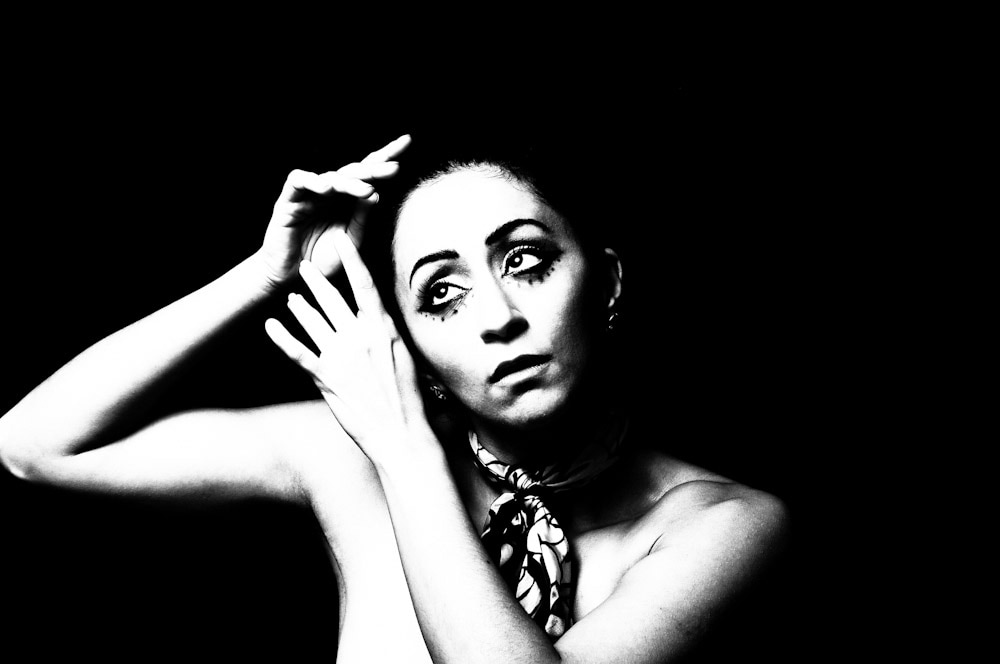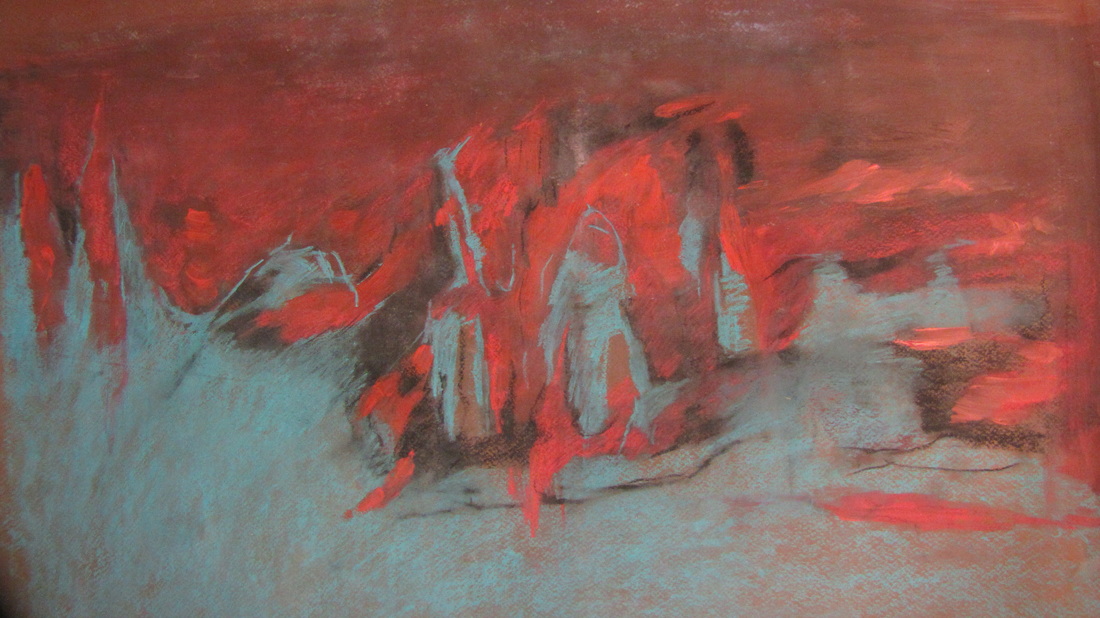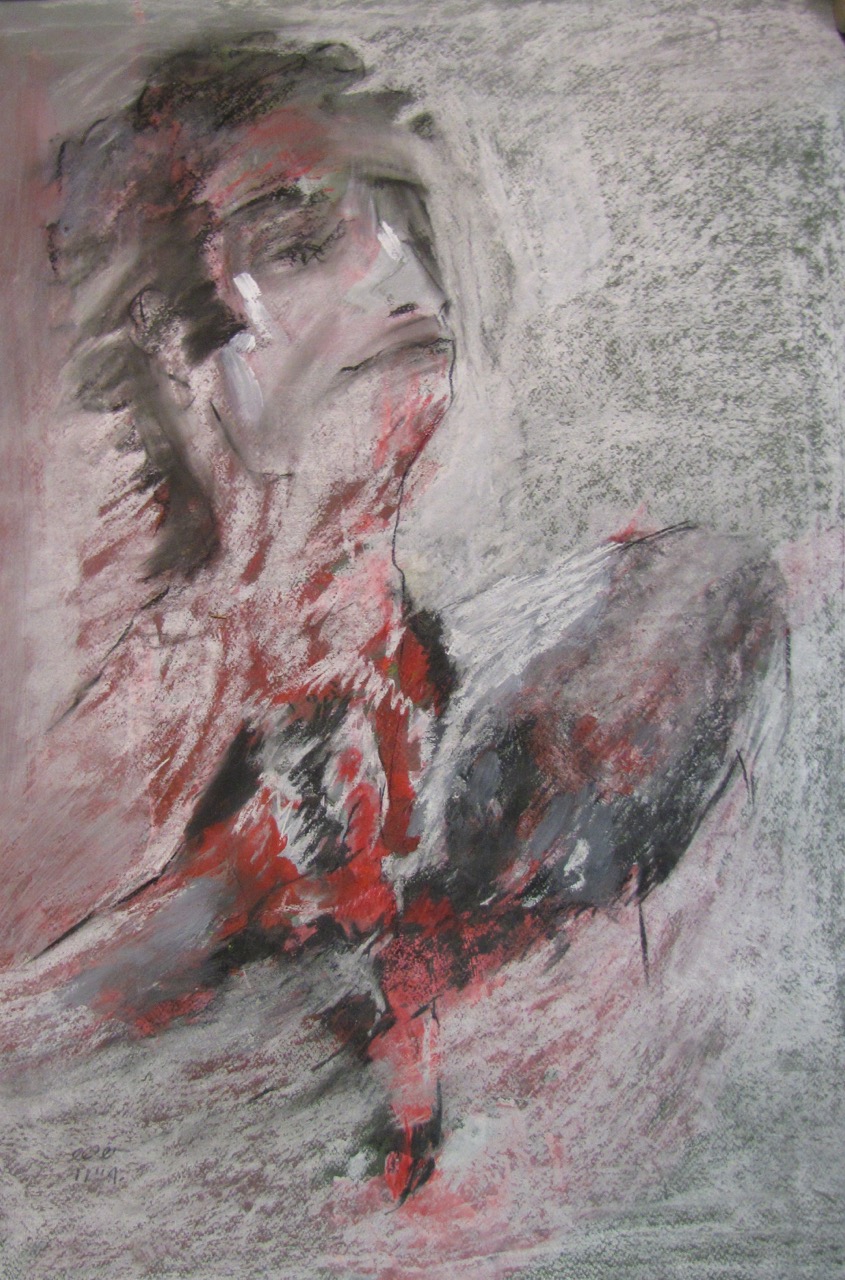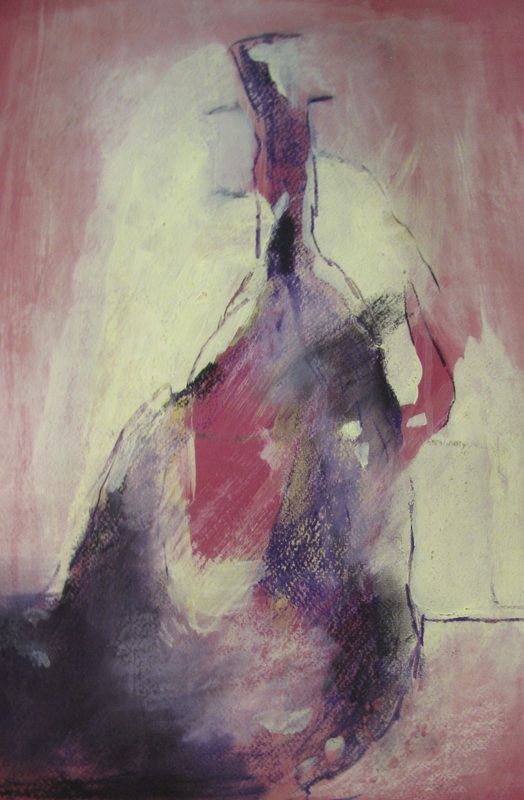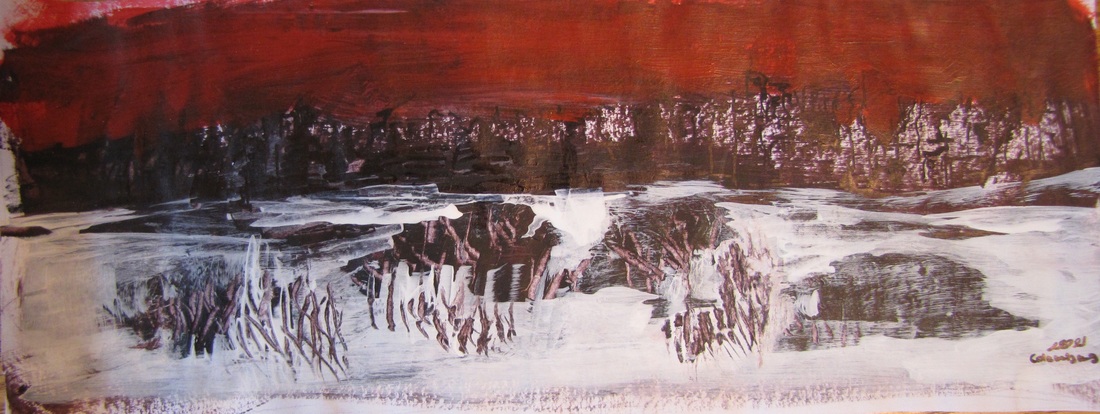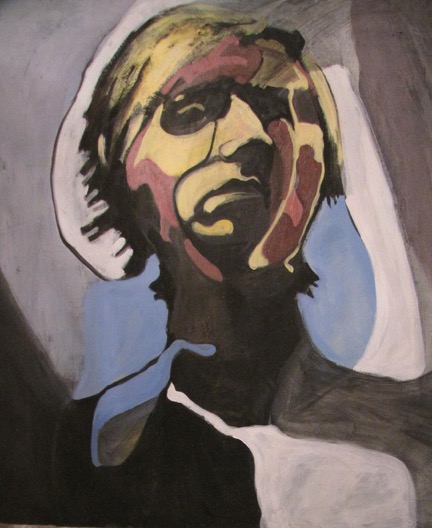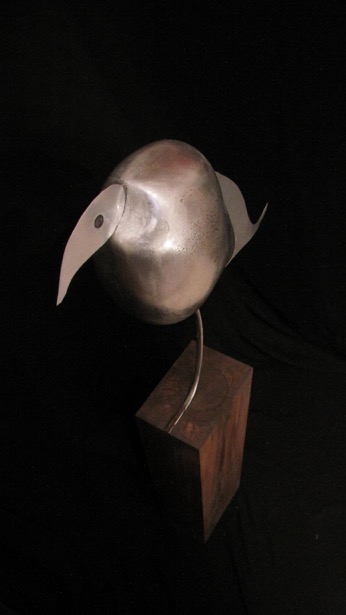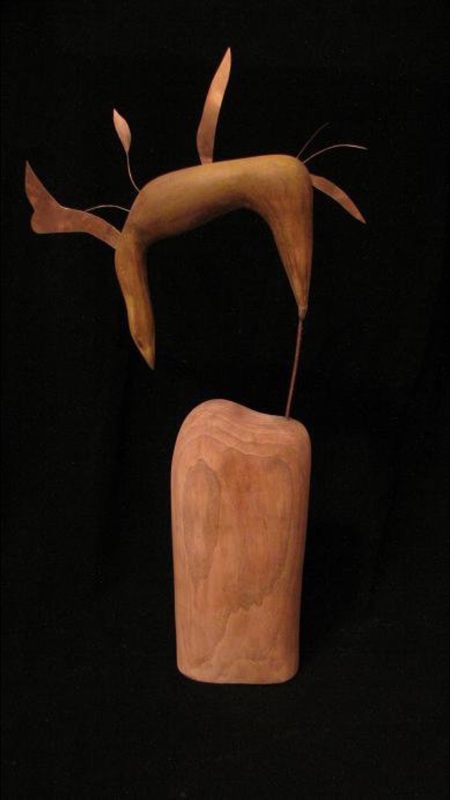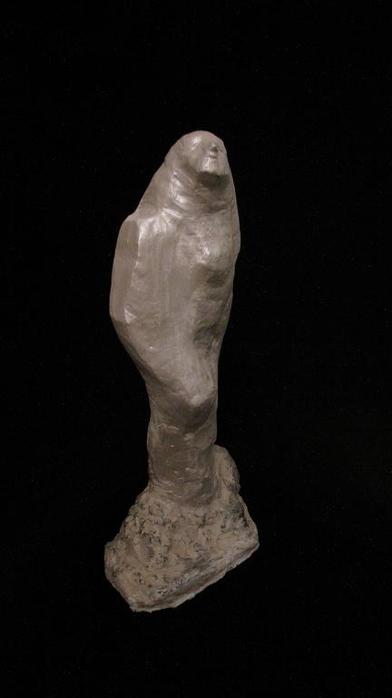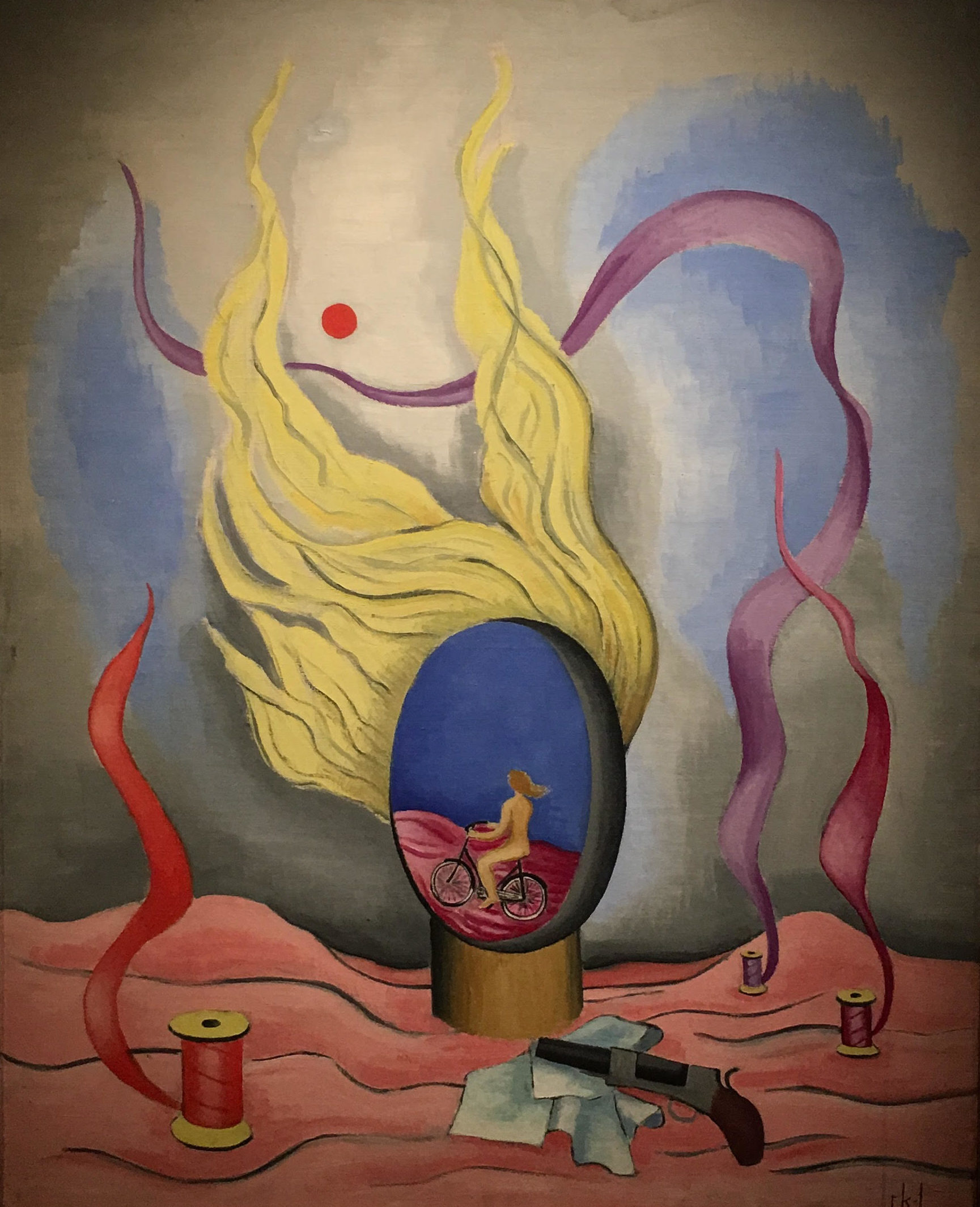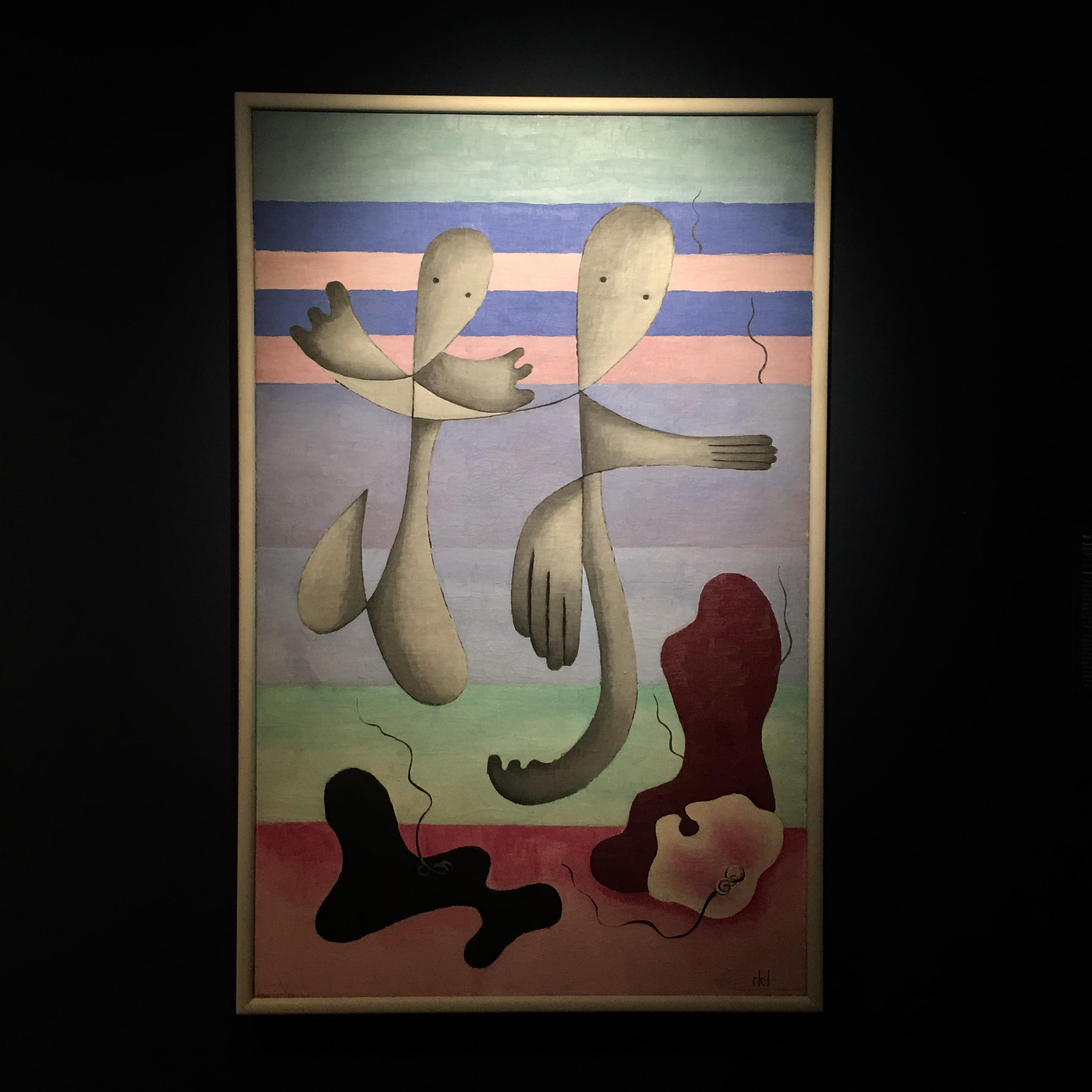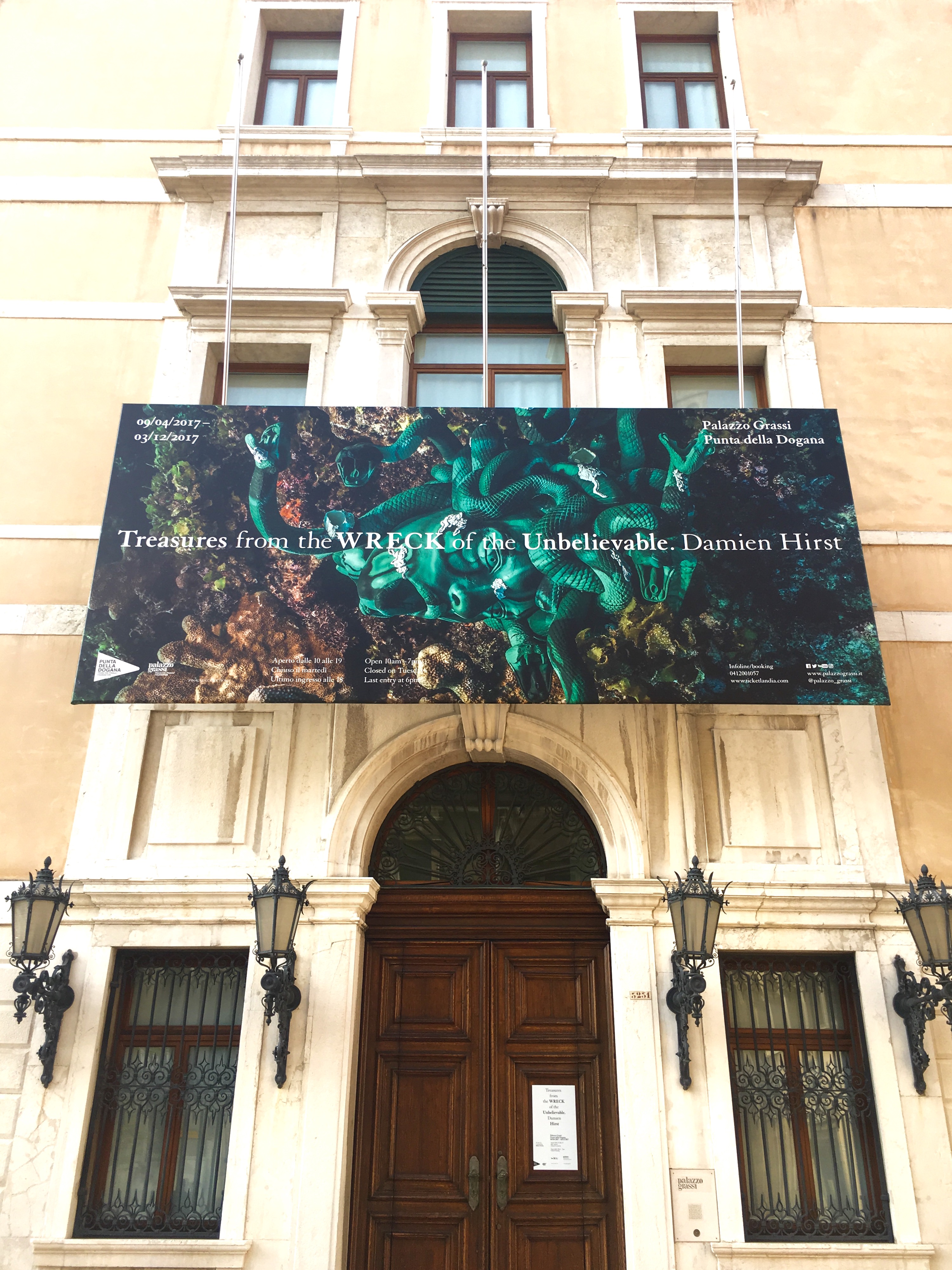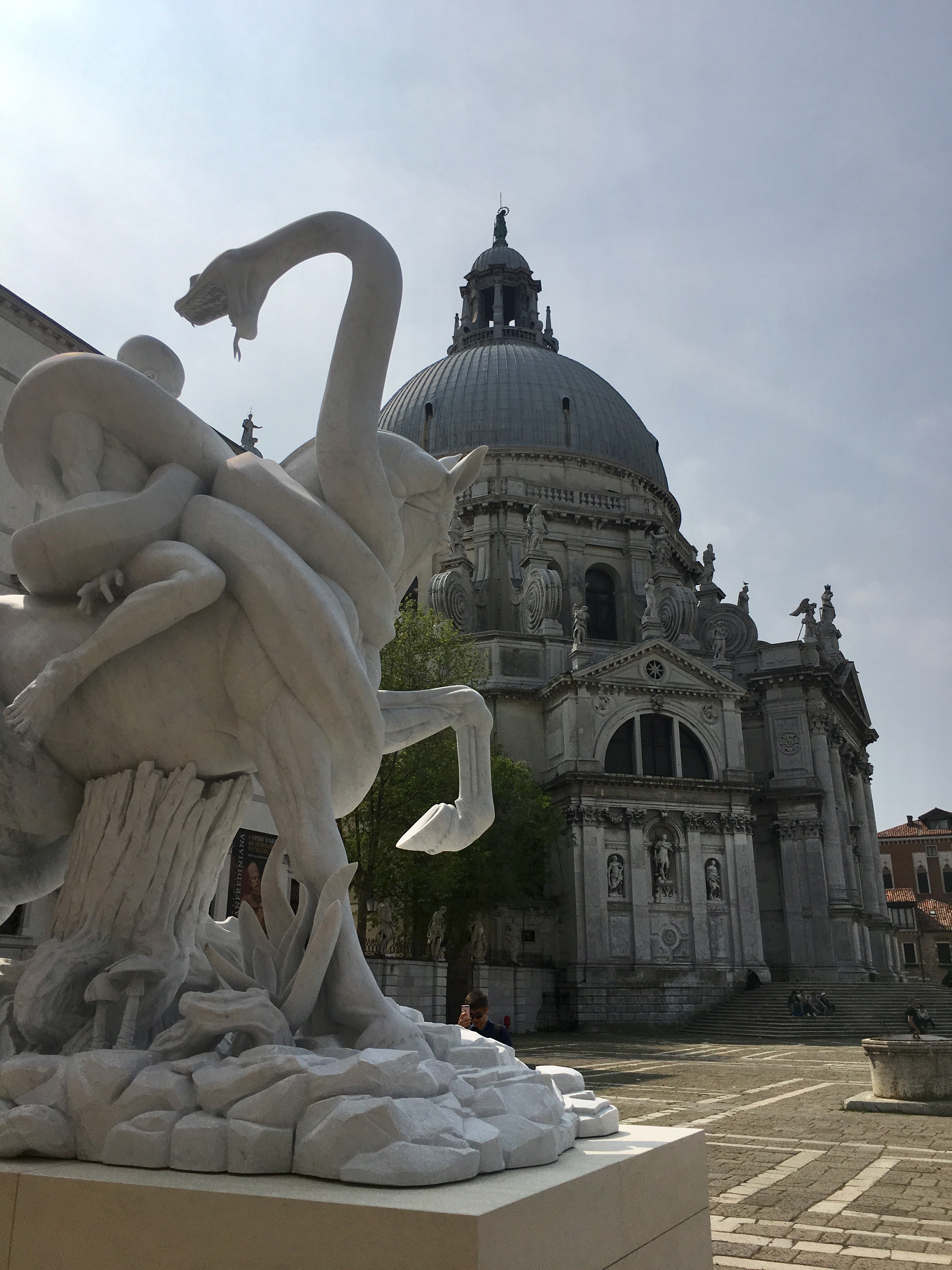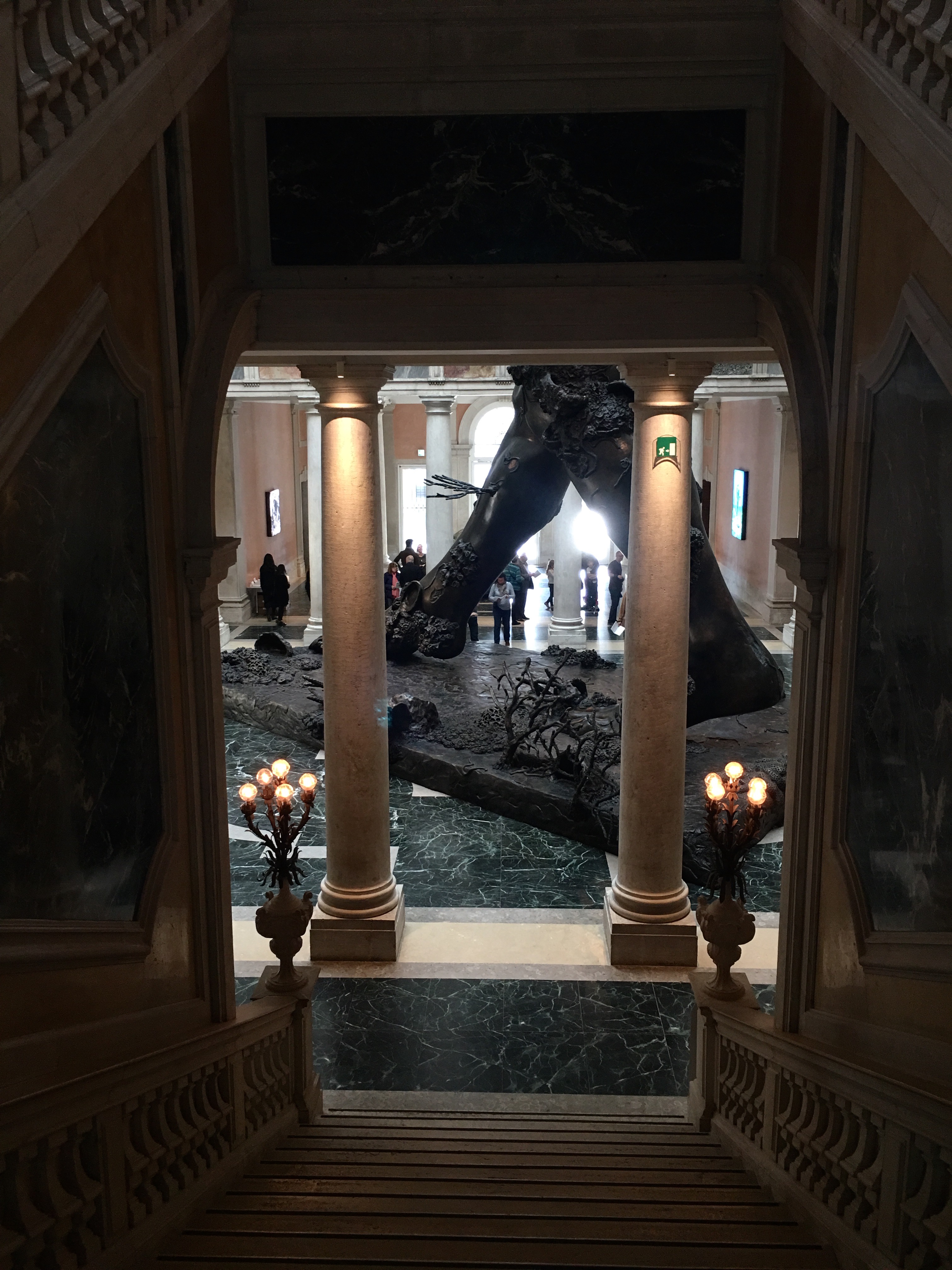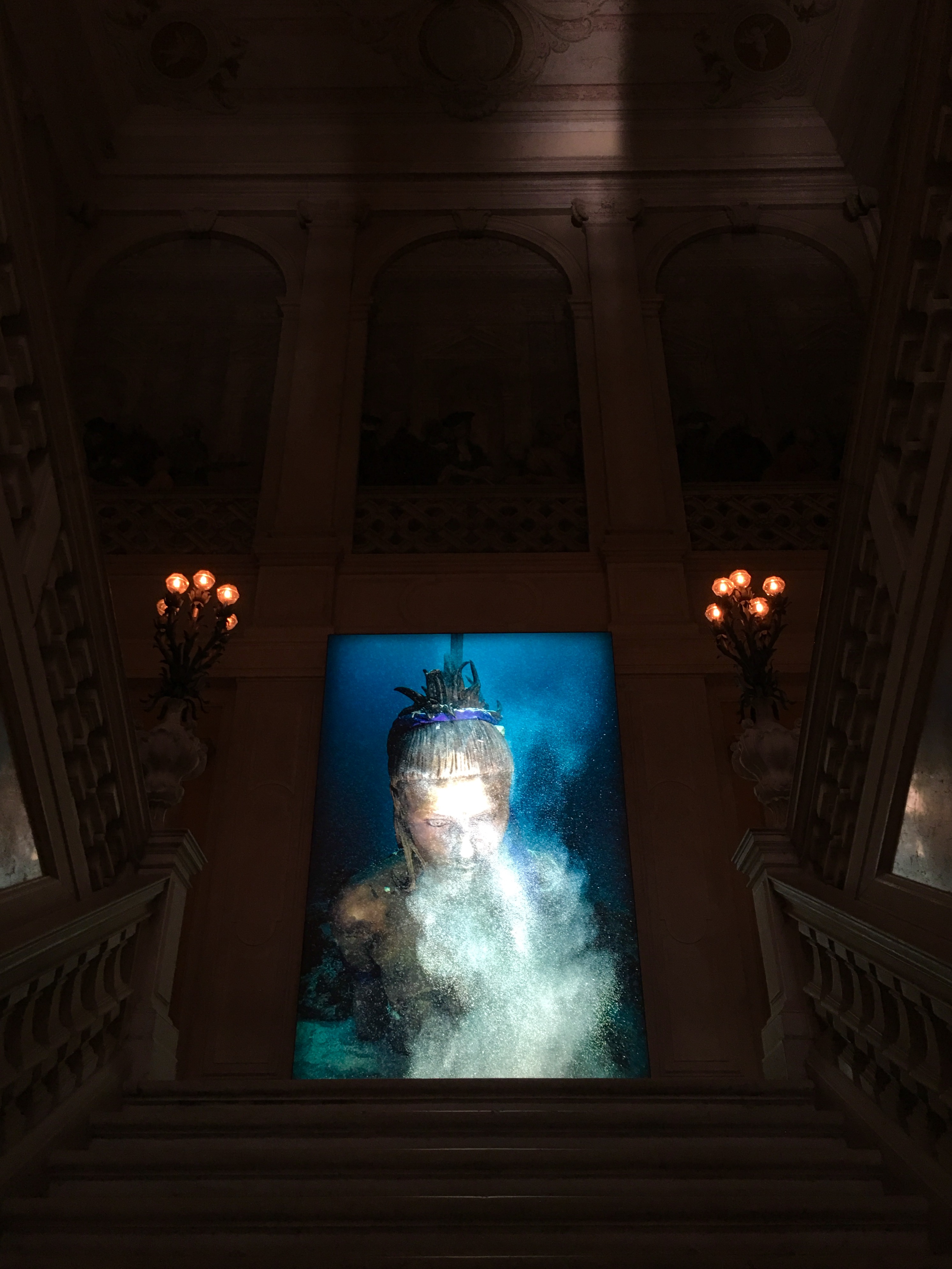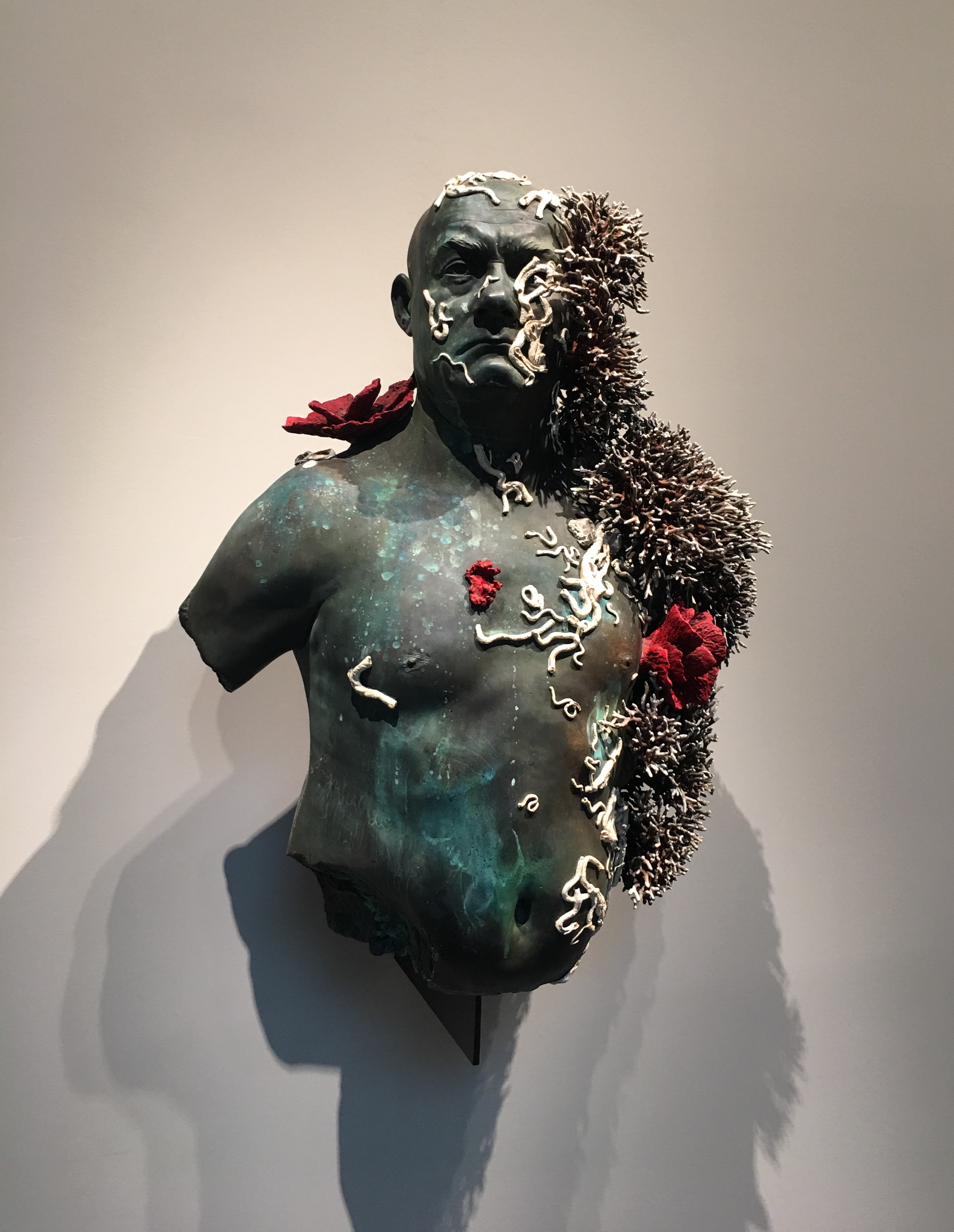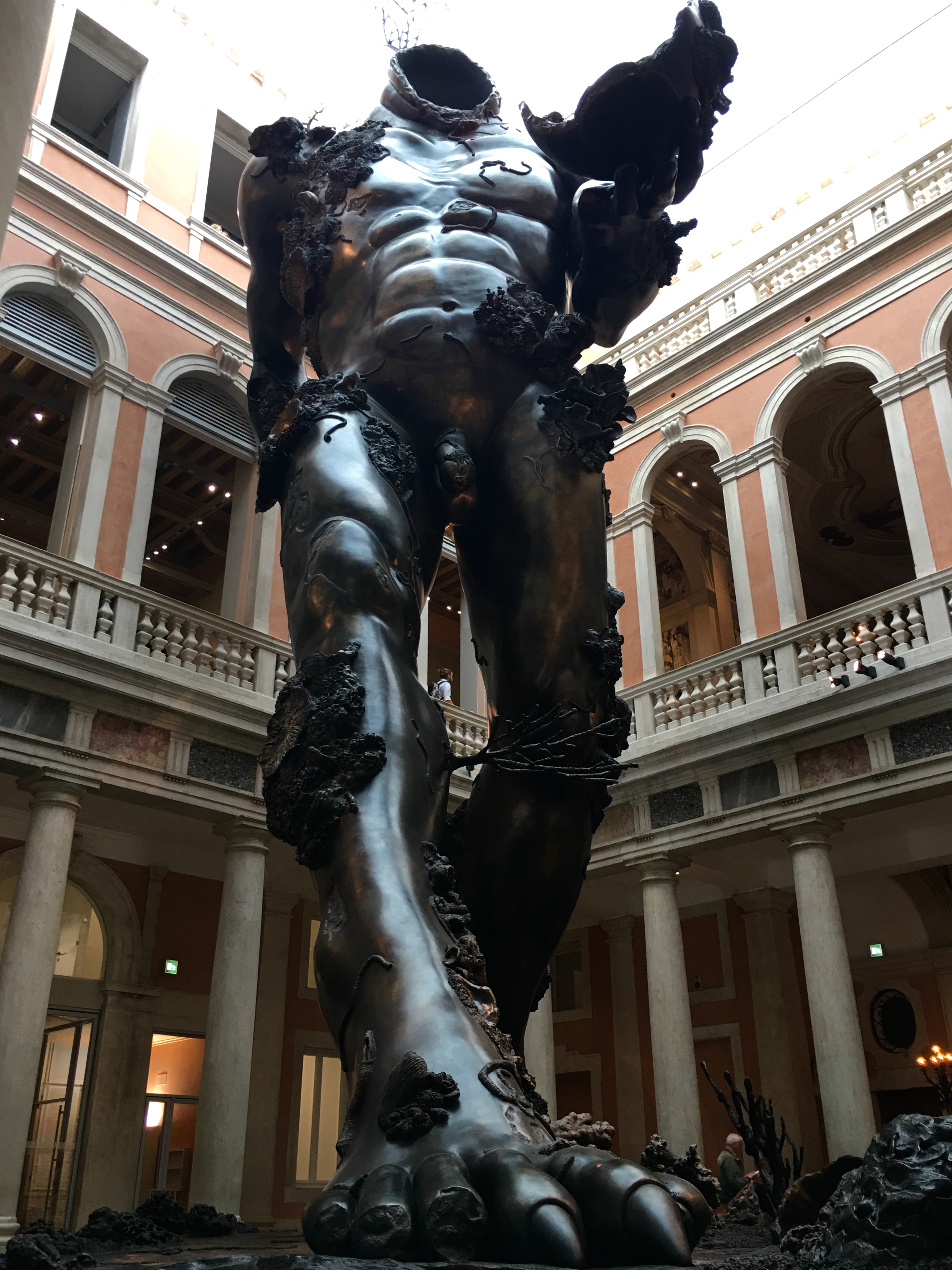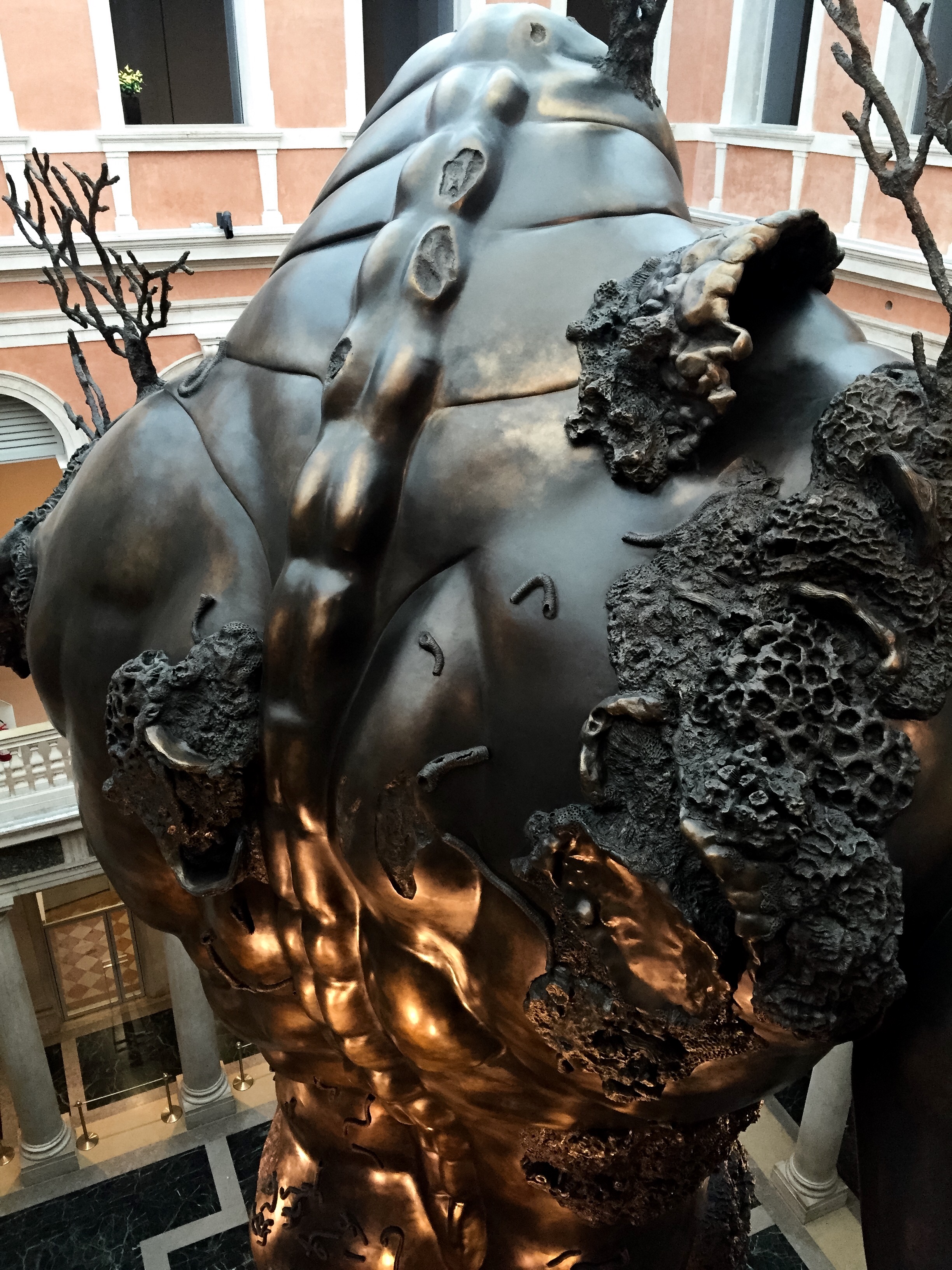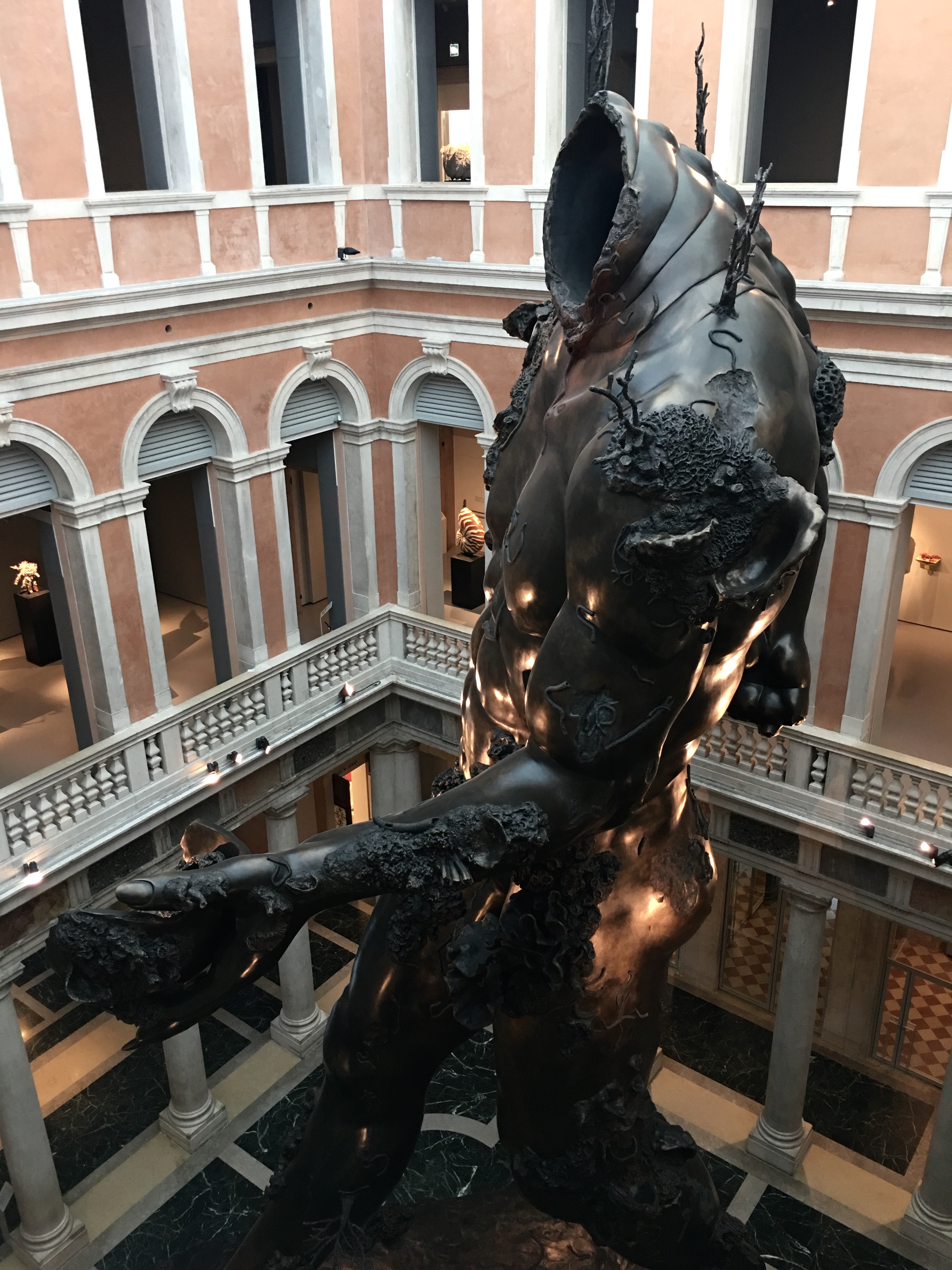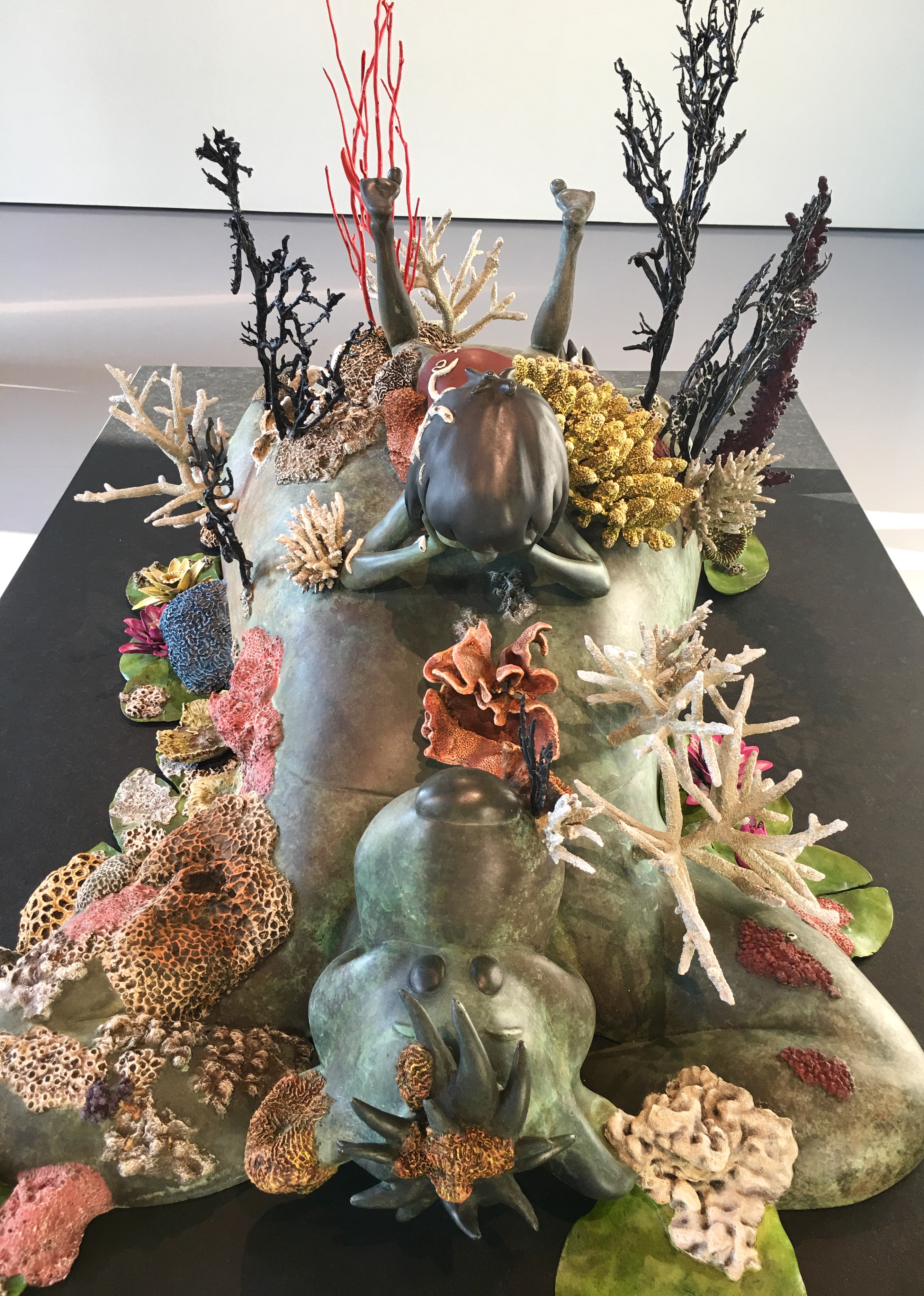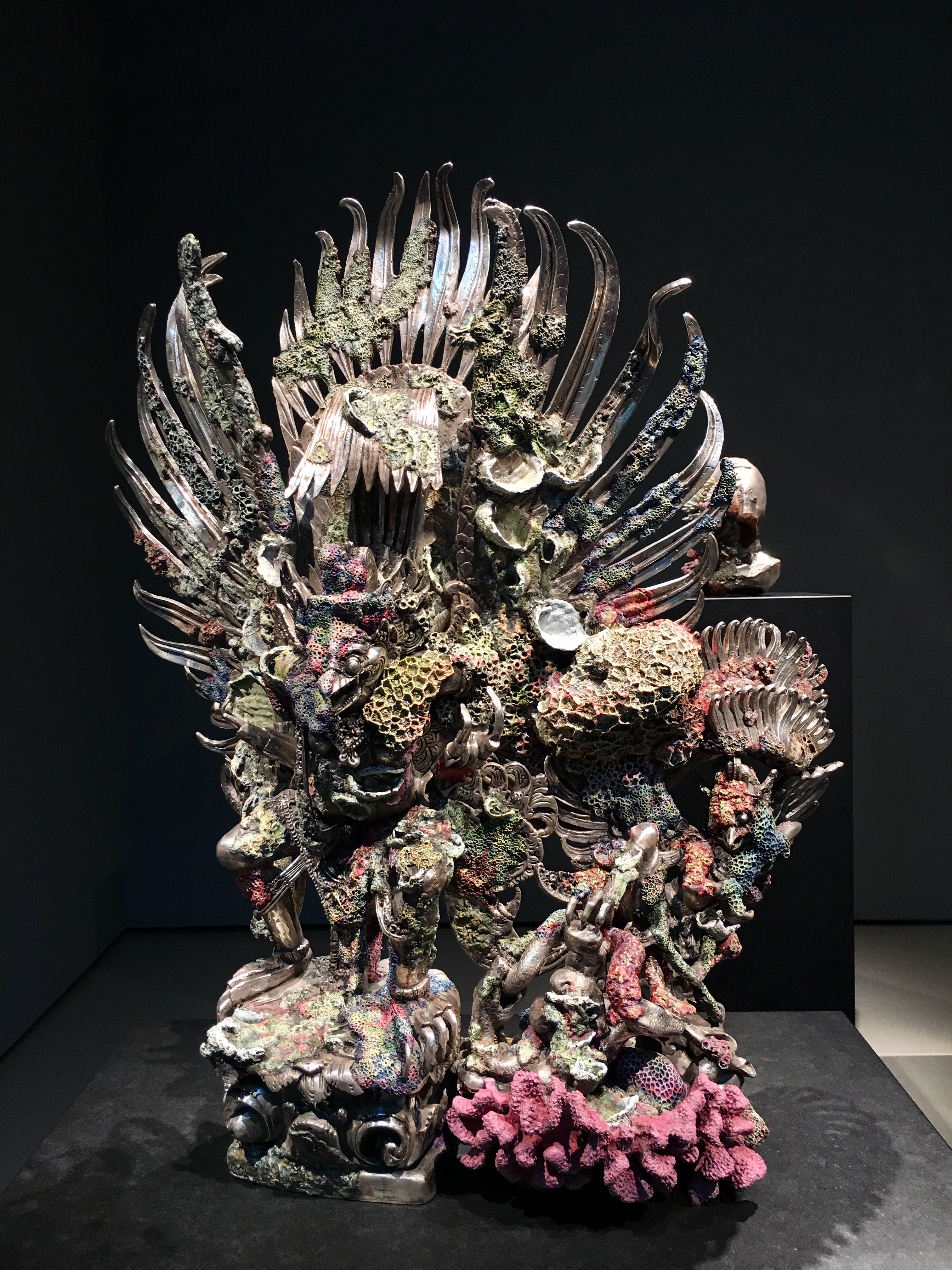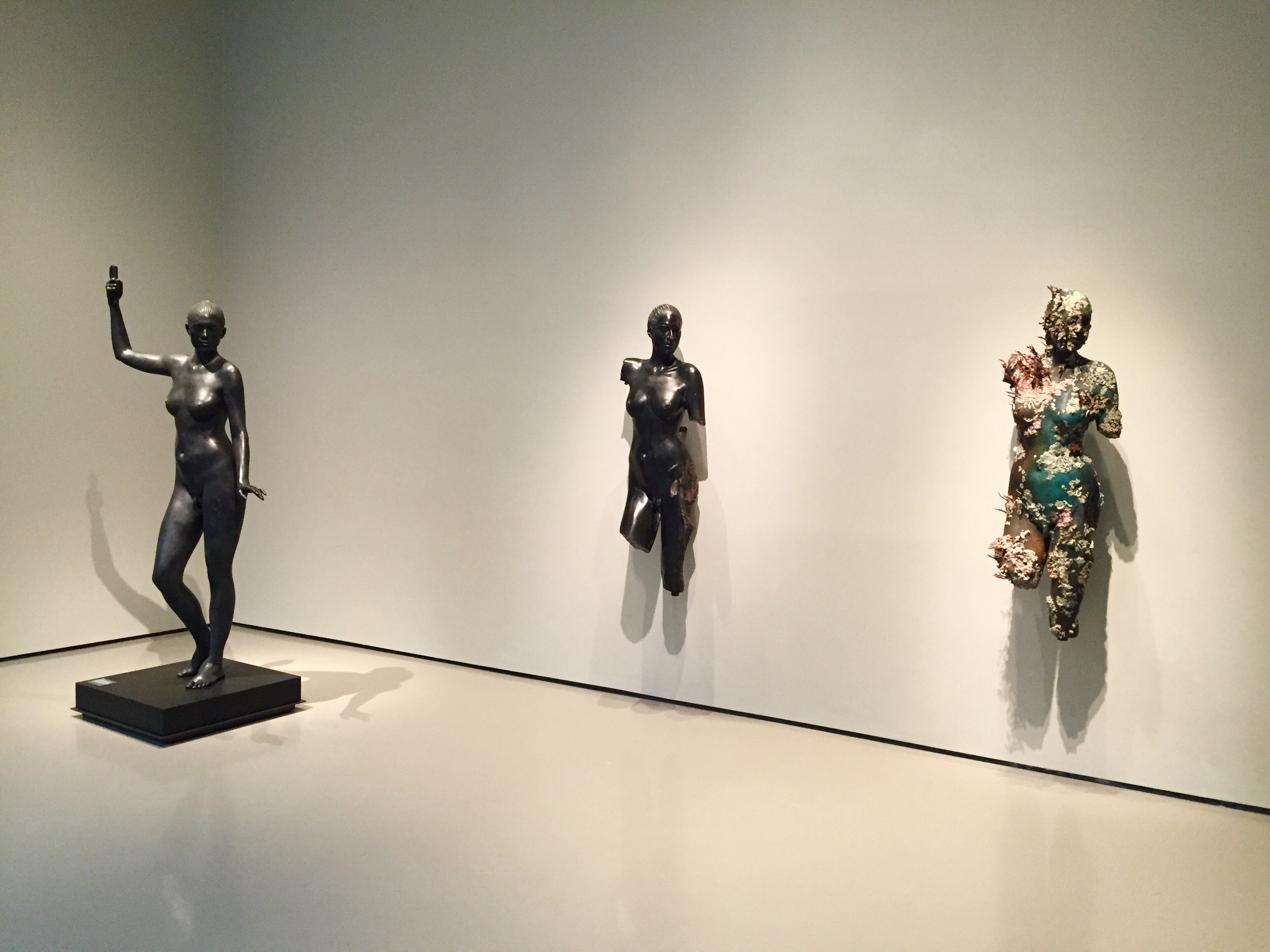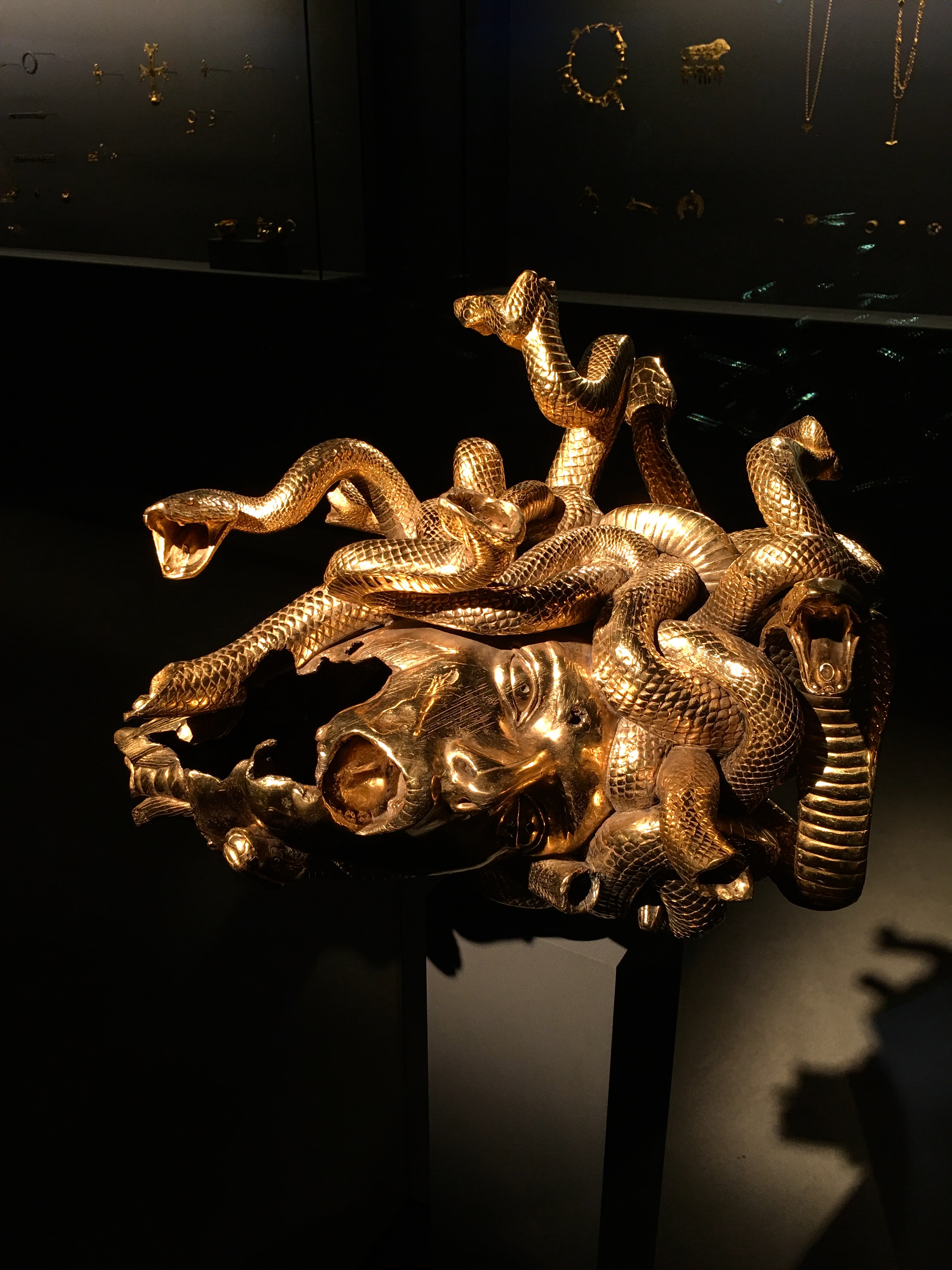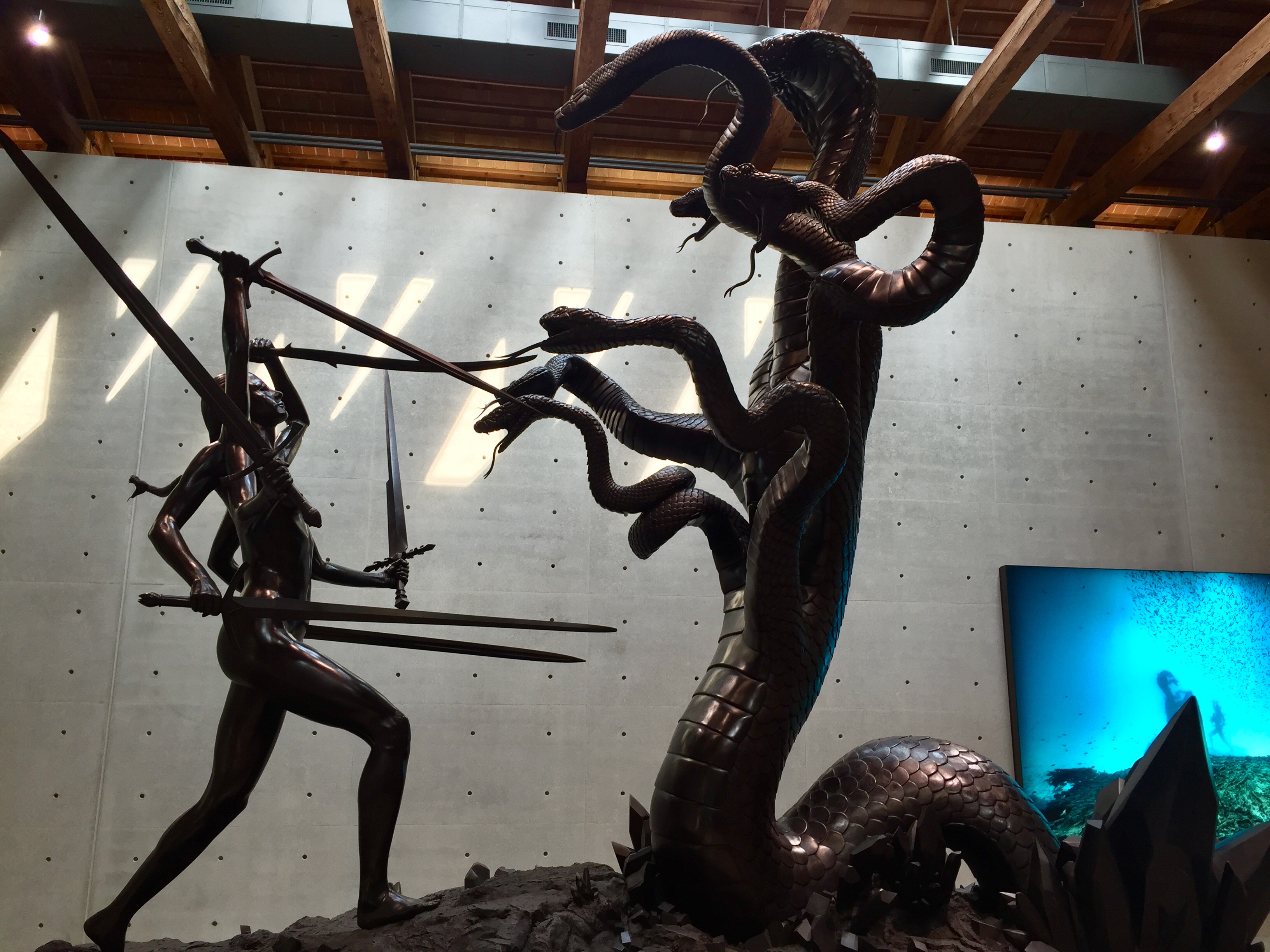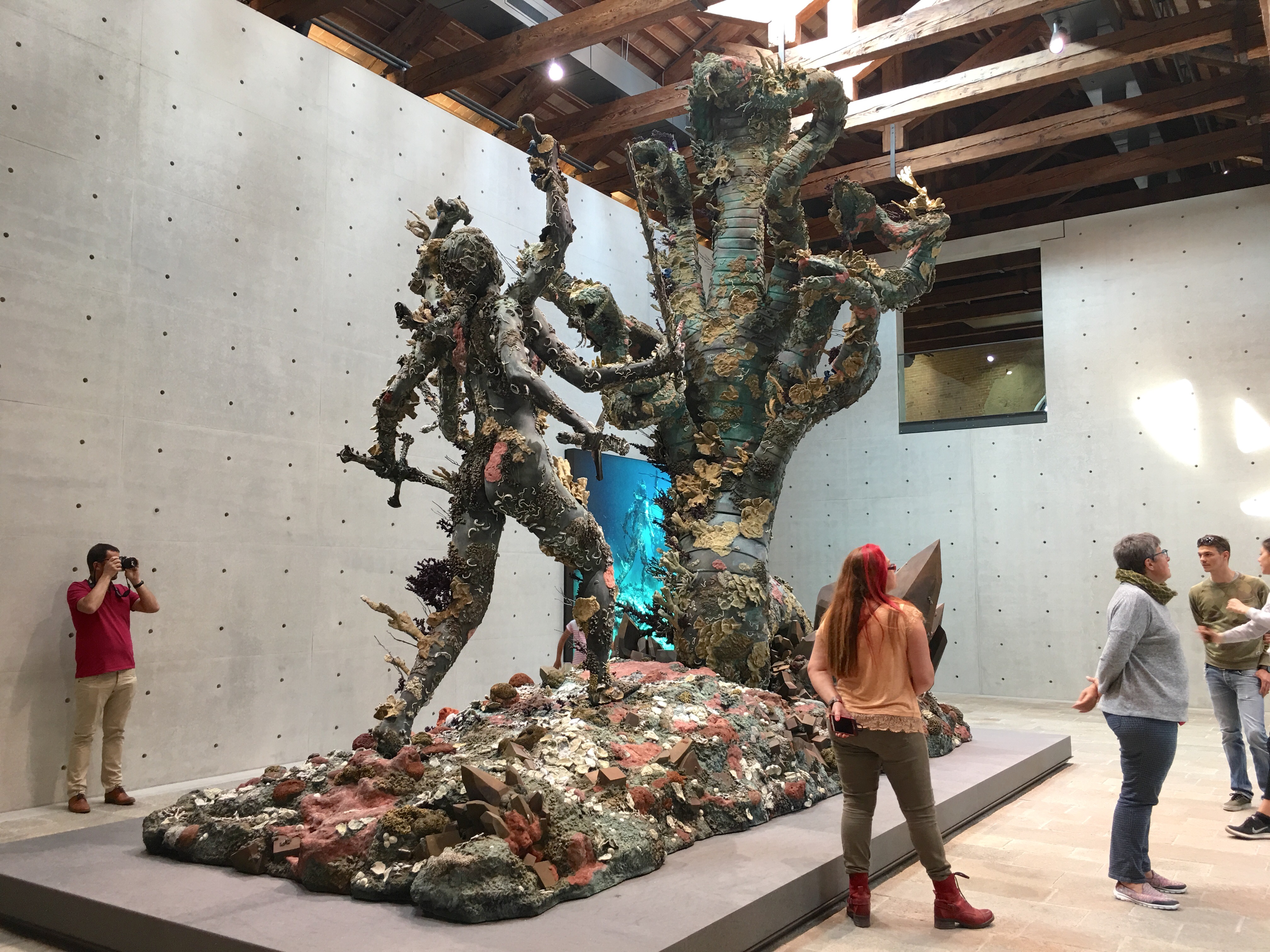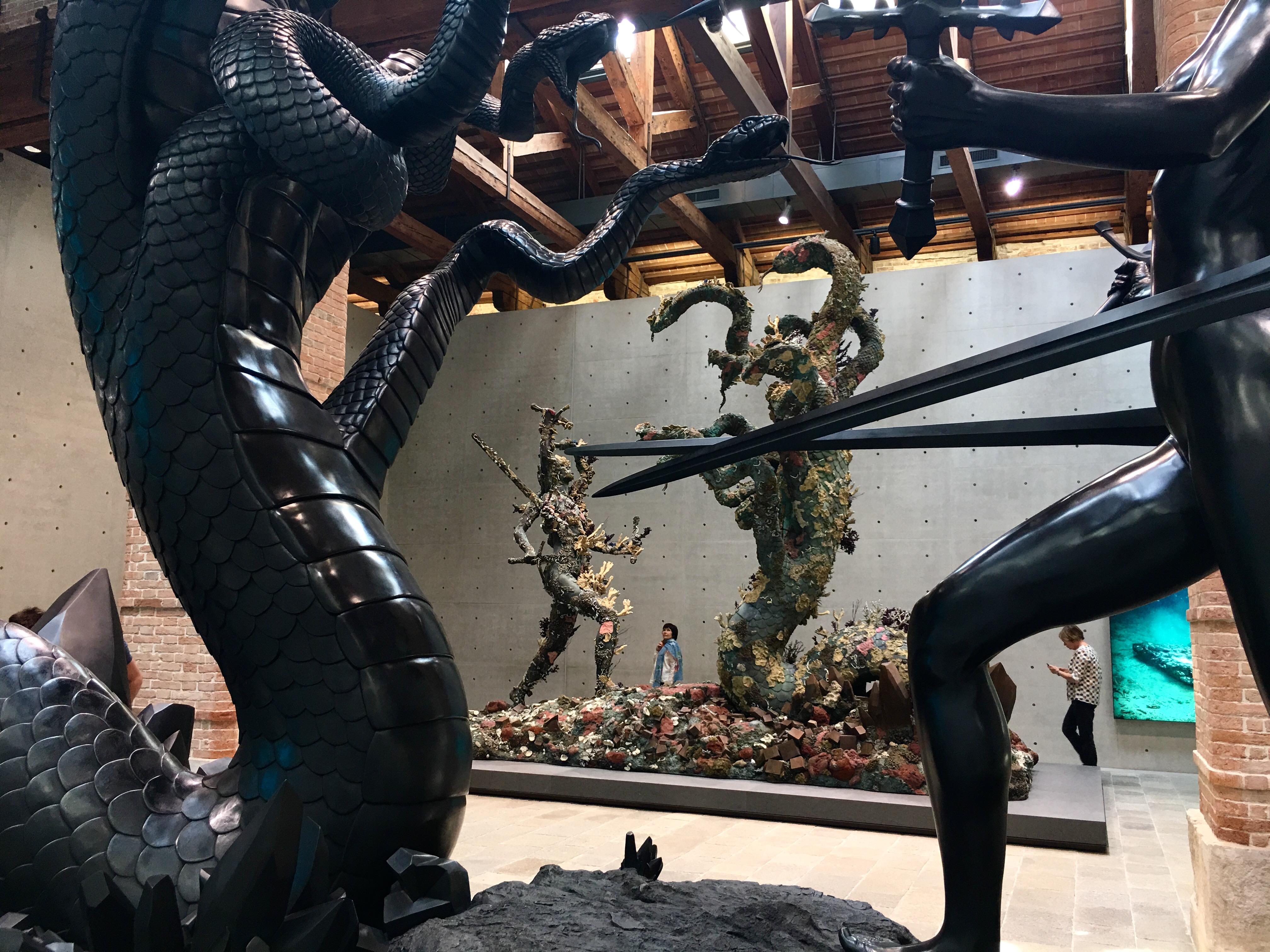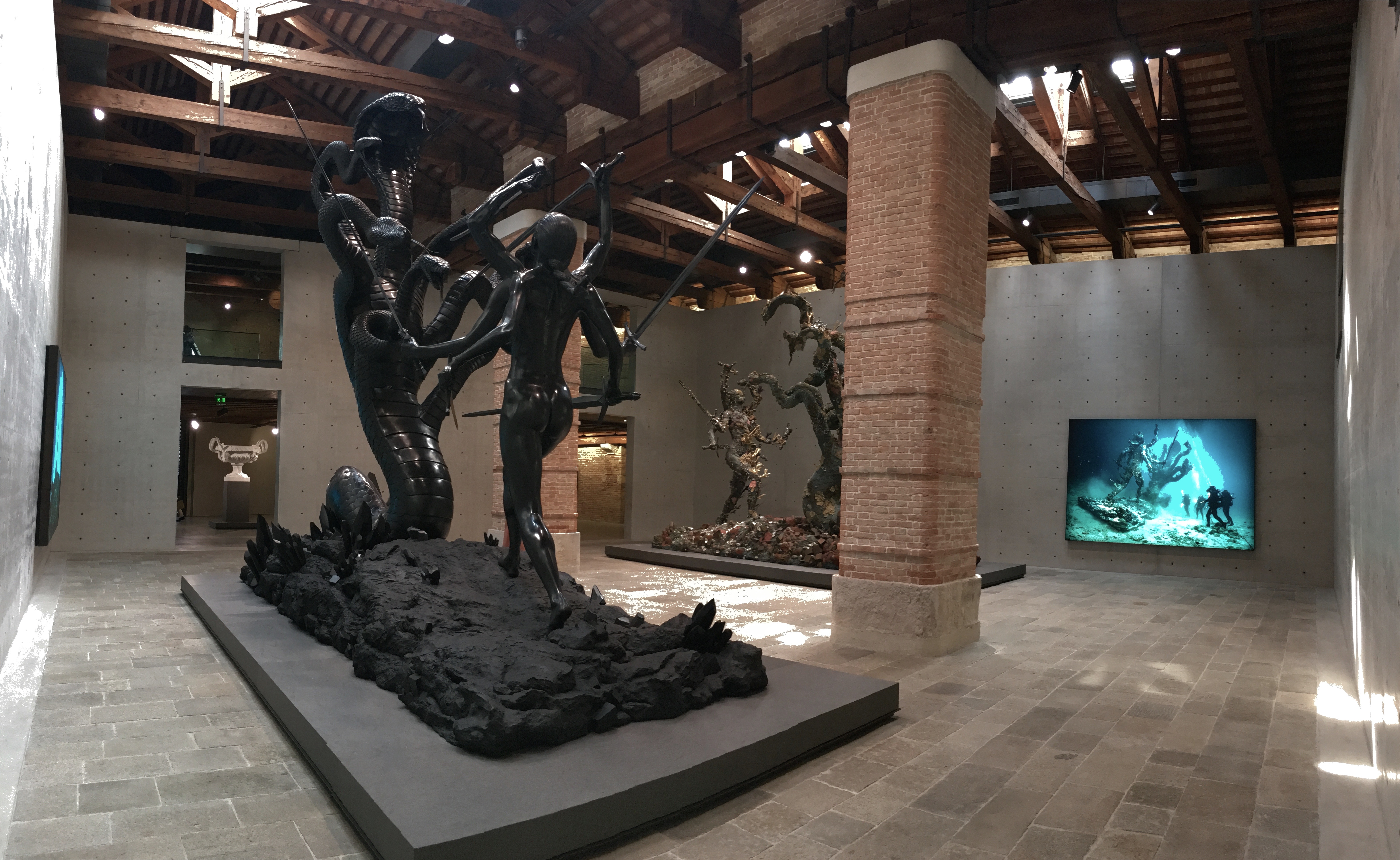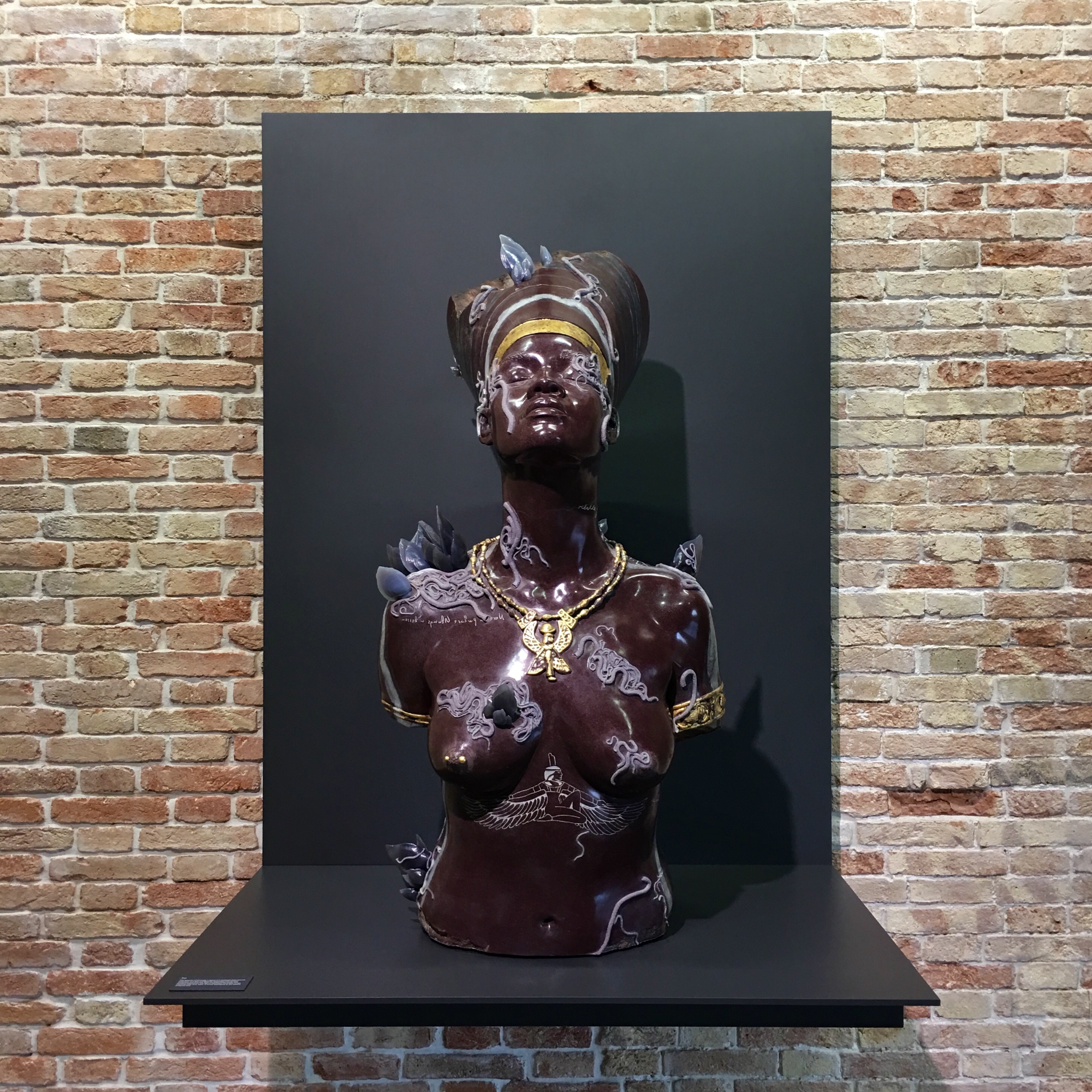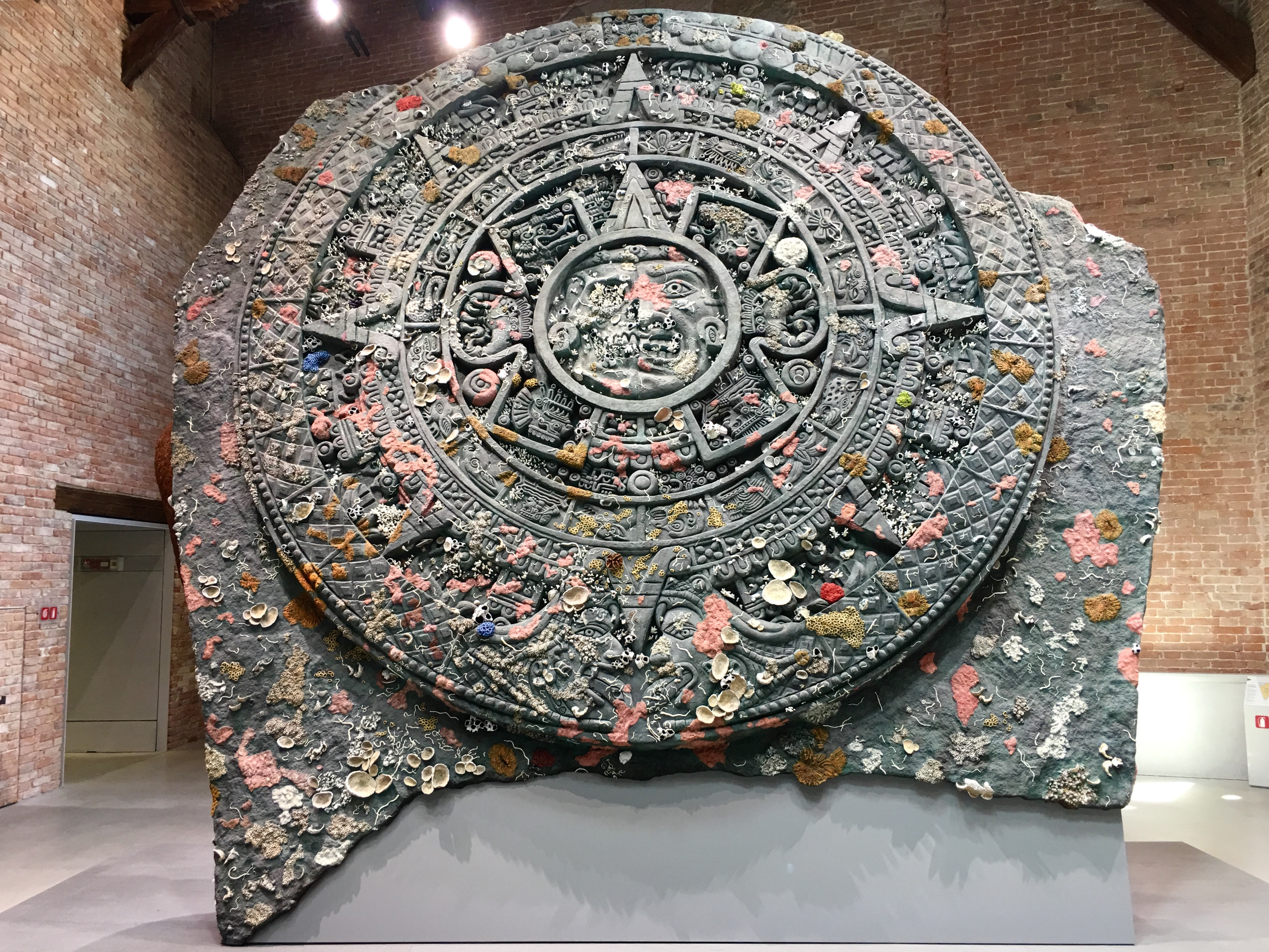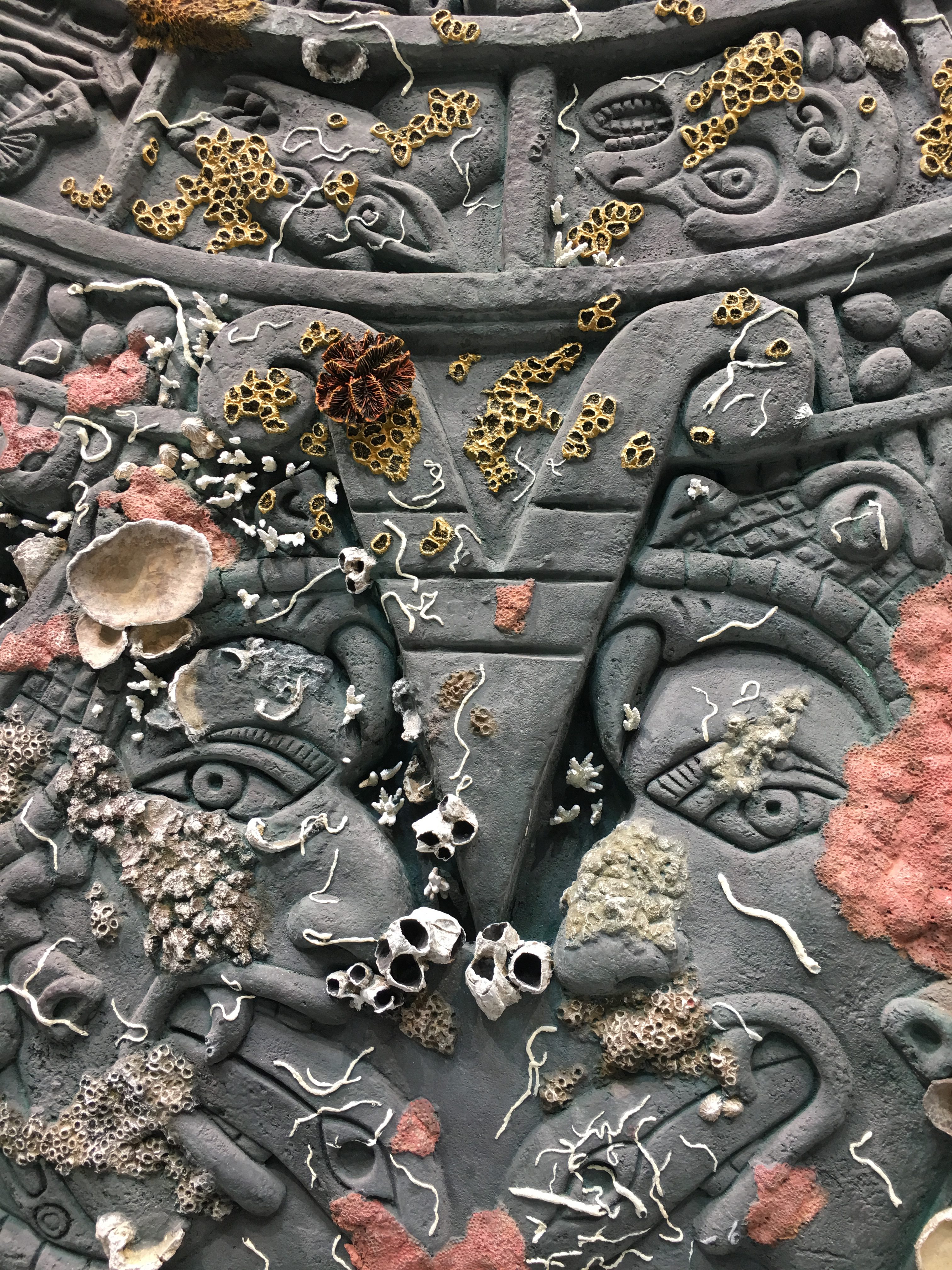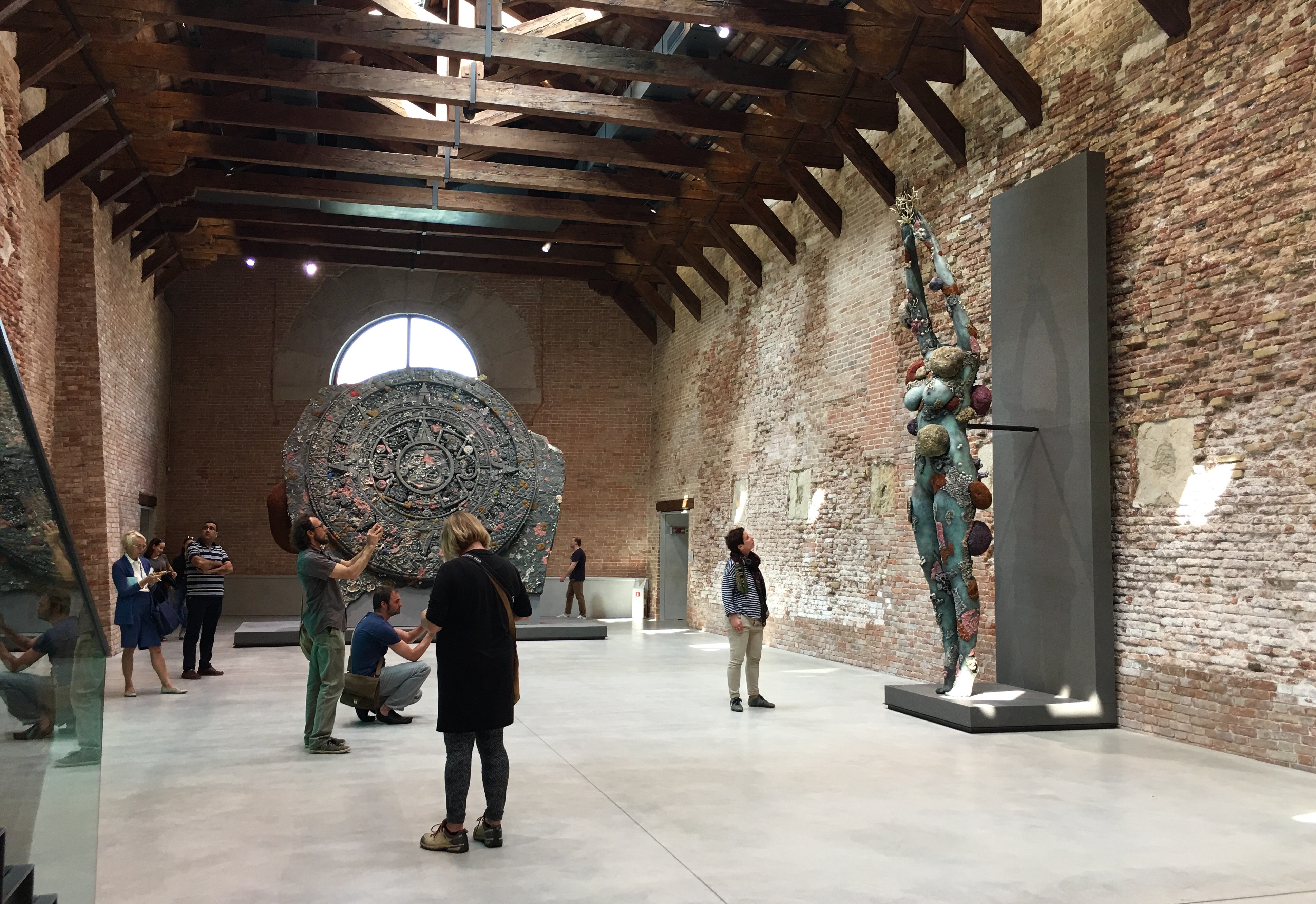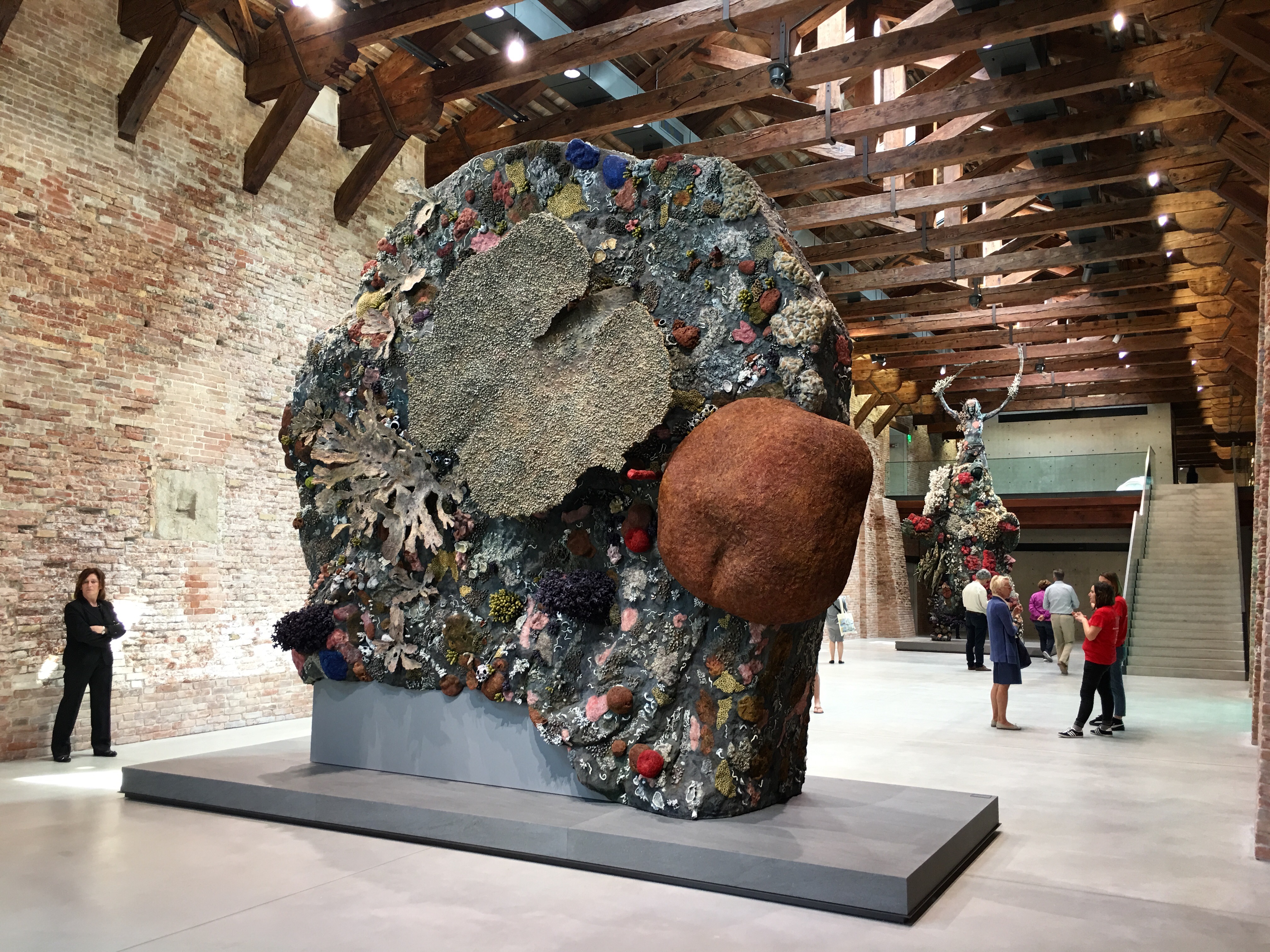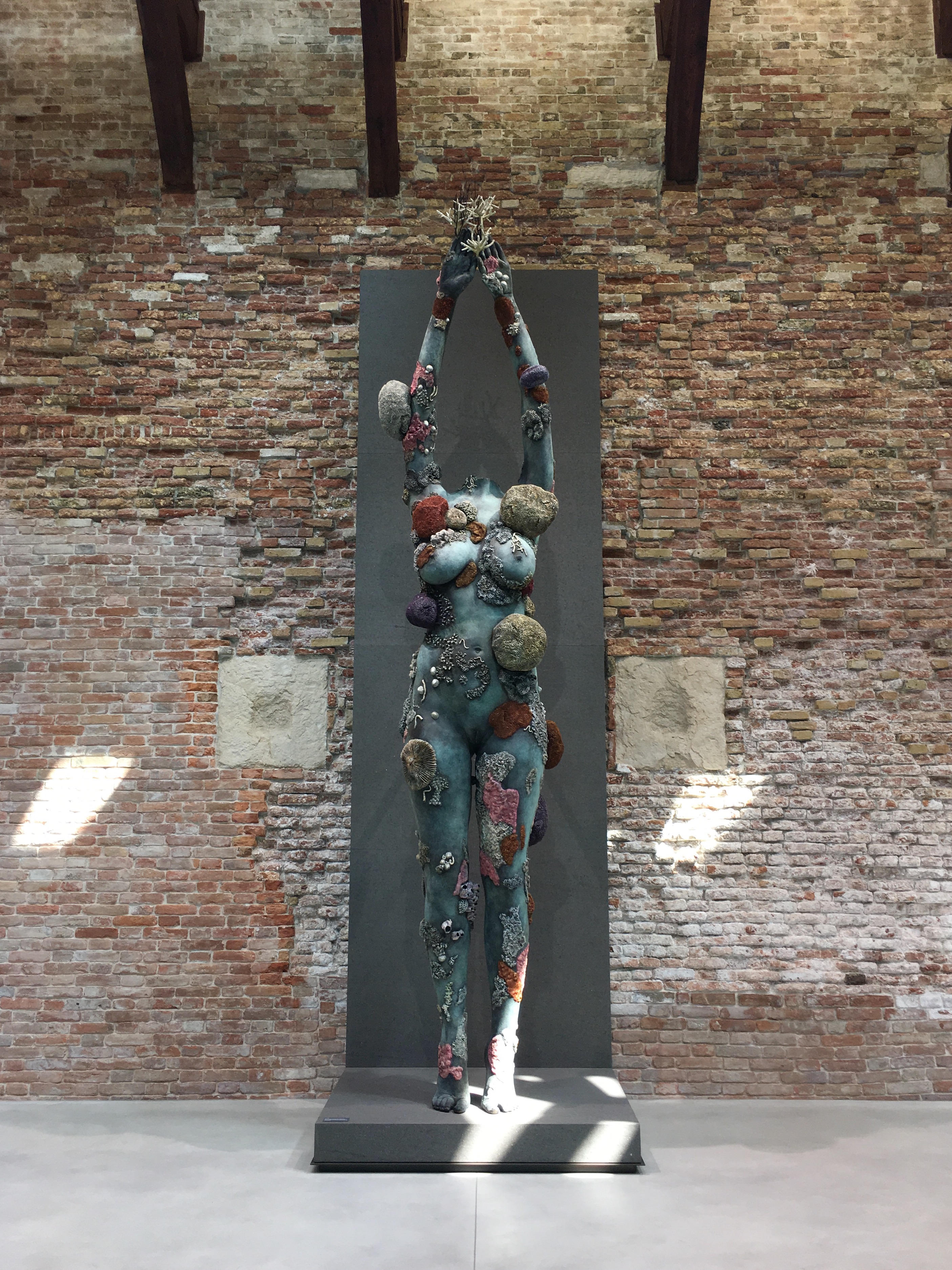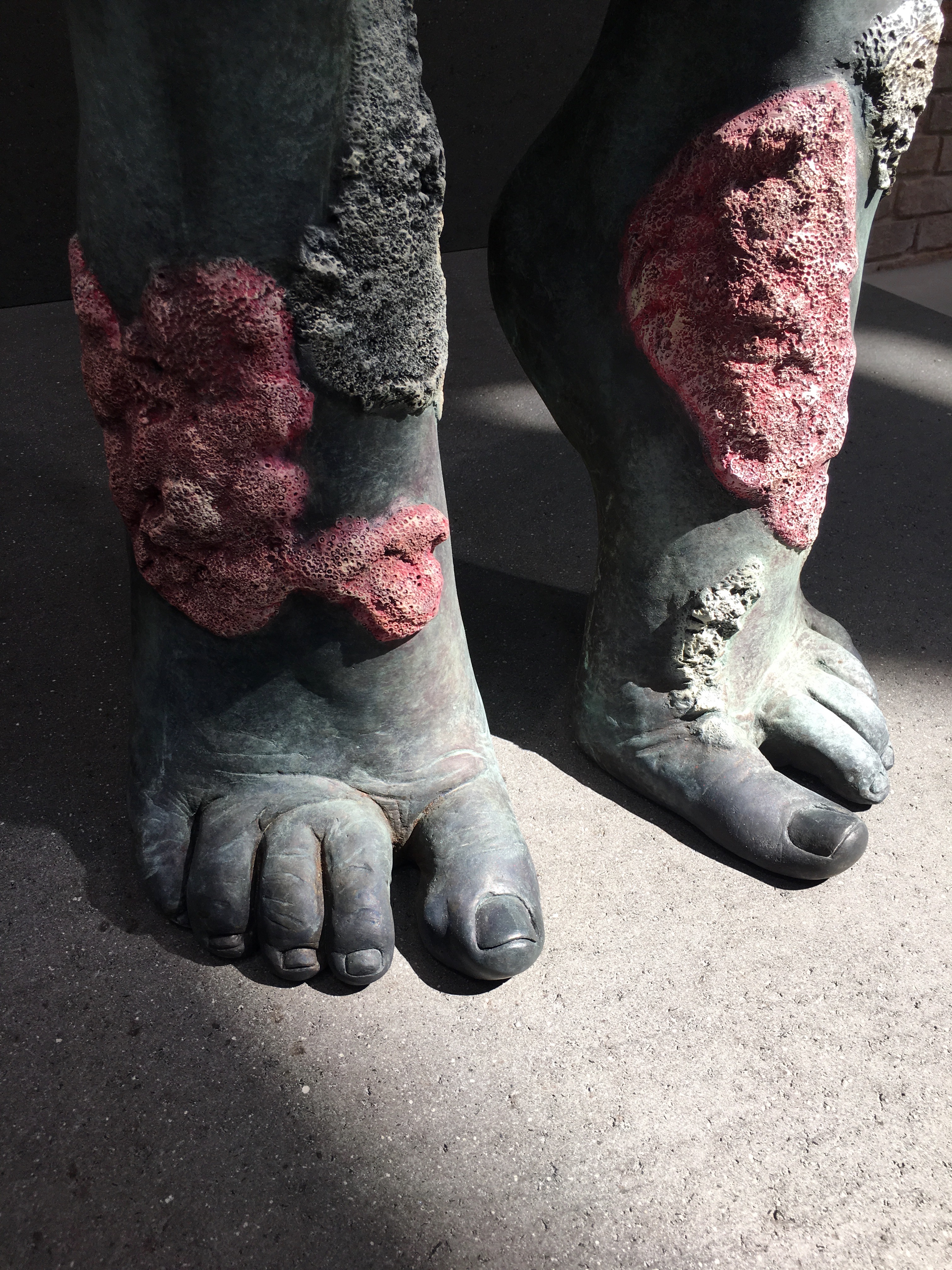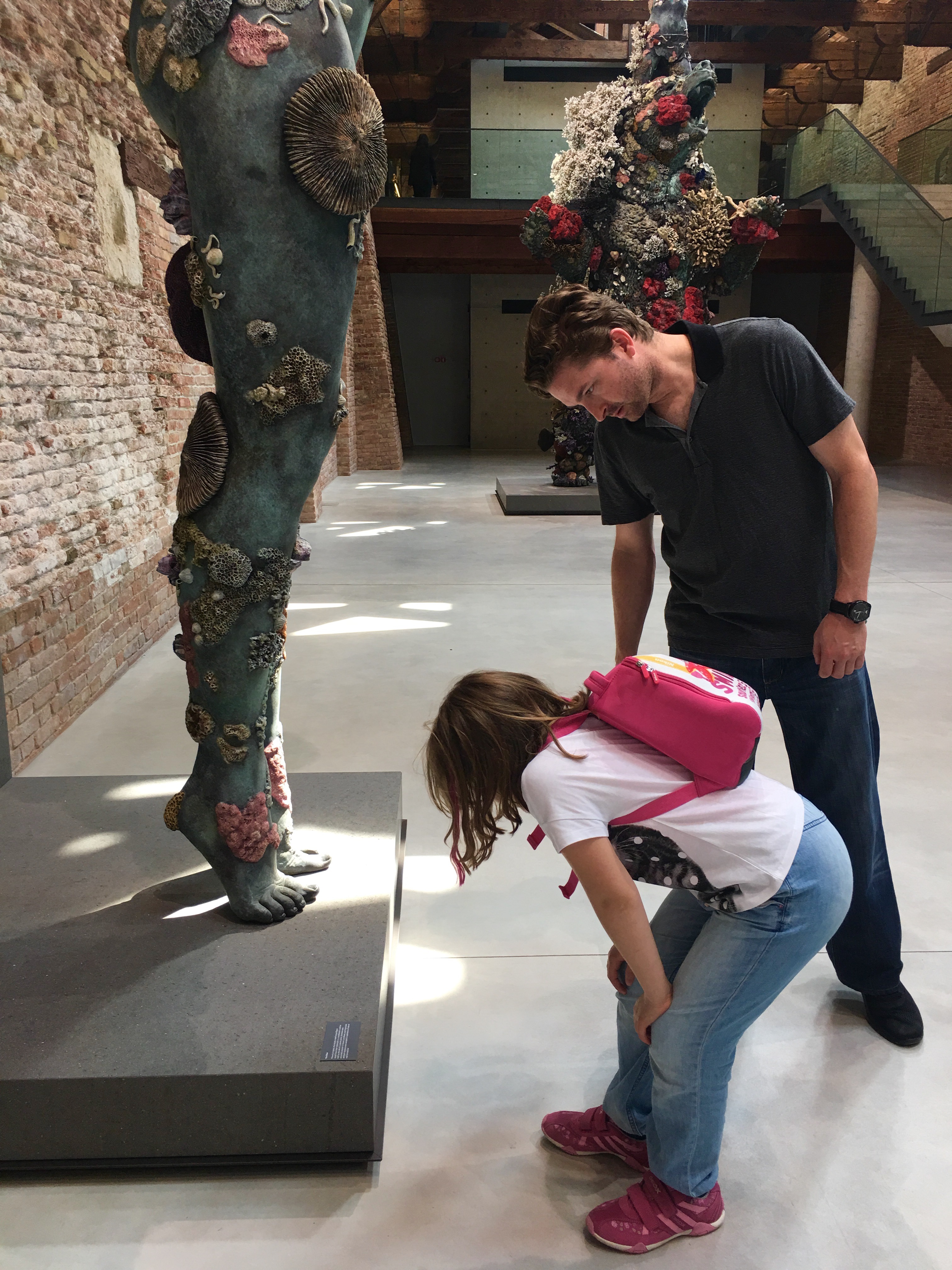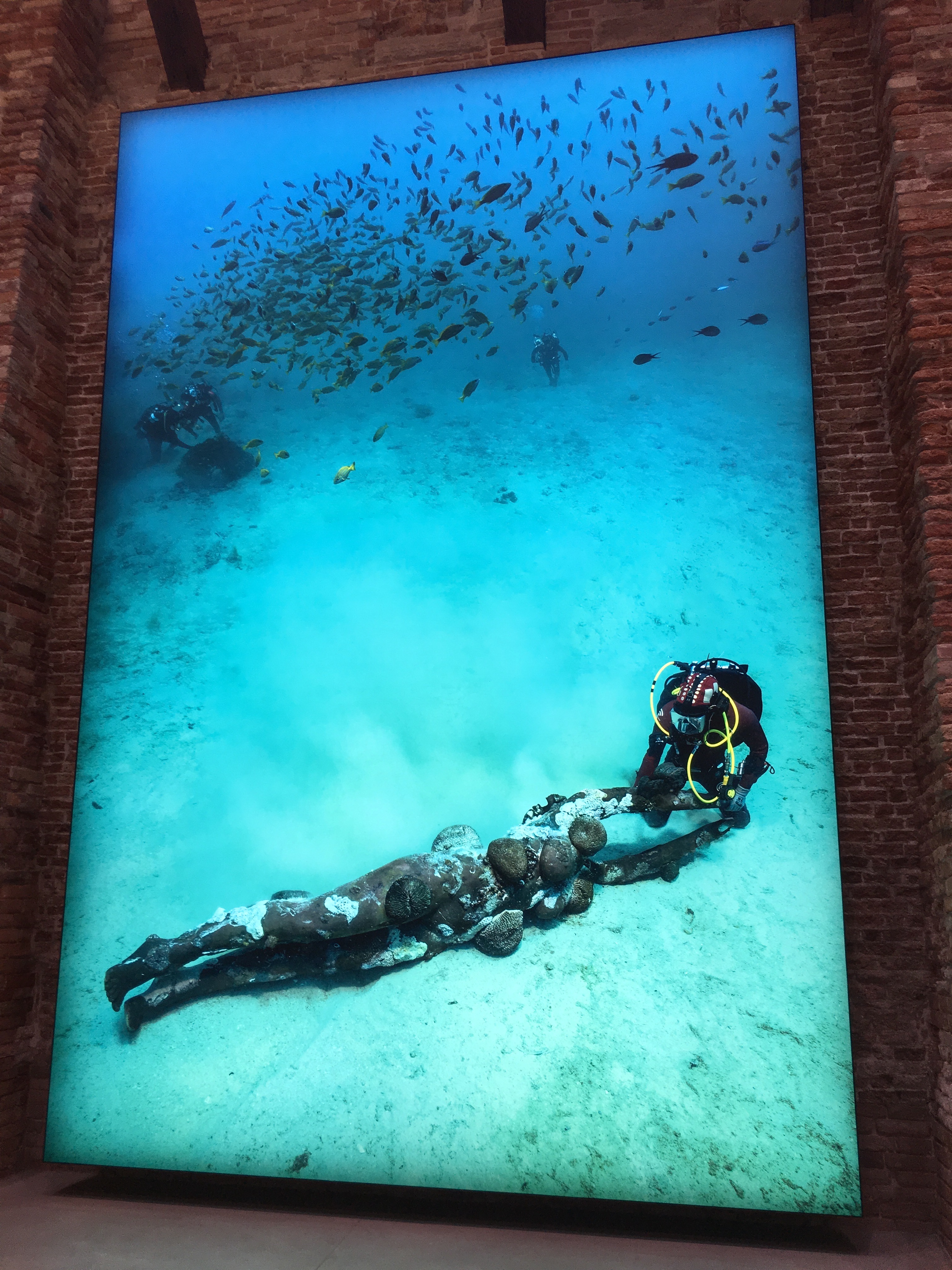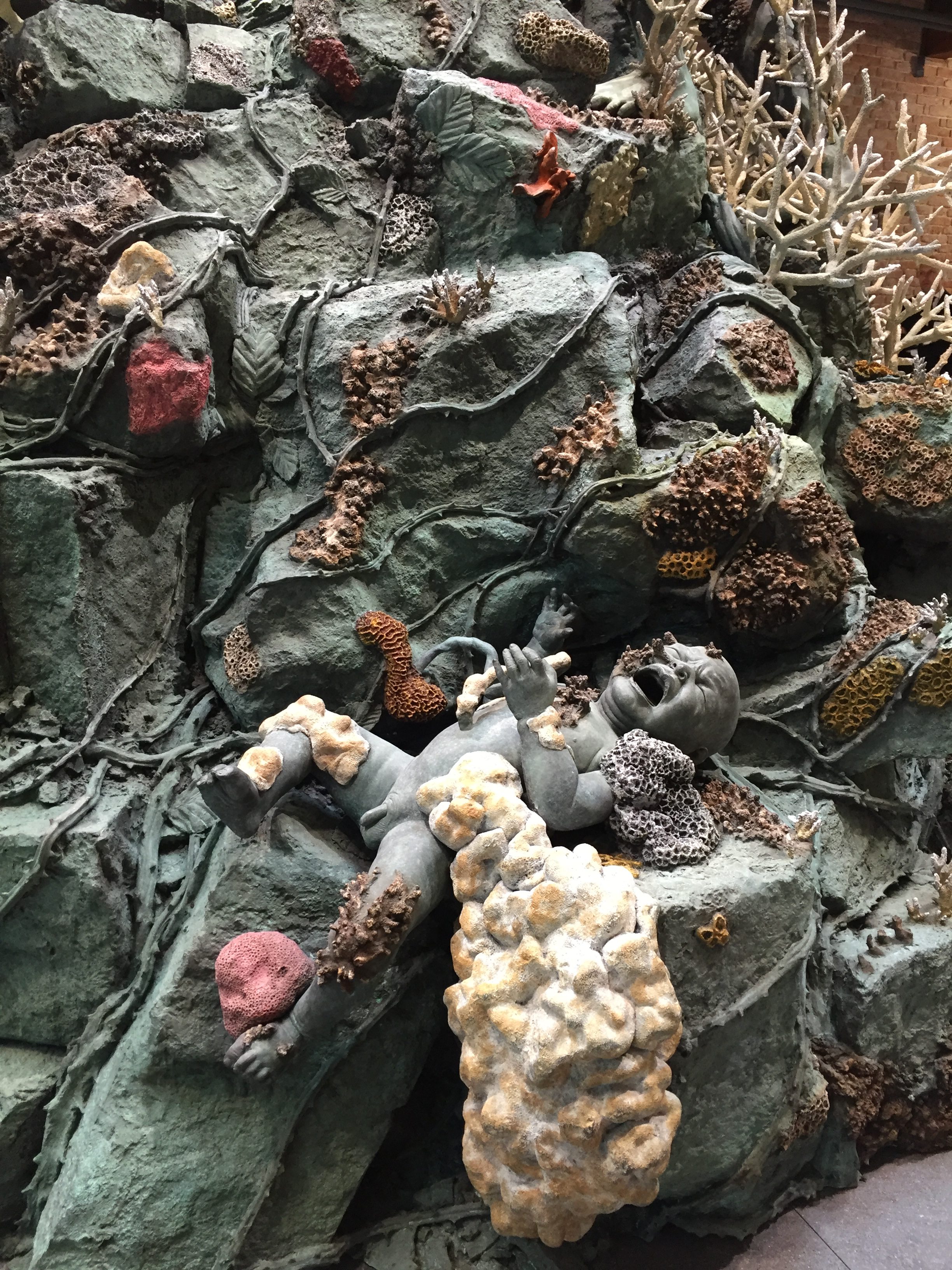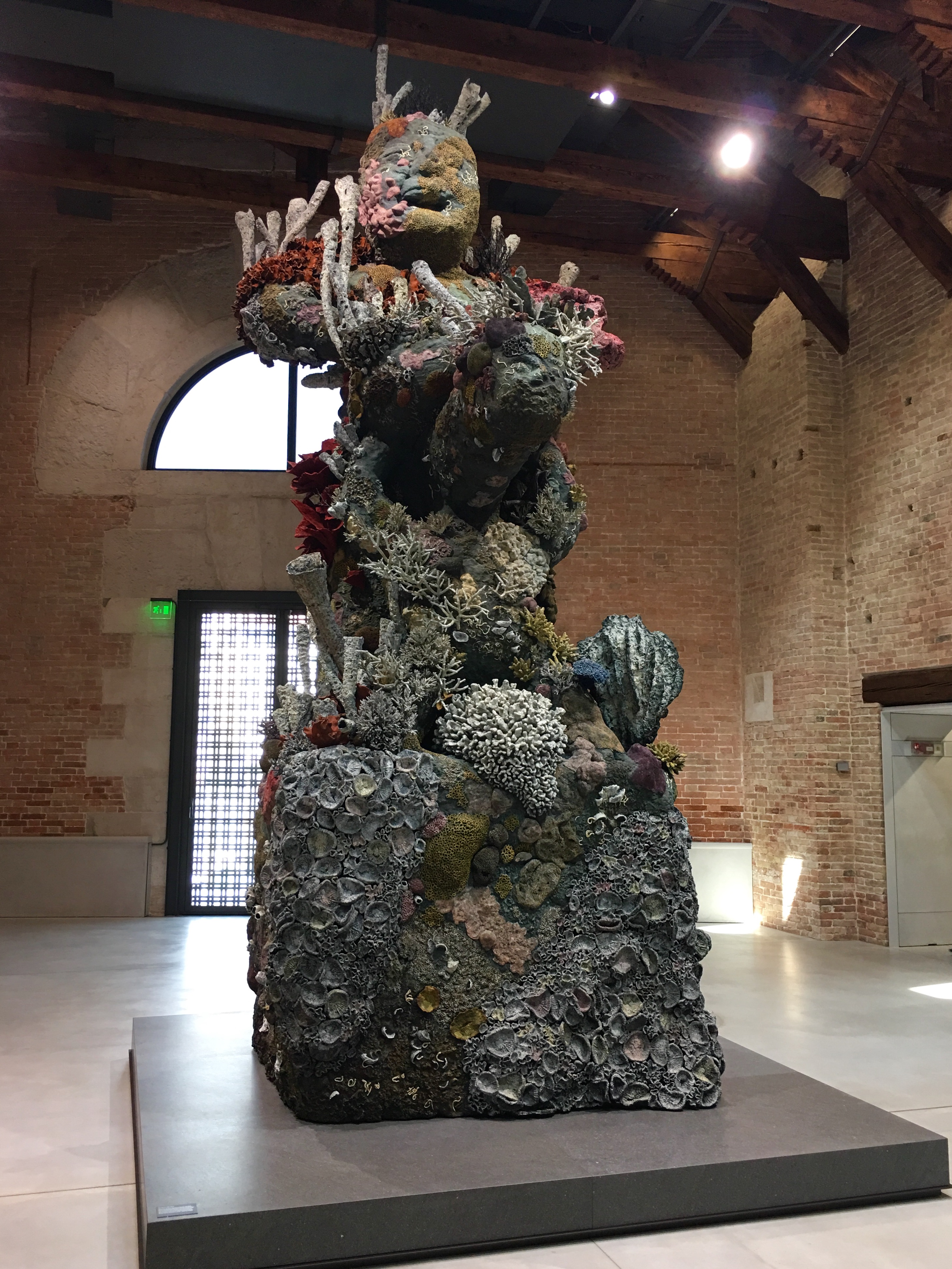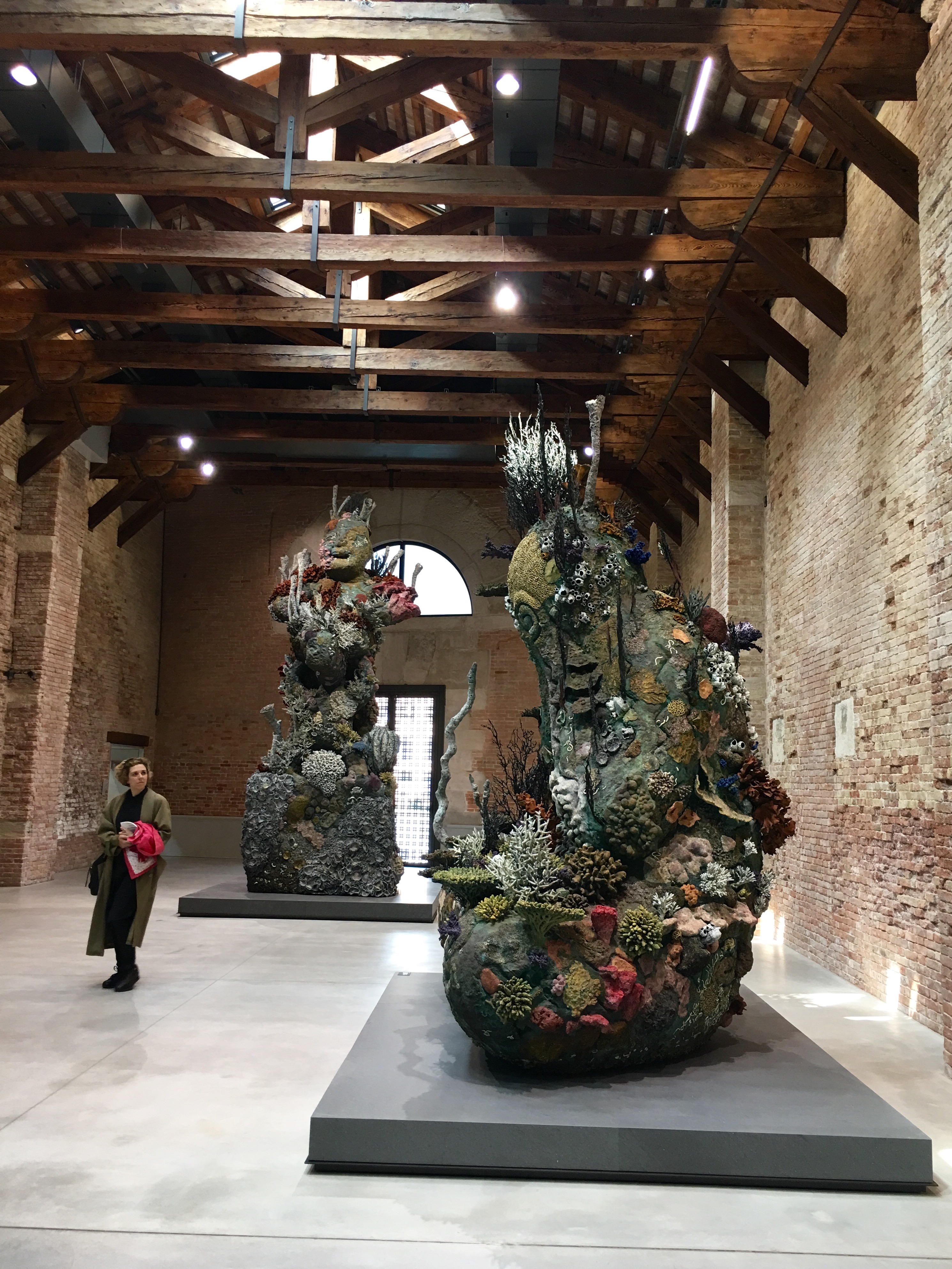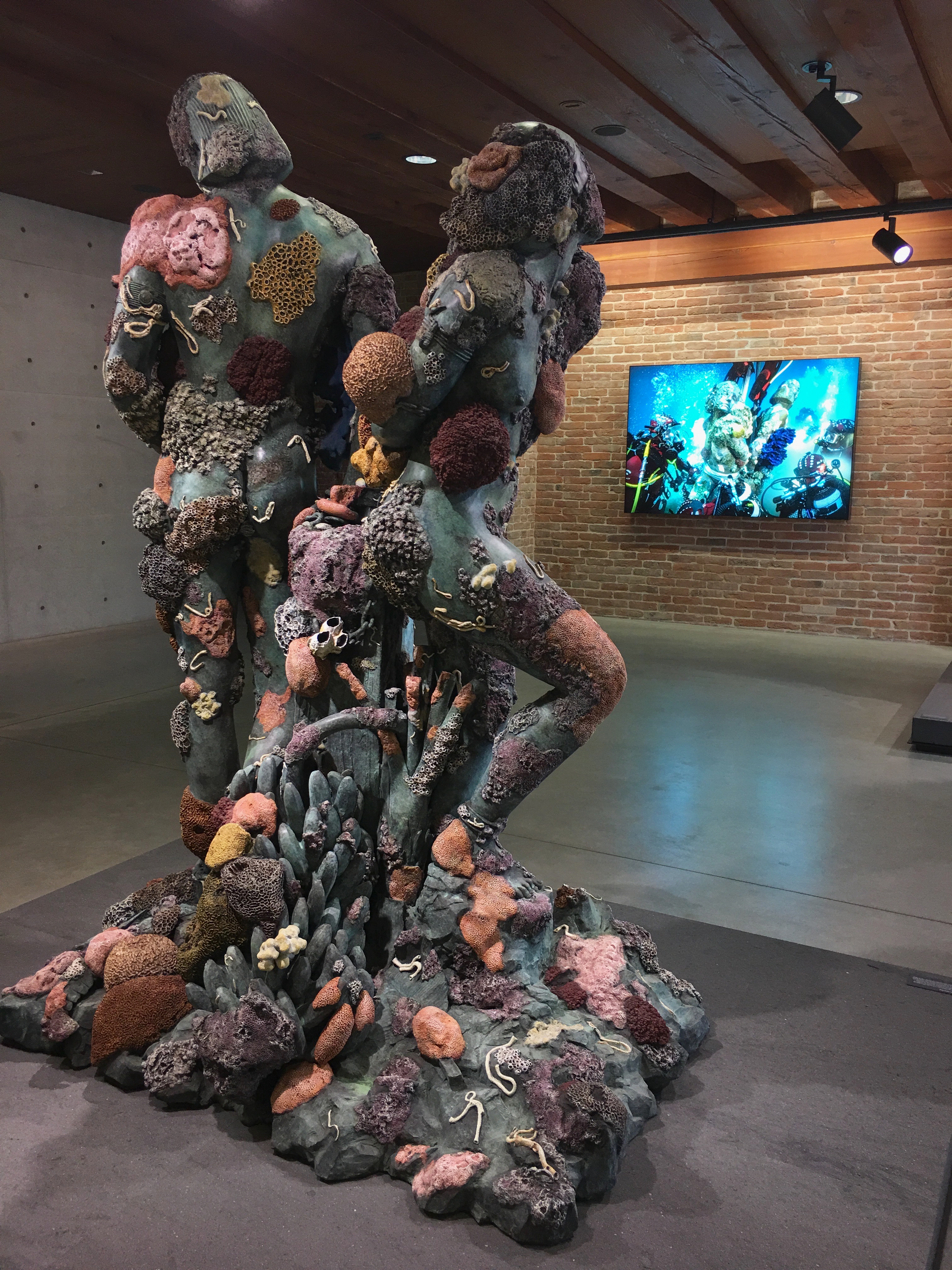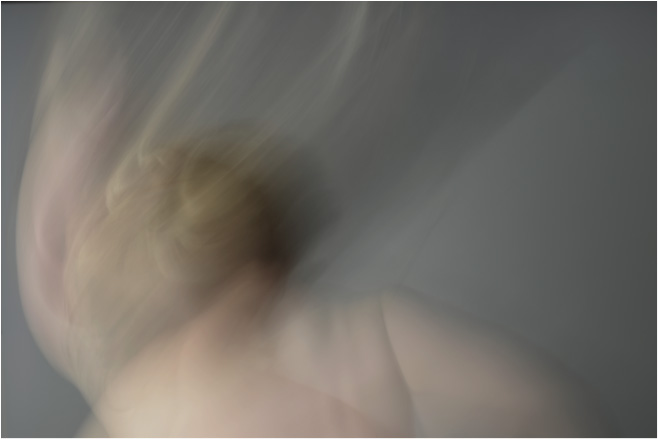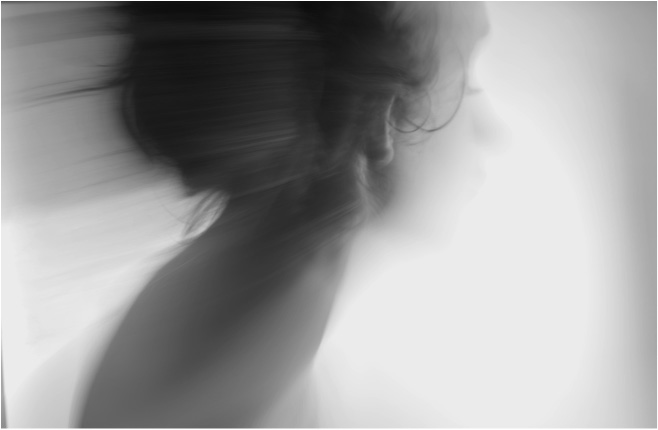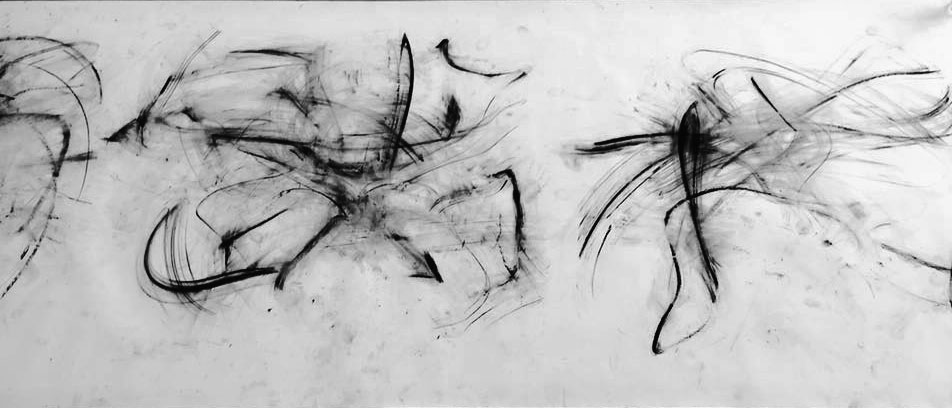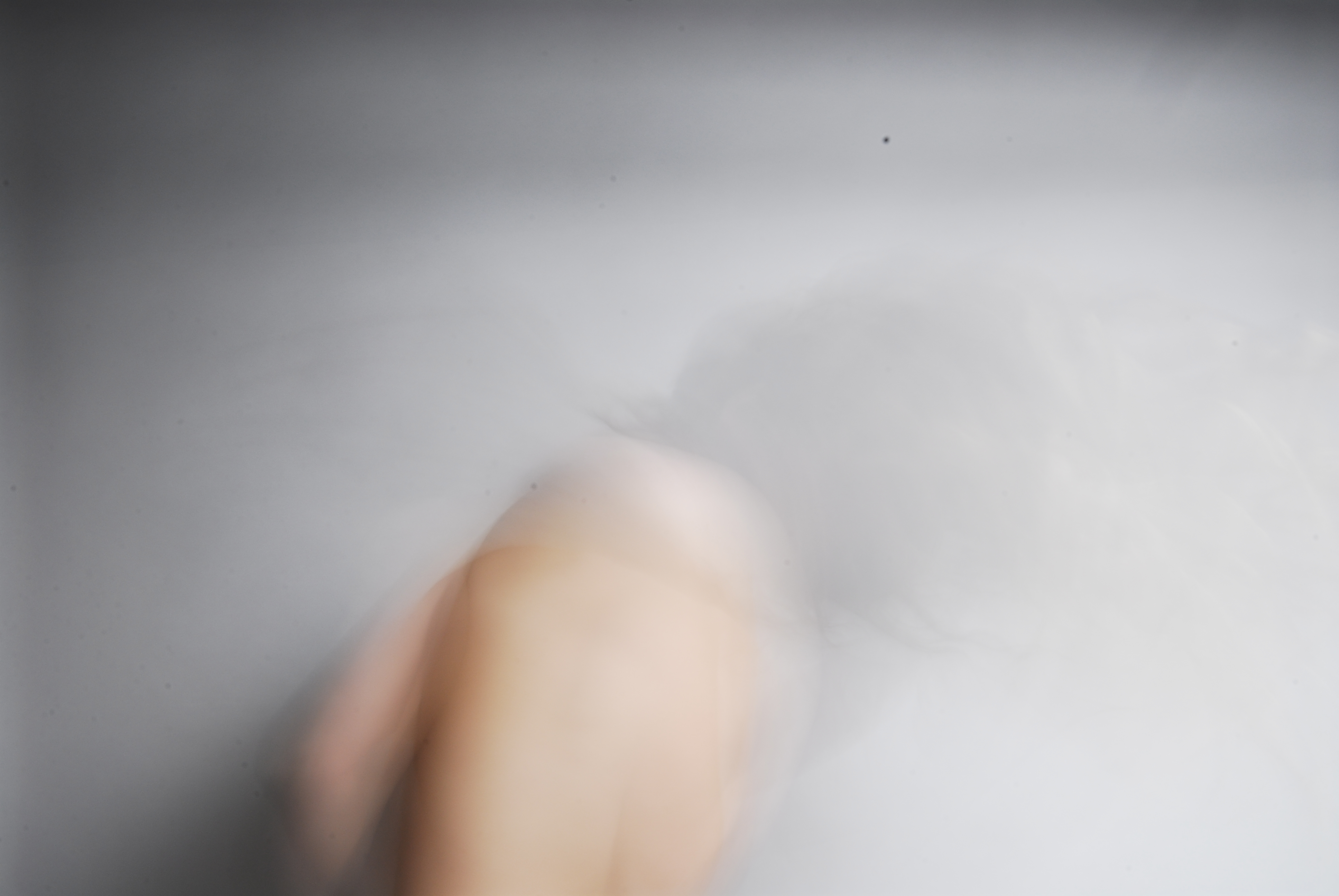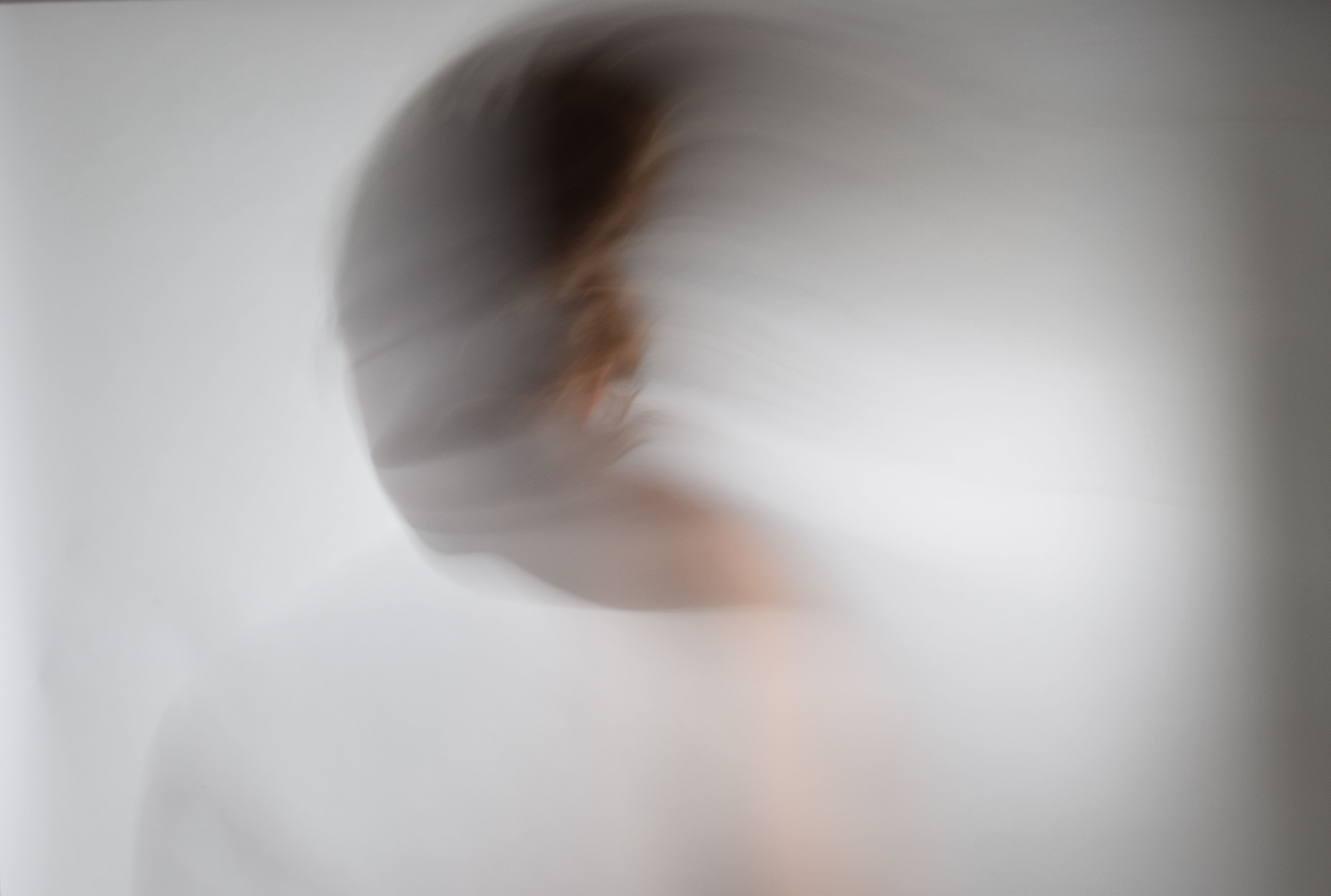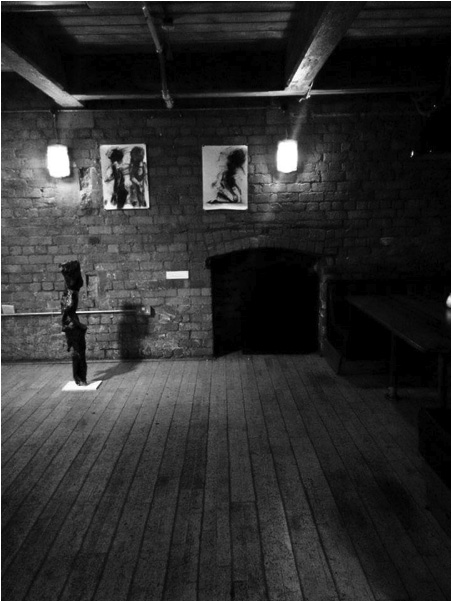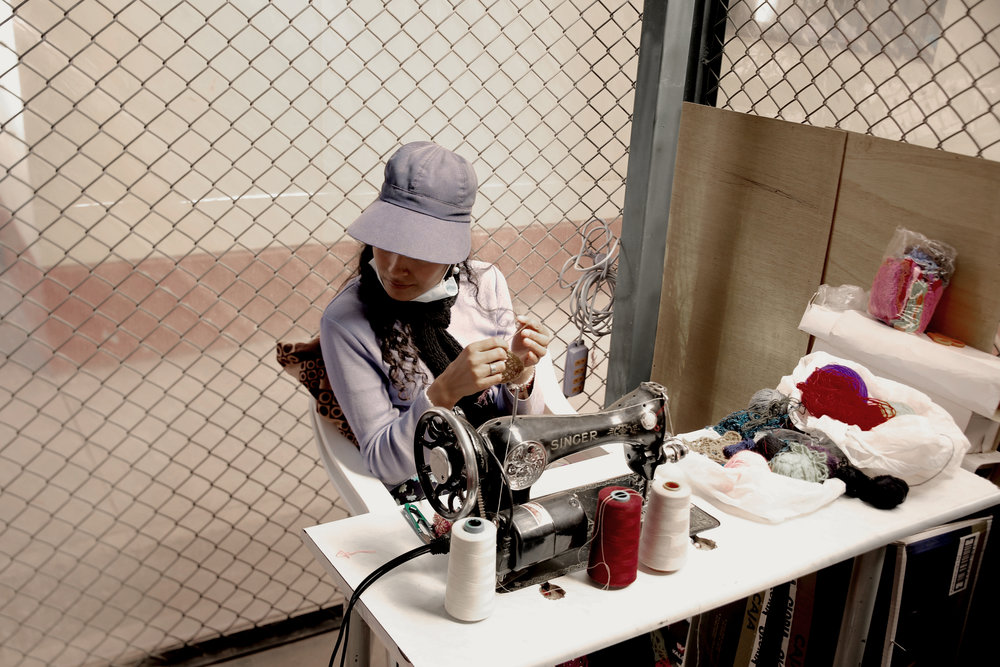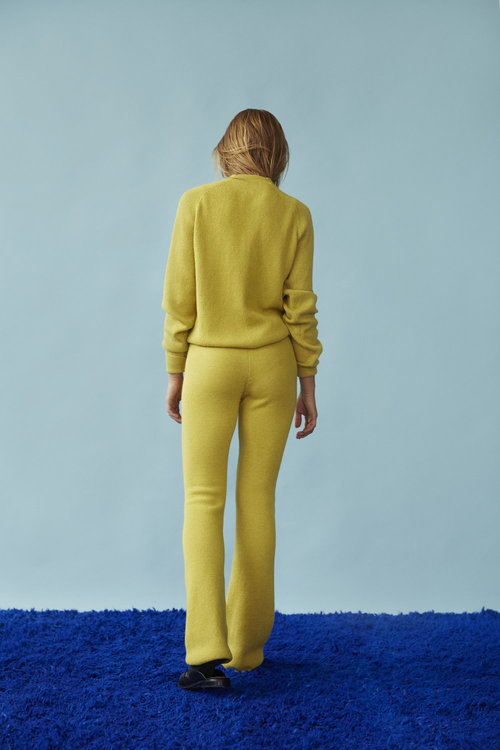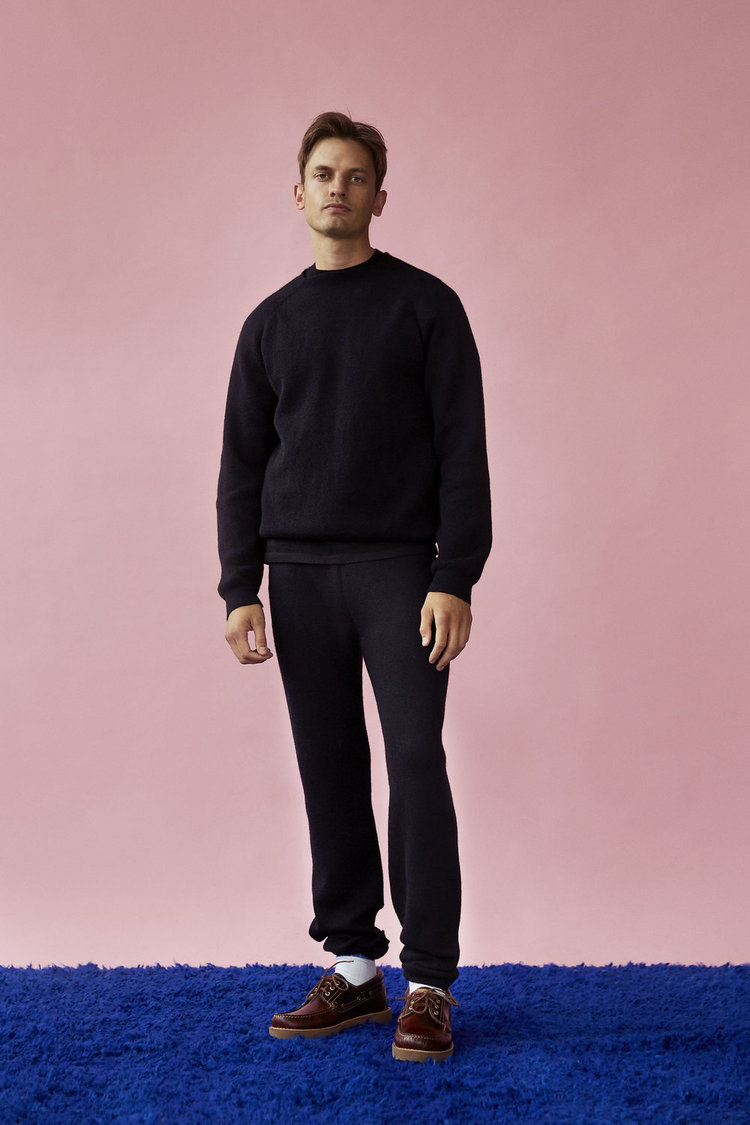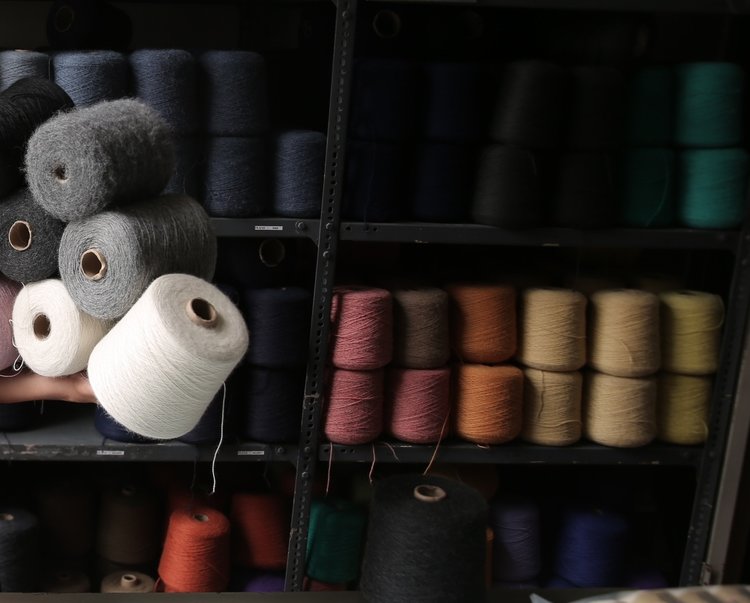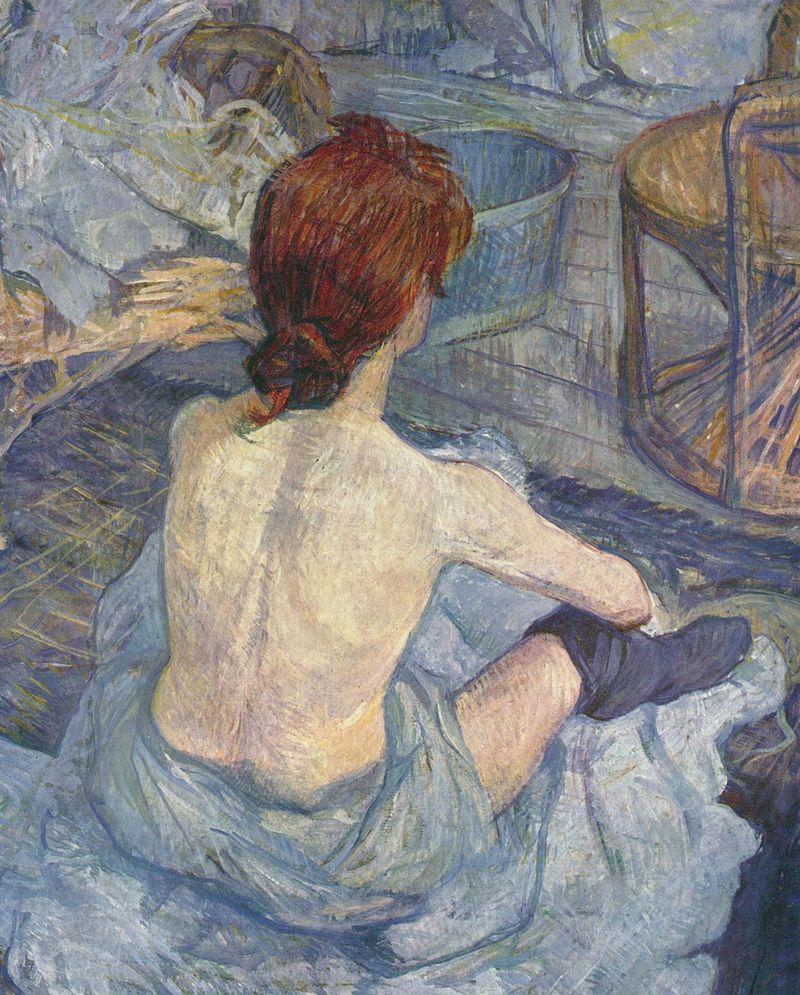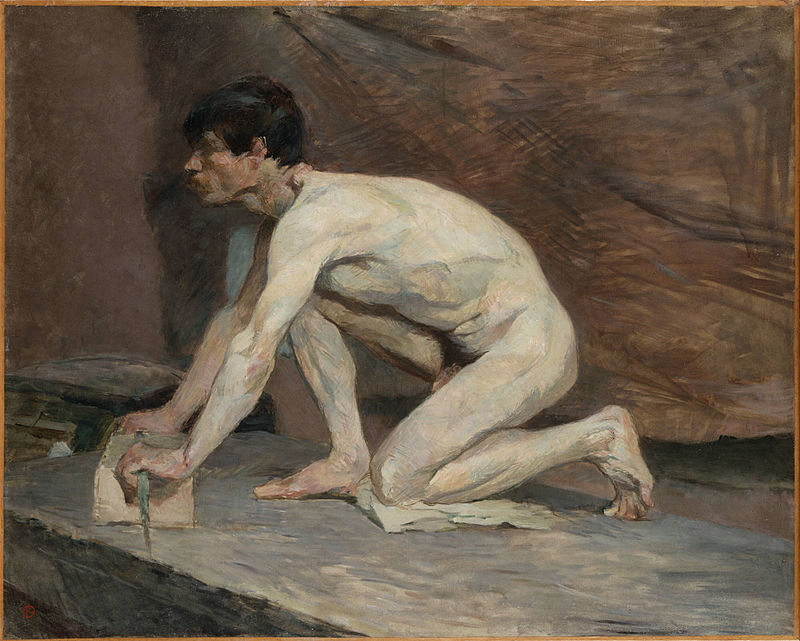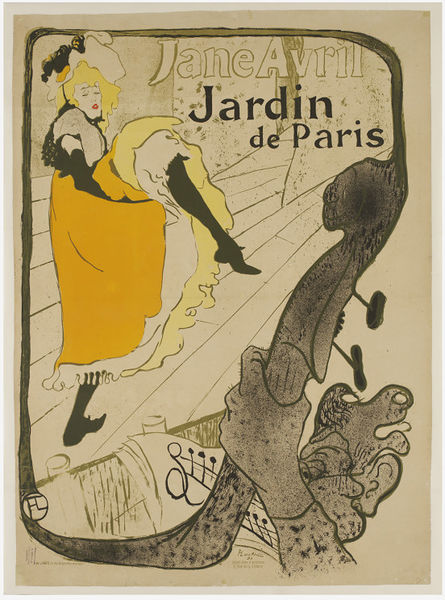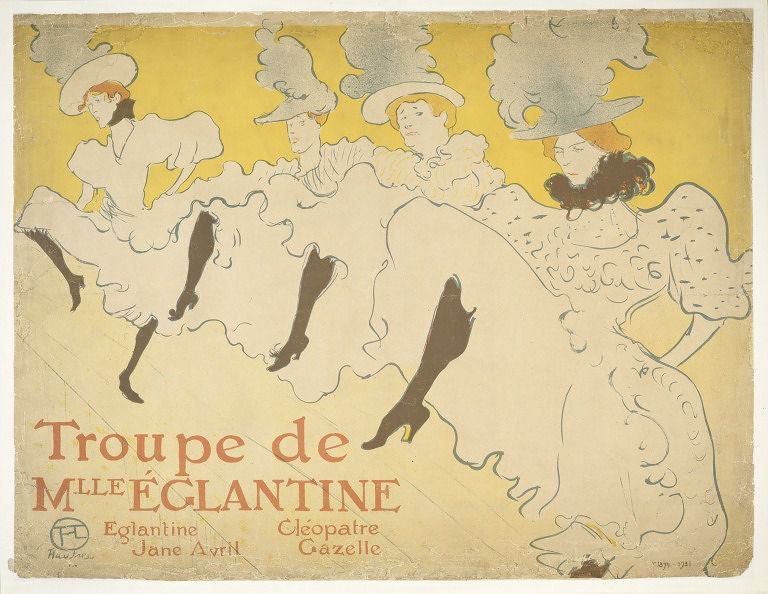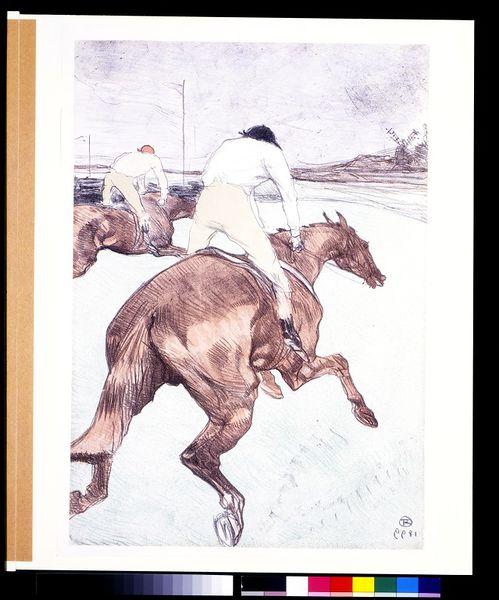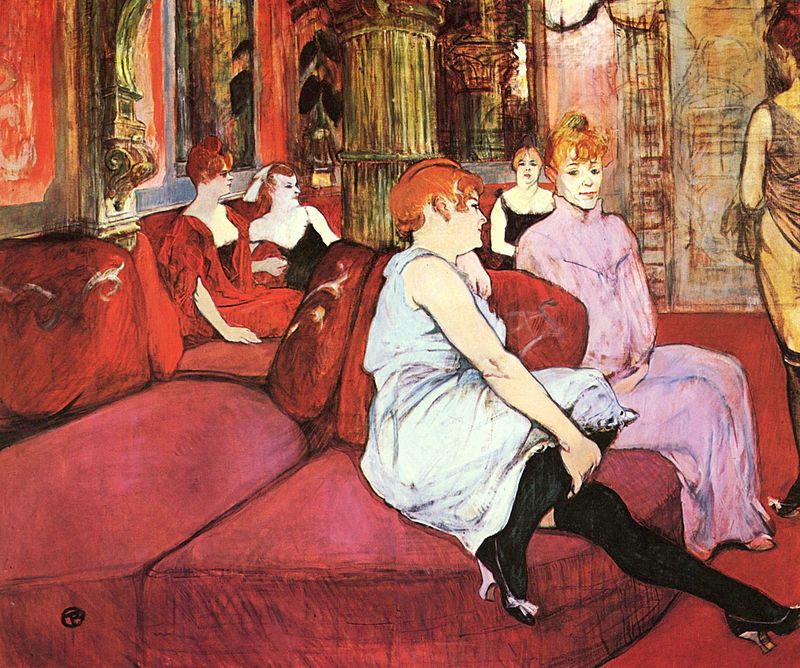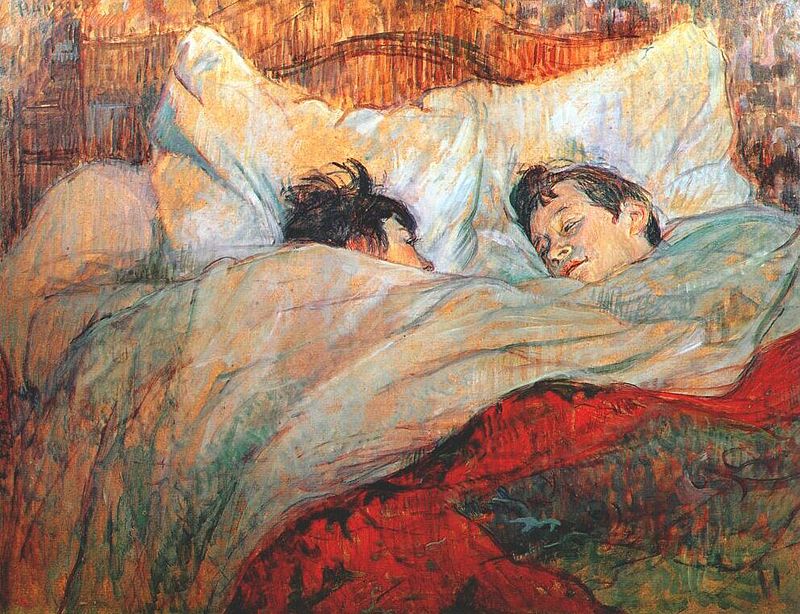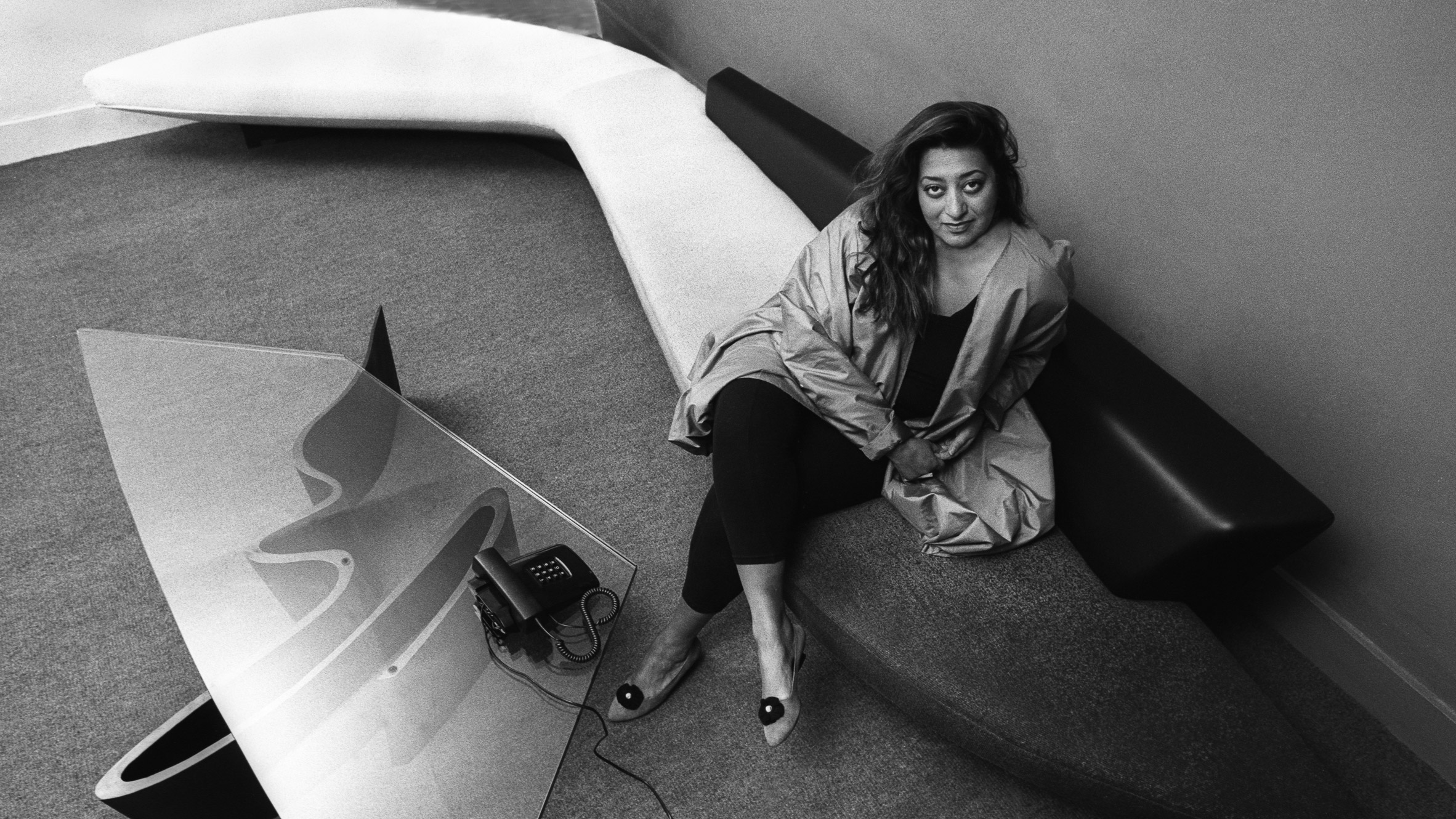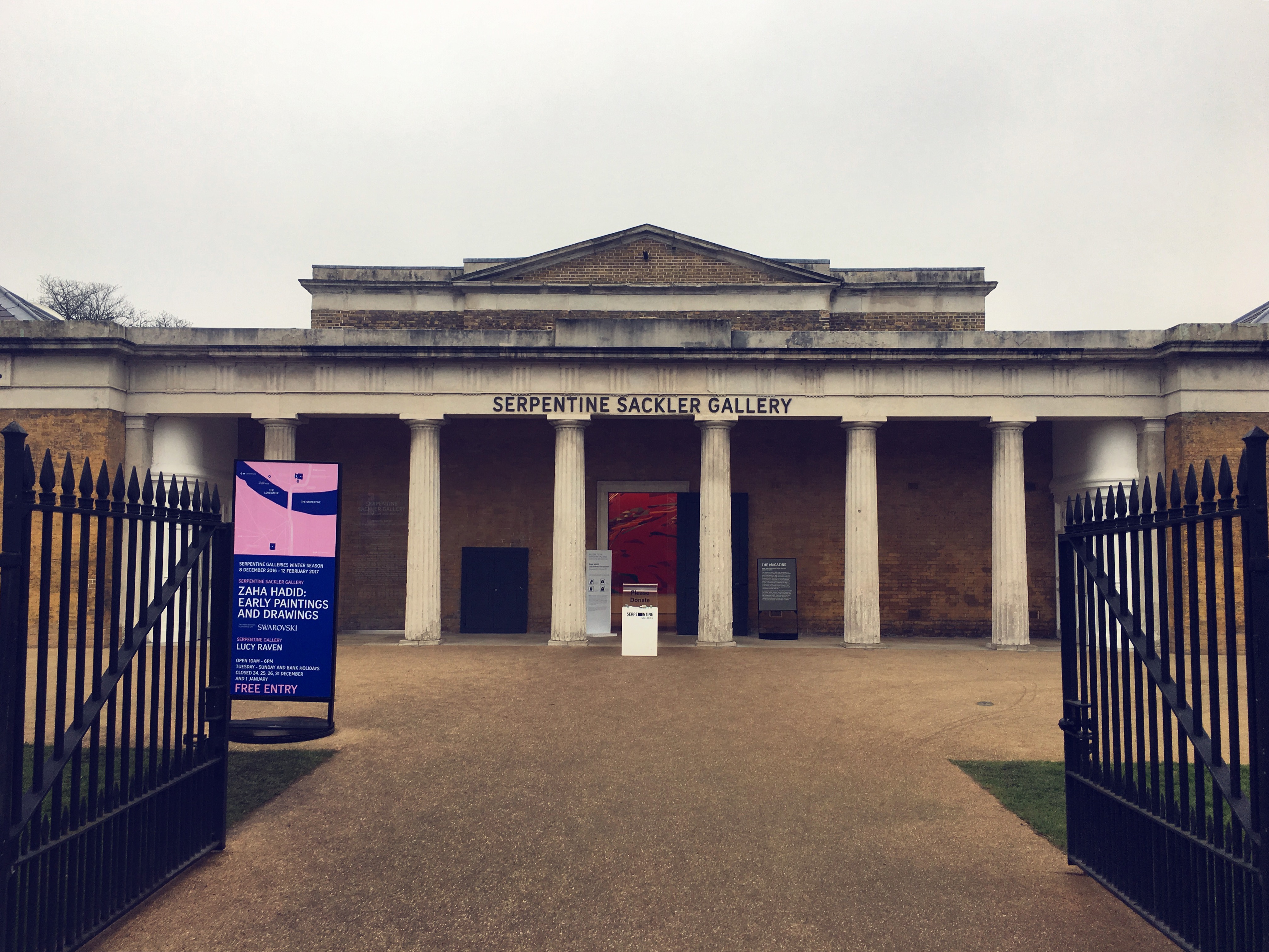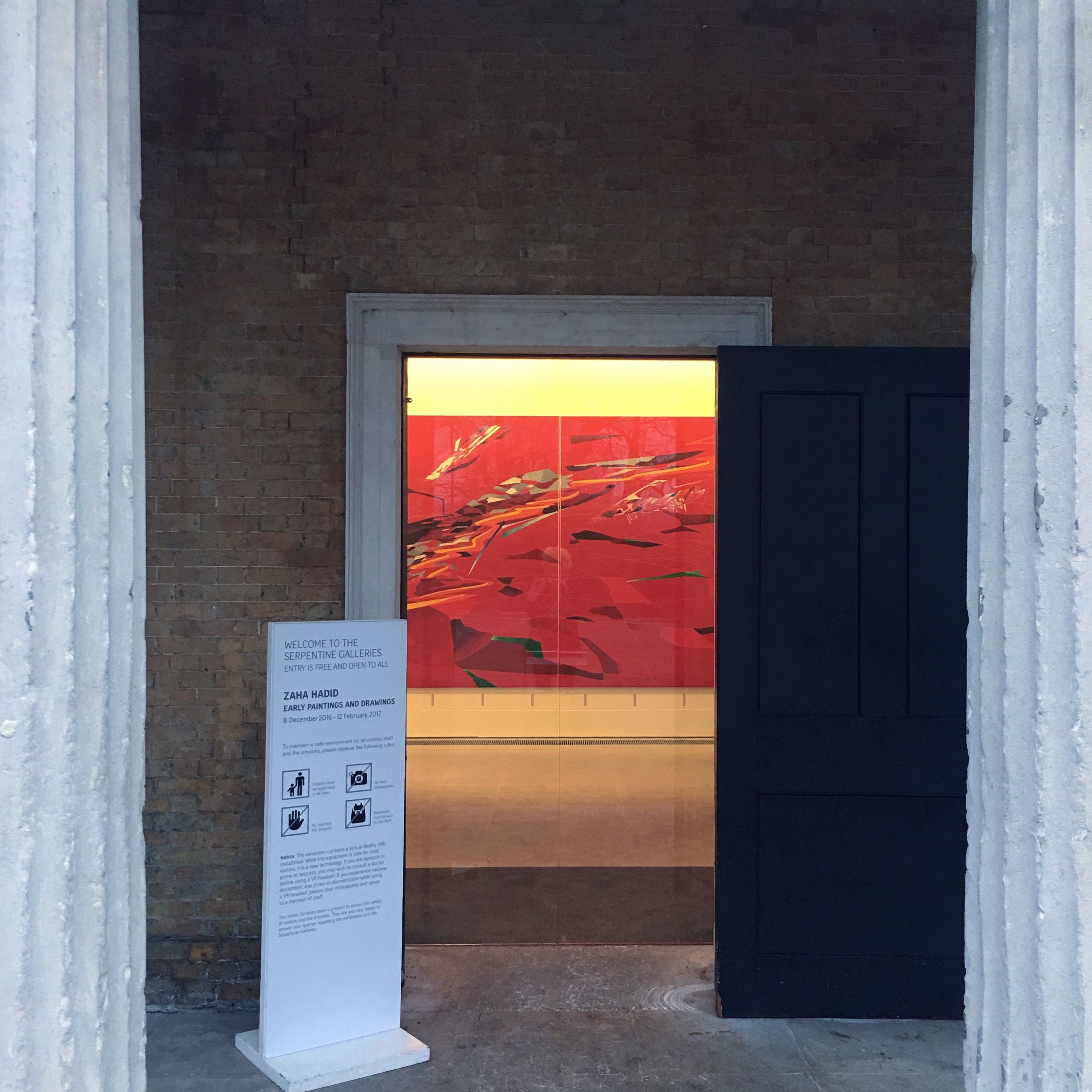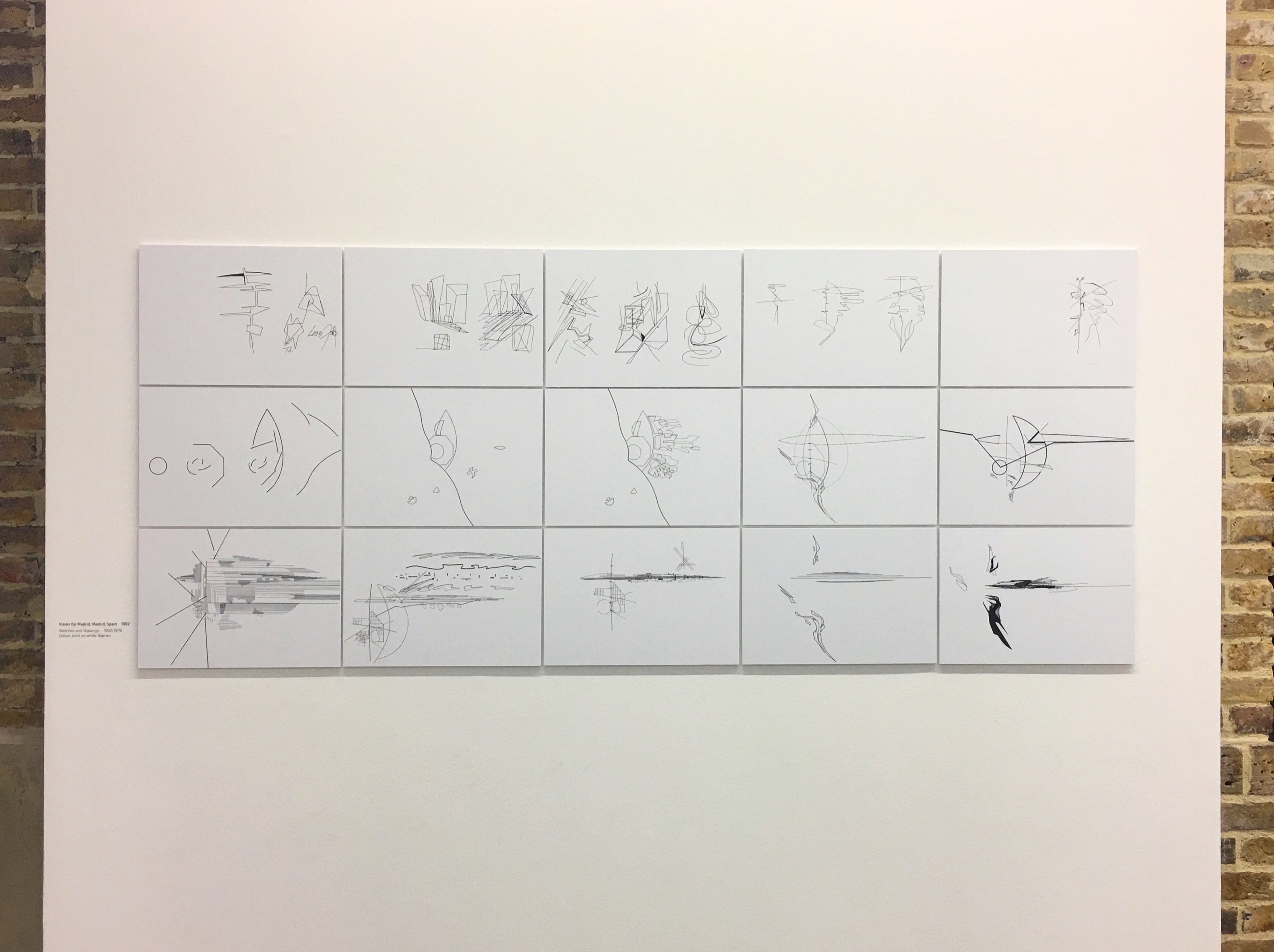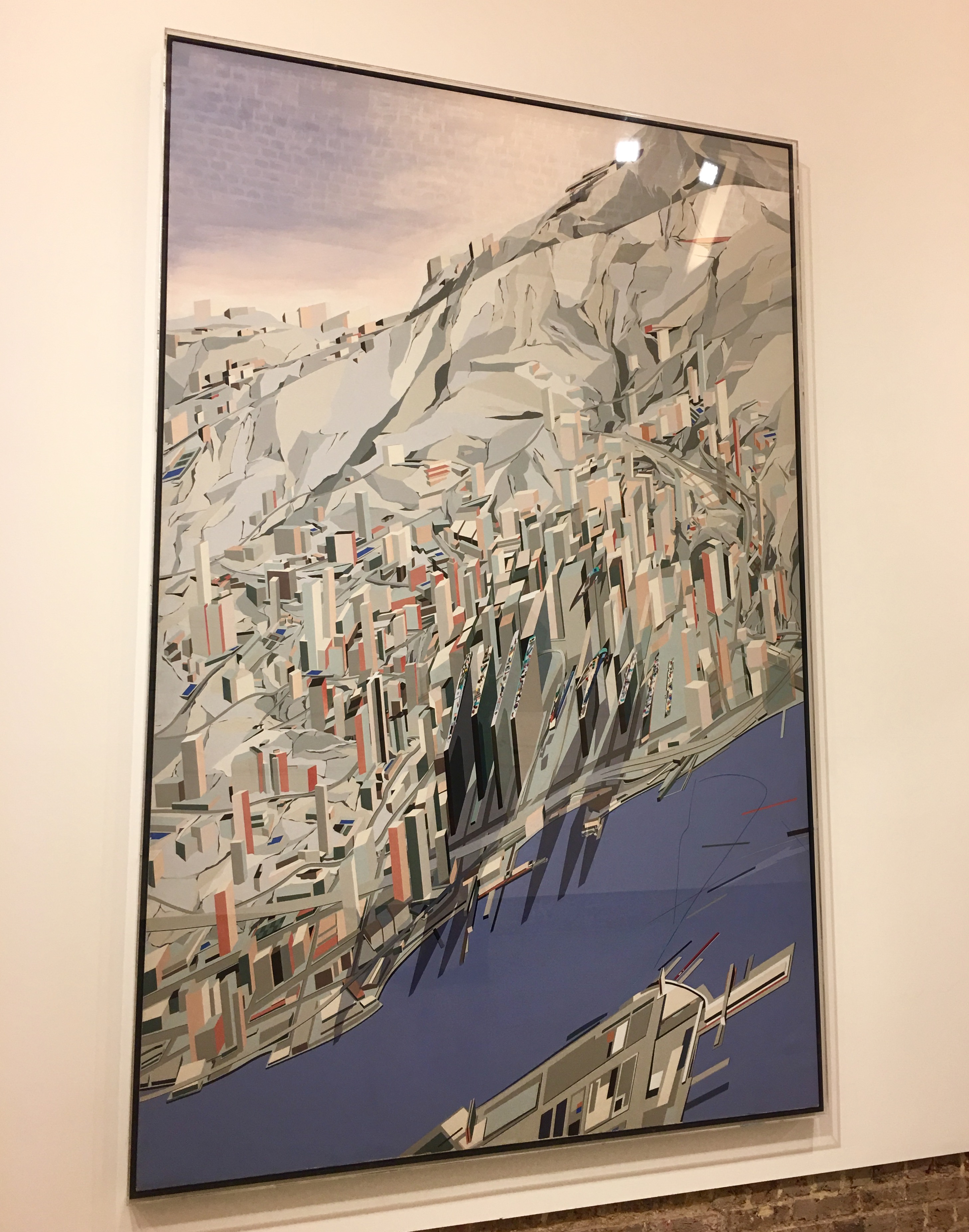
The Portrait Award is an annual event aimed at encouraging young artists to focus on and develop the theme of portraiture in their work.

ARCHIPELAGO
Brian Shields
Acrylic on canvas behind part-mirrored glass
This self-portrait is painted in acrylic paint and gel on canvas which was secured behind part-mirrored glass, from which the silvering had been removed. The work was made with use of two mirrors, in front of and behind the artist, to create the unsettling effect of having the sitter turn away from the viewer.

JESSICA
Laura Quinn Harris (b.1984)
Oil on board
The artist is drawing attention to the space around the sitter. You really start to look around the painting as if you were around the room. She seems to be coming out of the shadows. They seem to be as important as the sitter, and so does the background pattern. You think: ‘Where is the artist’s attention? Where does she want us to look?’

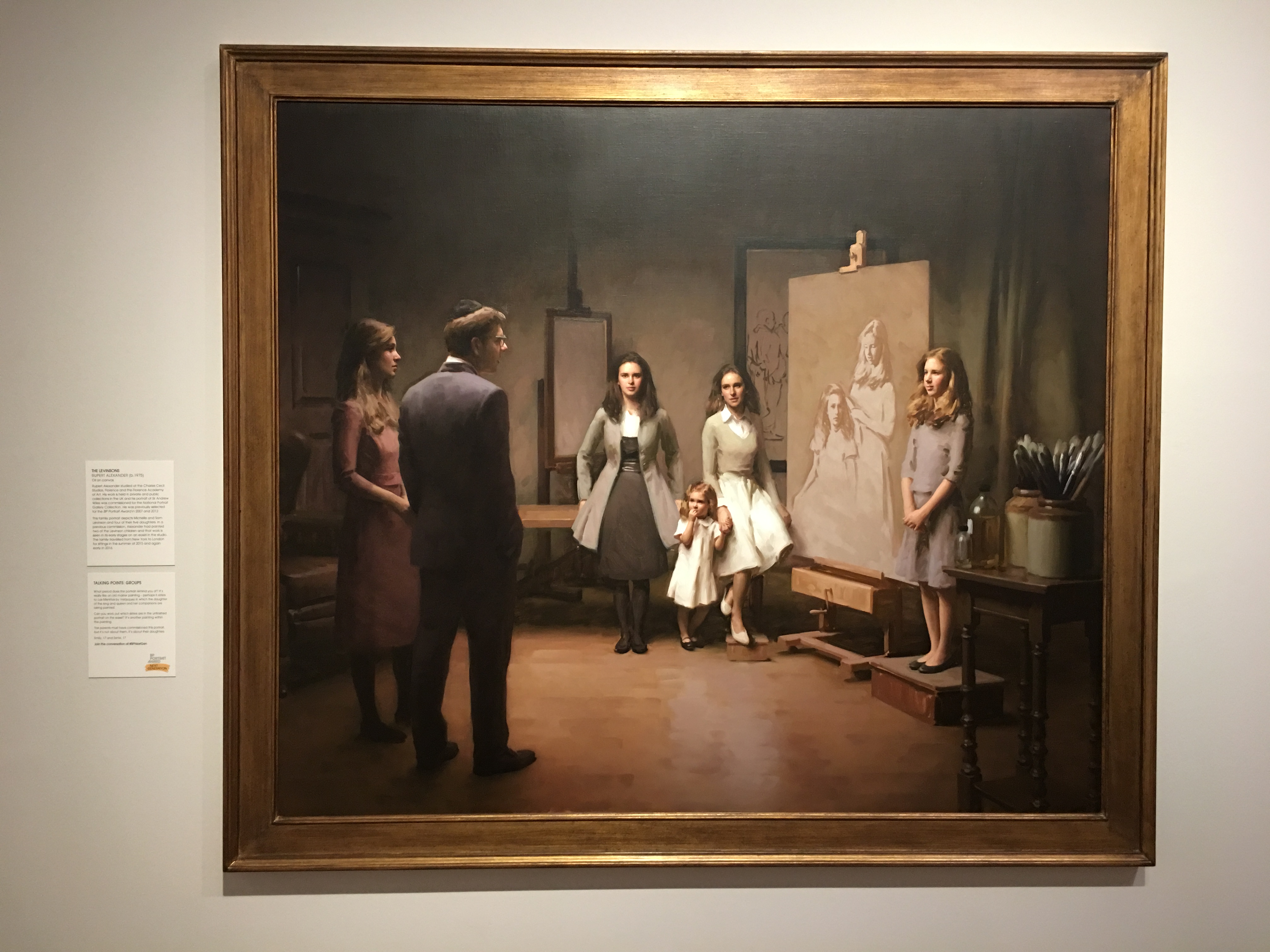
THE LEVINSONS
Rupert Alexander
Oil on canvas
This family portrait depicts Michelle and Sam Levinson and four of their five daughters. In a previous commission, Alexander had painted two of the Levinson children and that work is seen in its early stages on an easel in the studio. The family travelled from New York to London for sittings in the summer of 2015 an again early in 2016.
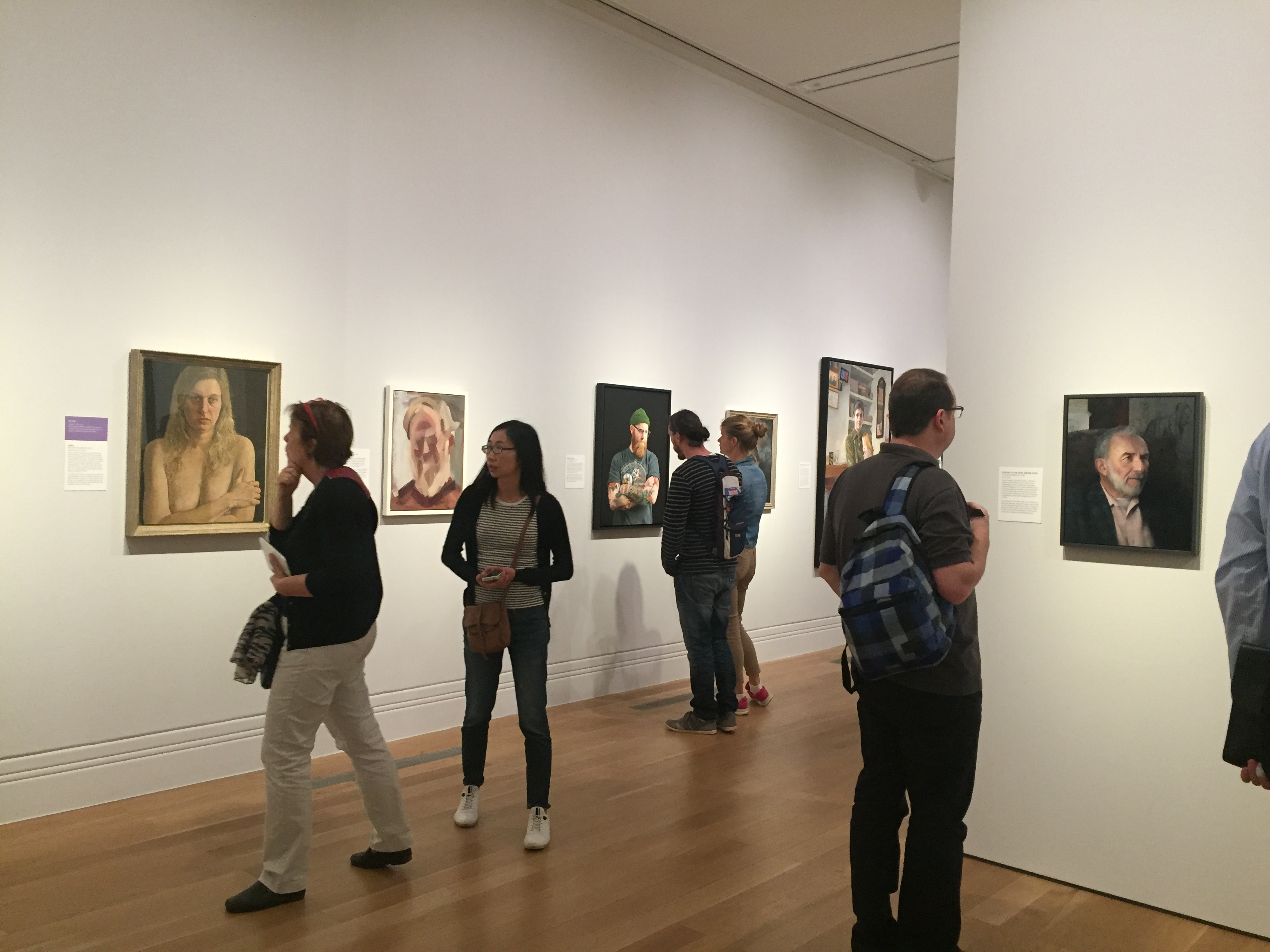
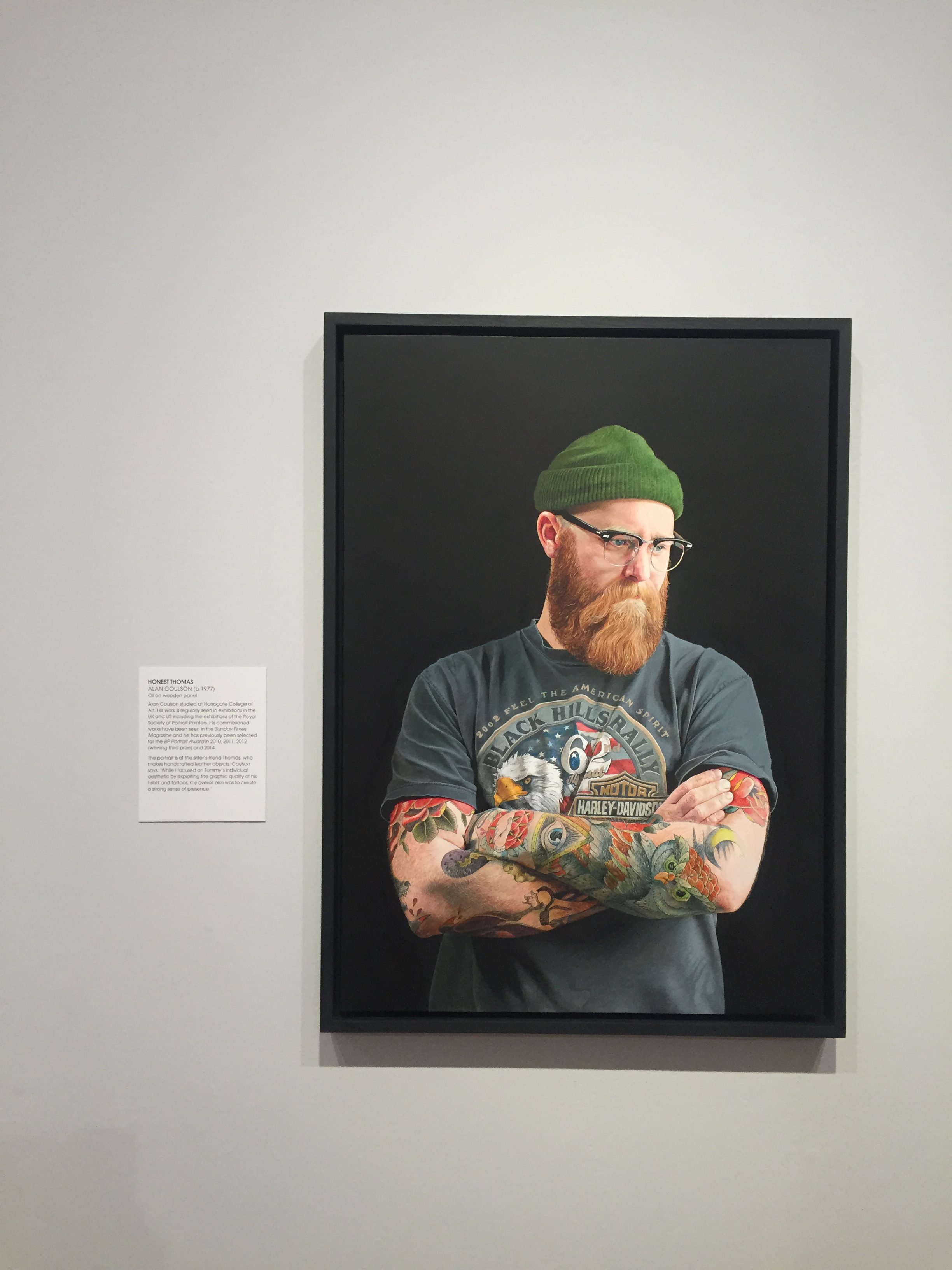
HONEST THOMAS
Alan Coulson
Oil on wooden panel
The portrait is of the sitter’s friend Thomas, who makes handcrafted leather objects. Coulson says: ‘While I focused on Tommy’s individual aesthetic by exploiting the graphic quality of his t-shirt and tattoos, my overall aim was to creat a strong sense of presence.
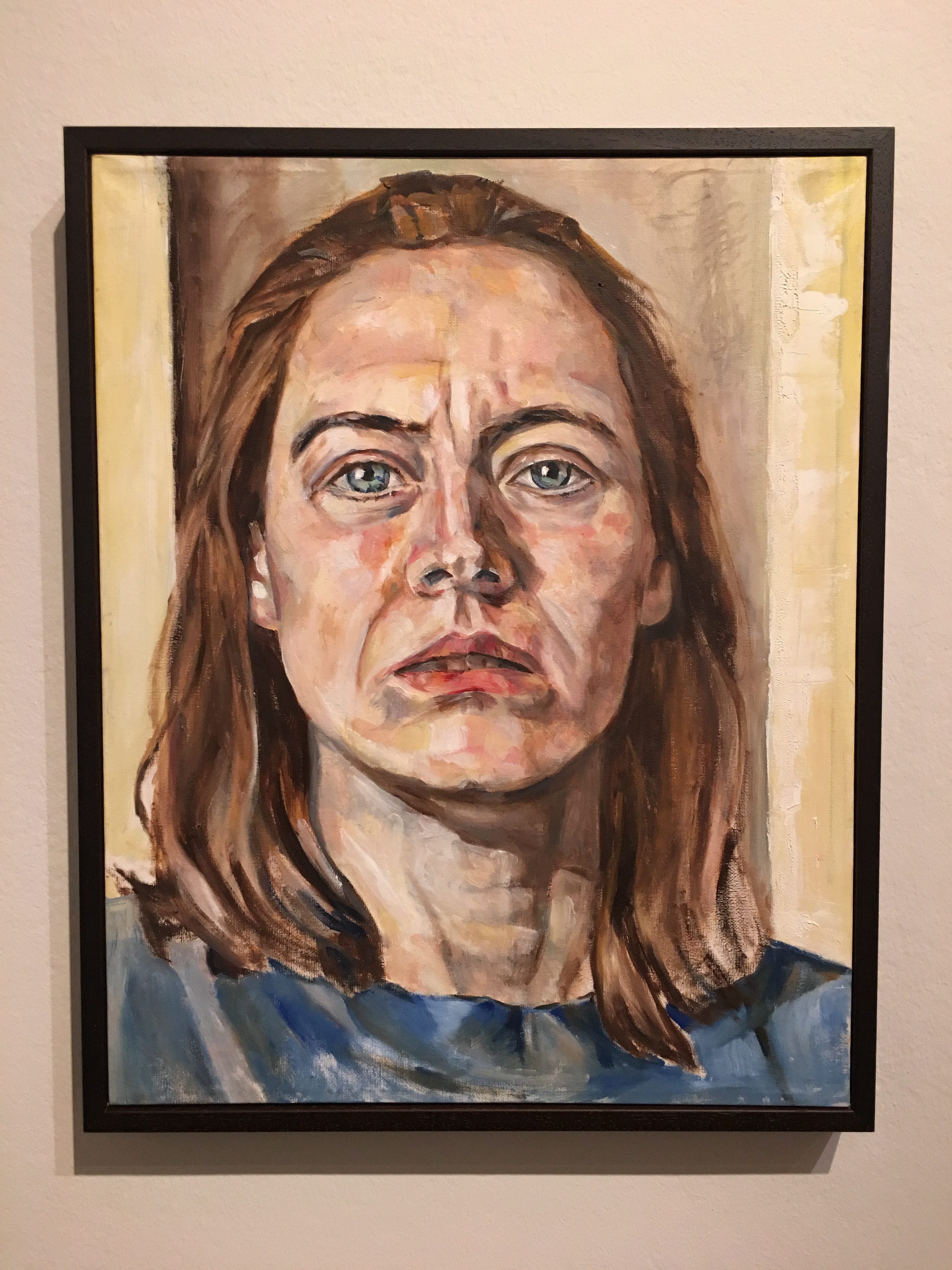
SELf-PORTRAIT
Rowanne Cowley
Oil on canvas
This self-portrait was made as part of a personal project to complete a portrait of each member of Cowley’s family in one year. Cowley works as a full-time gardener and so family sittings and painting sessions have to be organised in the evenings or during bad weather around her work schedule.
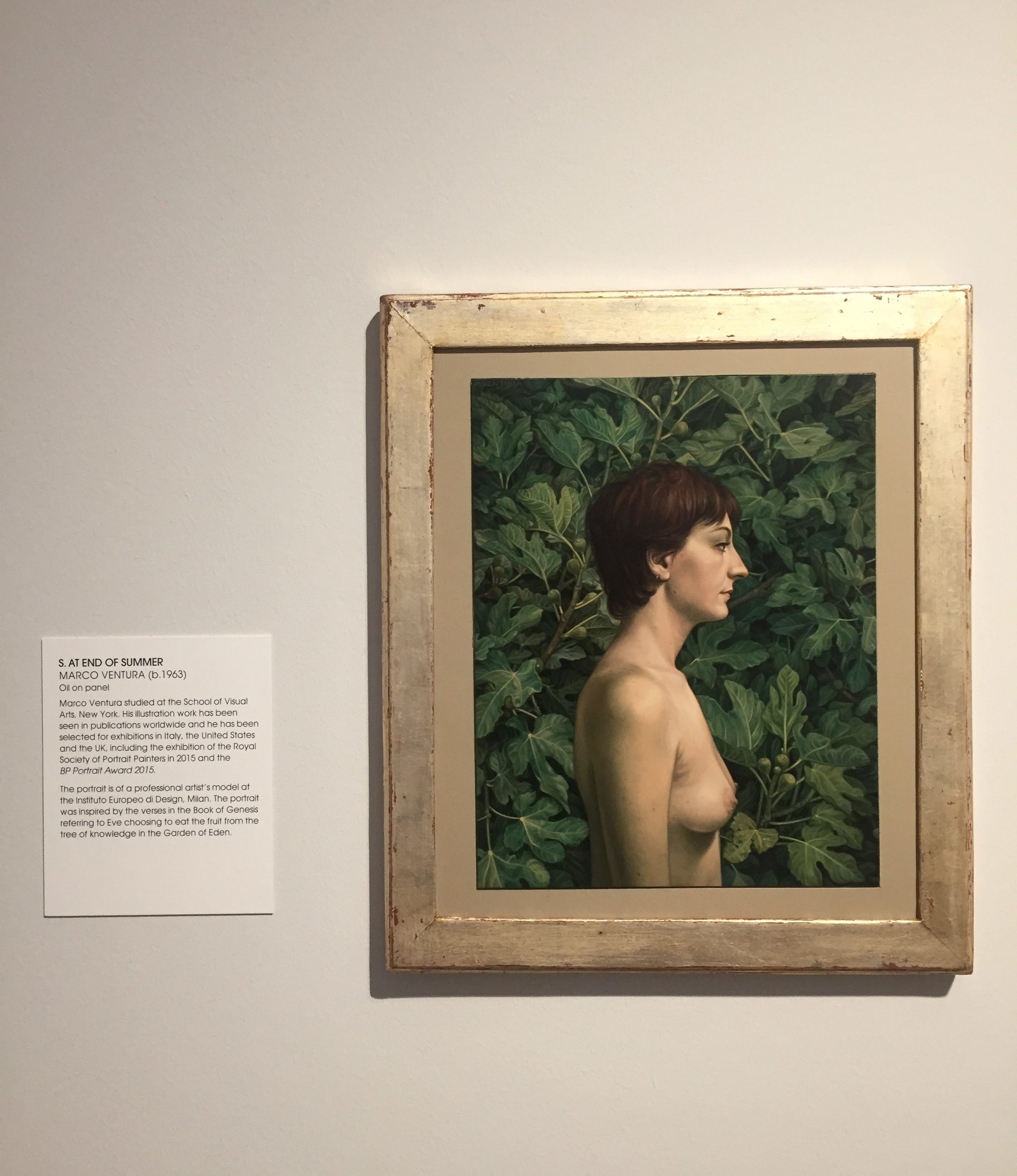
S. AT END OF SUMMER
Marco Ventura
Oil on canvas
The portrait is of a professional artist’s model at the Instituto Europe di Design, Milan. The portrait was inspired by the verses in the Book of Genesis referring to Eve choosing to eat the fruit from the tree of knowledge in the Garden of Eden.
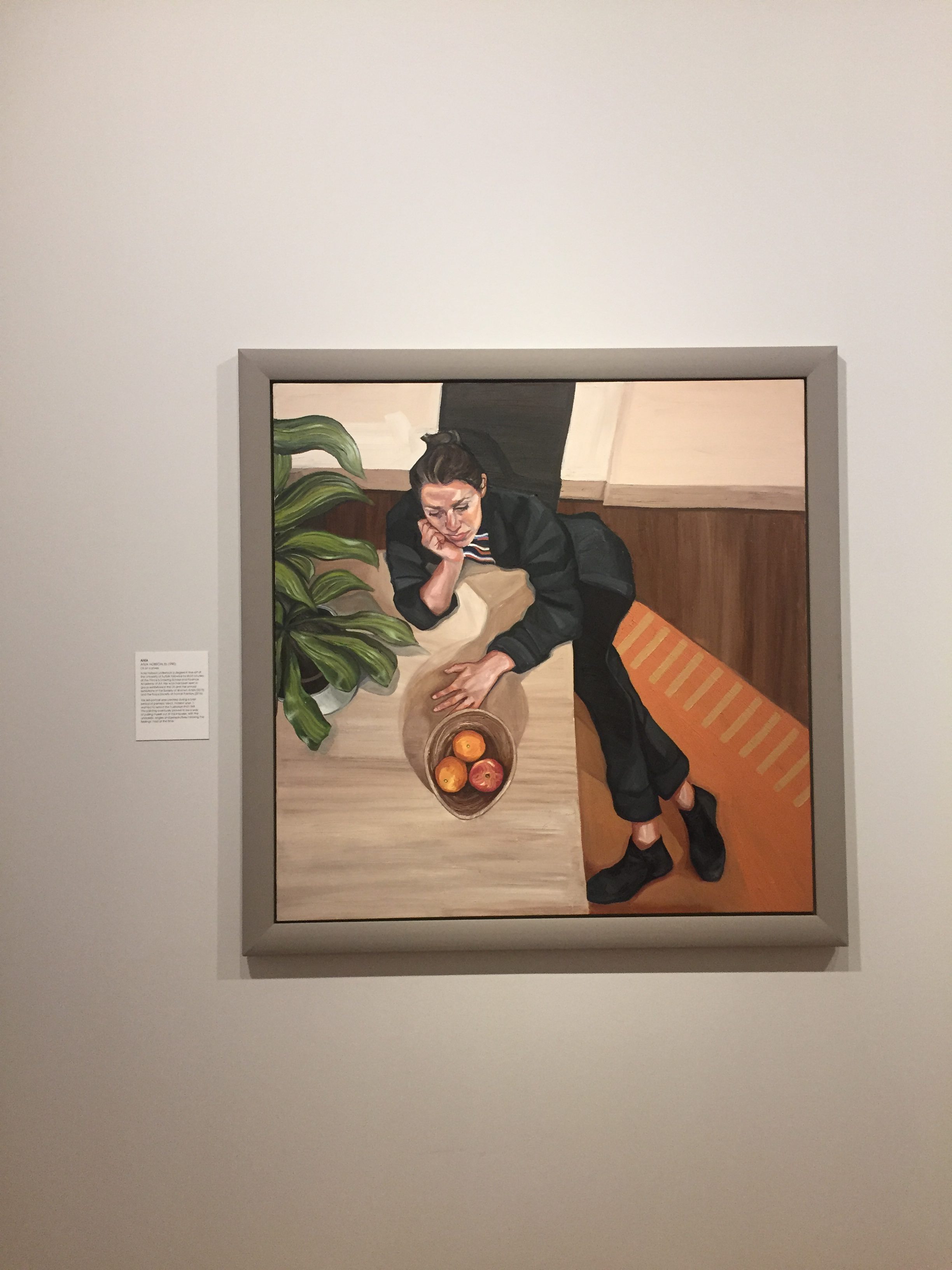
ANIA
Ania Hobson
oil on canvas
This self-portrait was created during a brief period of painters’ block. Hobson says: ‘I wanted to record the frustration that I felt. This painting eventually proved to be a way of pulling myself out of this impasse, with the unrealistic angles and perspectives mirroring the feelings I had at the time.’

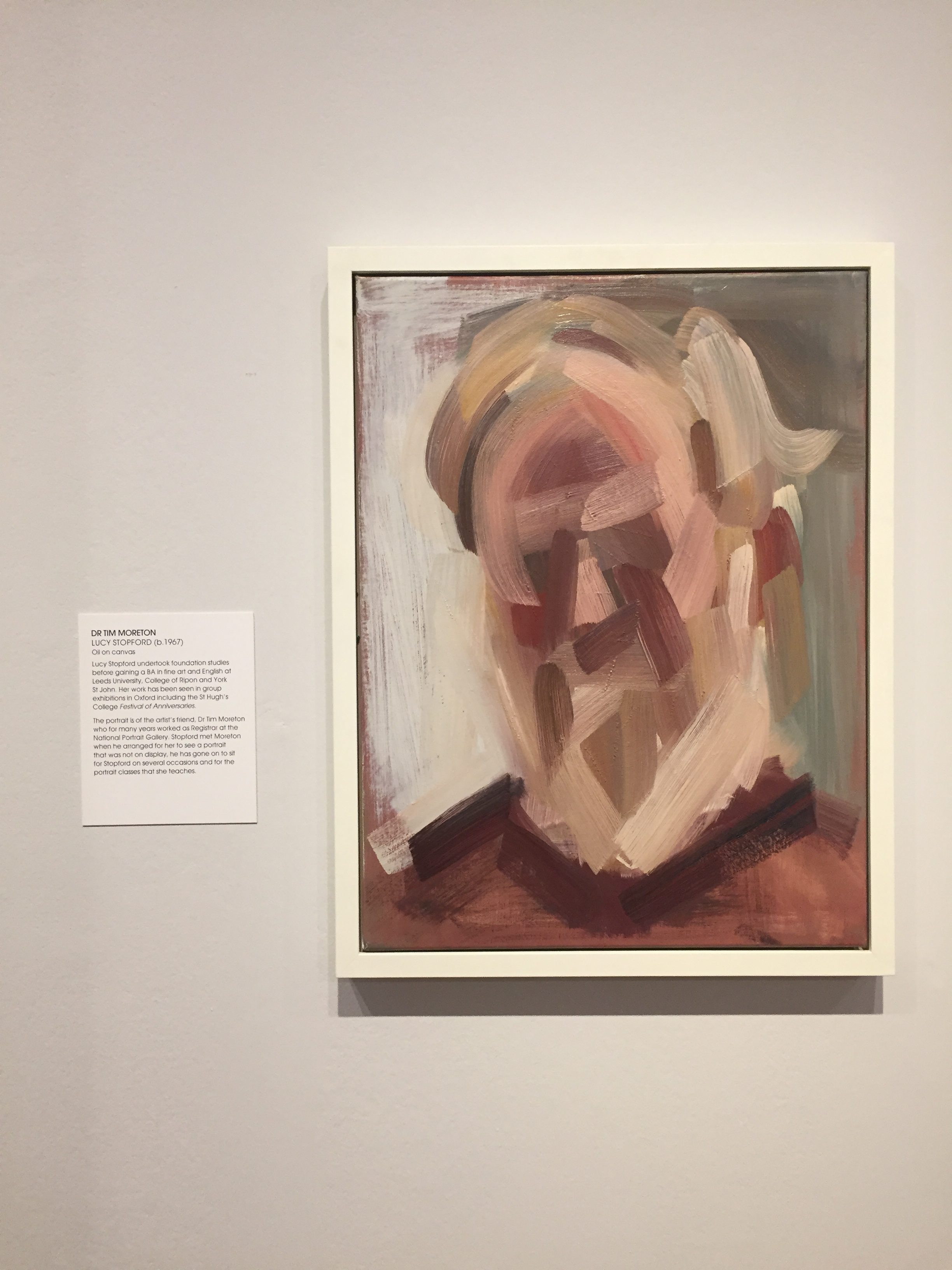
DR TIM MORETON
Lucy Stopford (b.1967)
oil on canvas
The portrait is of the artist’s friend. Dr Tim Moreton who for many years worked as Registrar at the National Portrait Gallery. Stopford met Moreton when he arranged for her to see a portrait that was not on display, he has gone on to sit for Stopford on several occasions and for the portrait classes that she teaches.

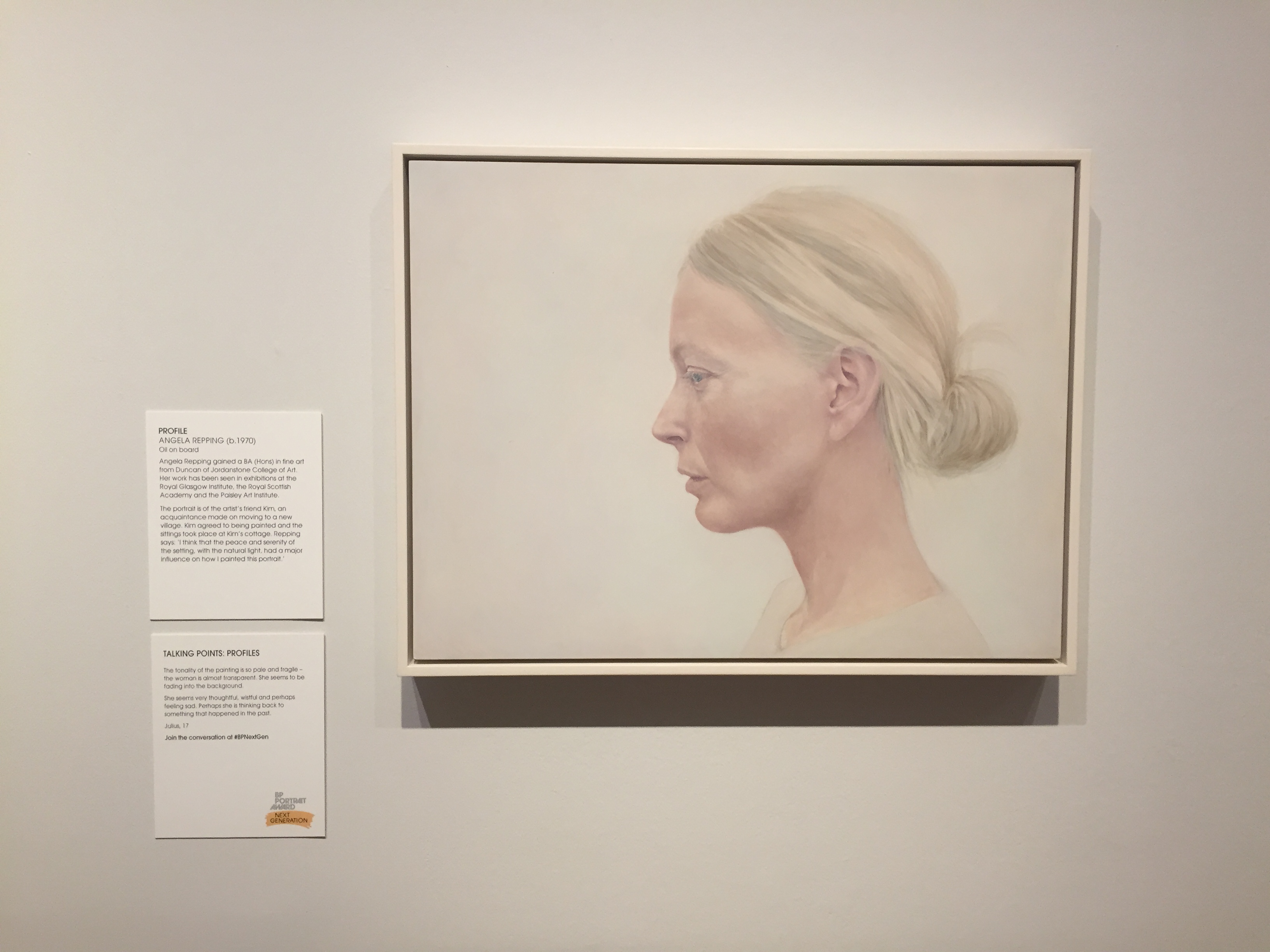
SIMONA
Lukas Betinsky
Oil on canvas
The portrait is of the artist’s friend Simona.
Bentinsky says: ‘The idea is based on traditional techniques. The portrait is built on simplicity, purity and the expression of the person herself.
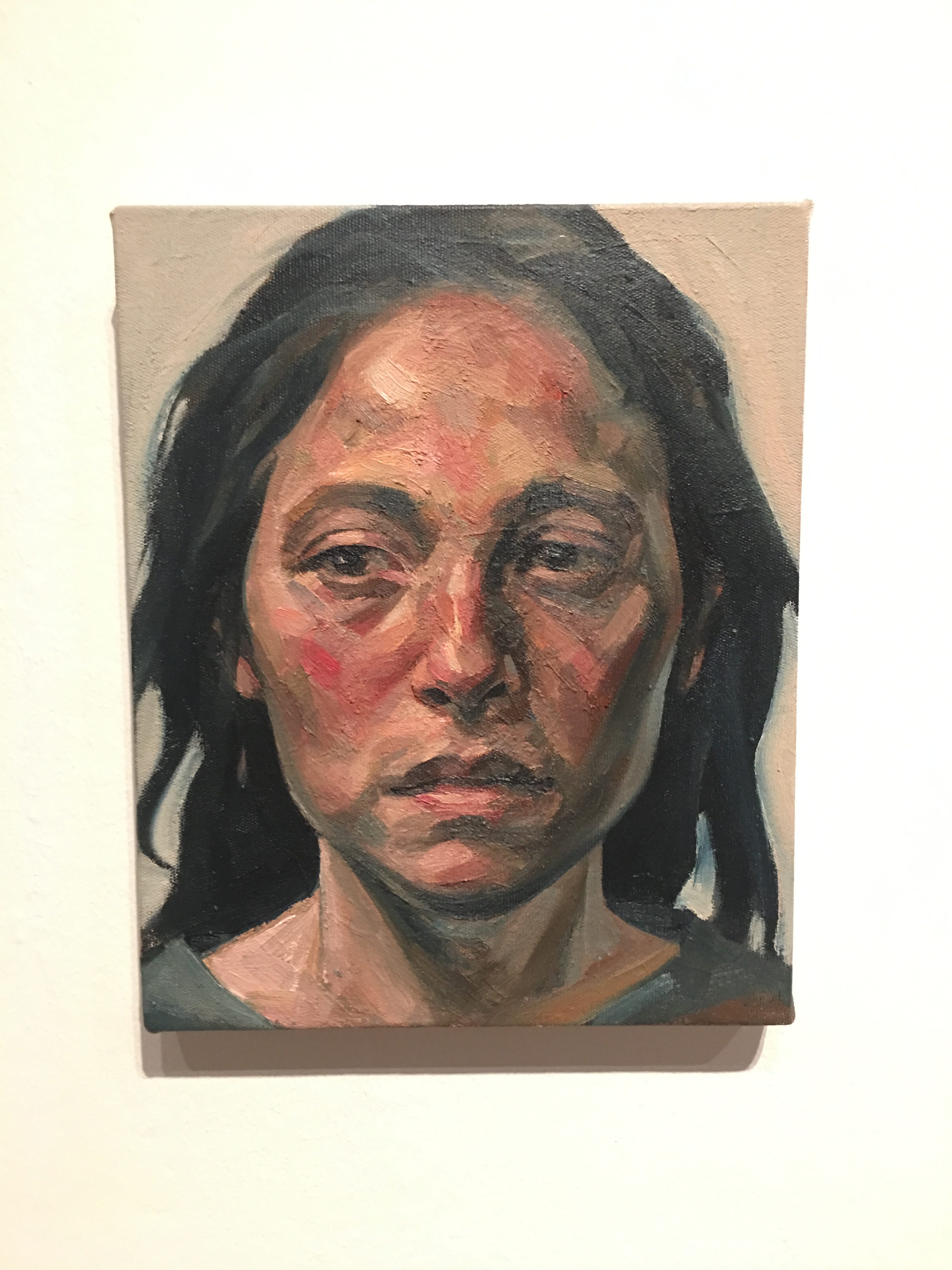
PORTRAIT OF BEYZA
Mustafa Ozel
Oil on canvas
The artist says: ‘I look for certain characteristics in those of whom I make portraits. Having rich colours in the face is of great significance for me as is the effect of catching a fleeting emotion. I decided to make this portrait, as Beyza has these features.’
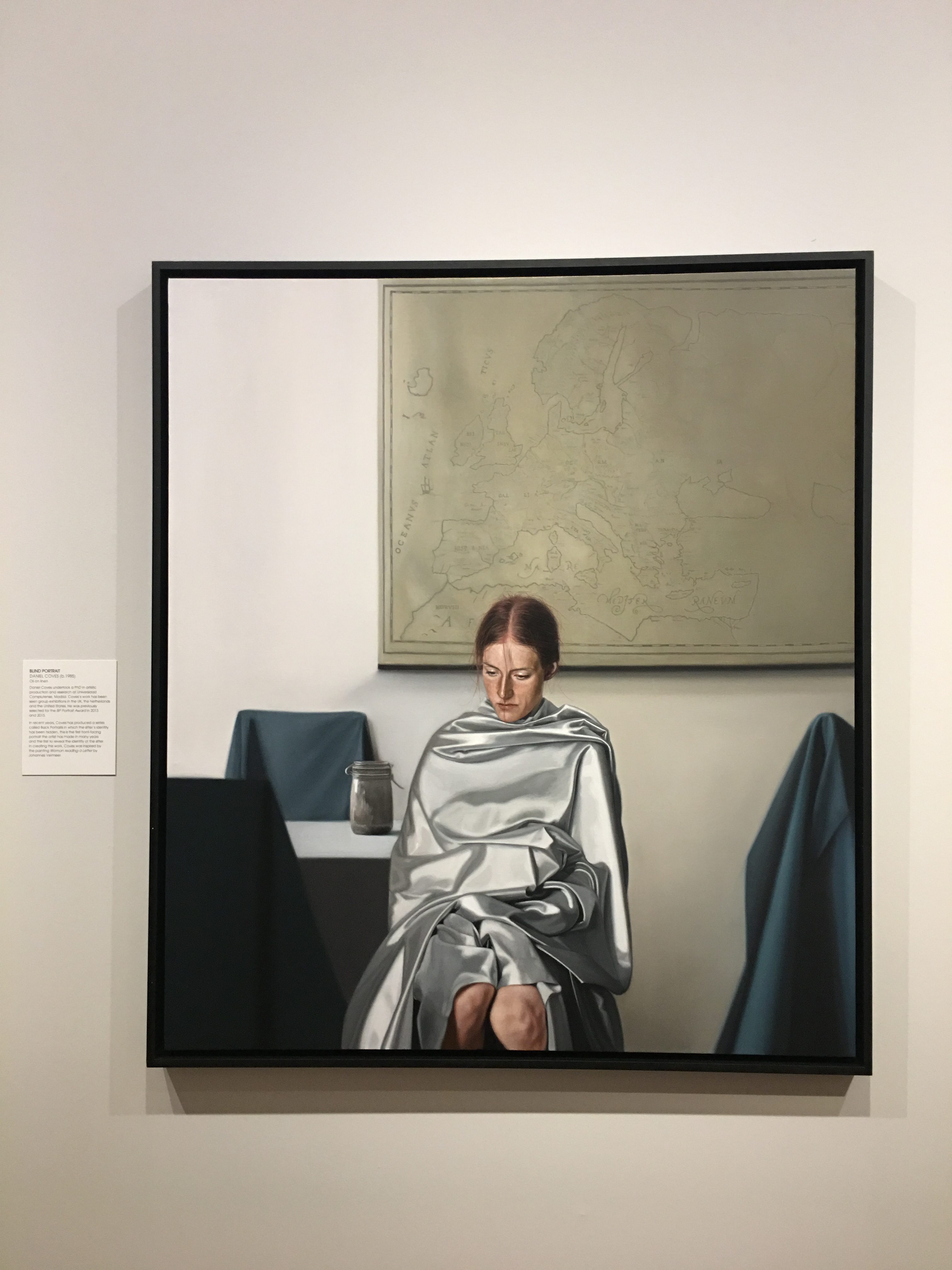
BLIND PORTRAIT
Daniel Coves
Oil on linen
In recent years, Coves has produced a series called Back Portraits in which the sitter’s identity has been hidden, this is the first front-facing portrait the artist has made in many years and the fist to reveal the identity of the sitter. In creating this work, Coves was inspired by the painting Woman reading a Letter by Johannes Vermeer.

Simona
Lukáš Betinský
Oil on canvas
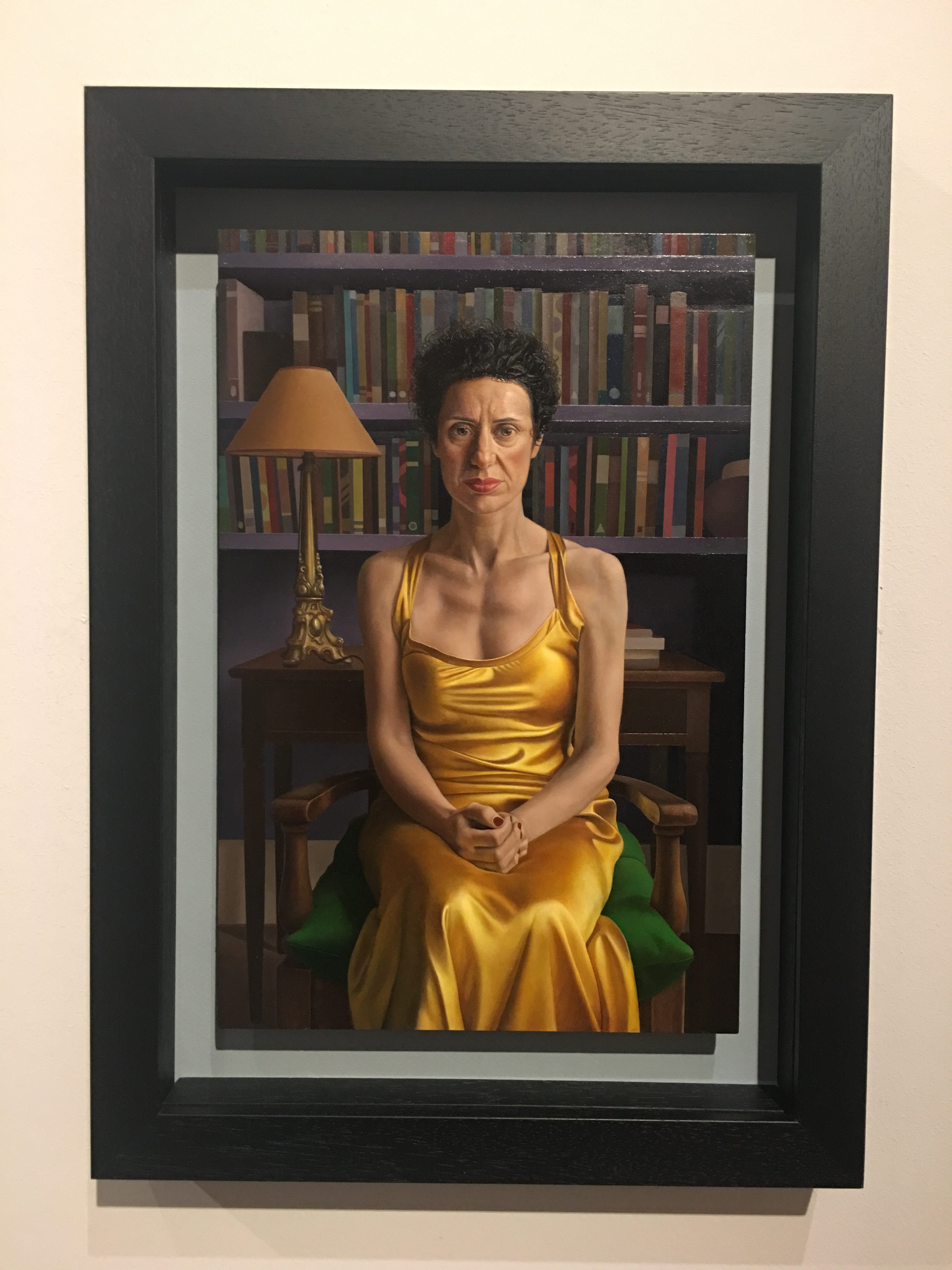
PEN VOGIER
John Burke
Oil on panel
The portrait is of the artist’s friend Pen Vogler, a writer, food historian and bibliophile. Vogler recreates recipes from previous eras to discover what the past might have tasted and felt like. Bruke wanted to explore the idea of evoking the past in the present by painting her in a vintage-style dress in her victorian house.

SOCIETY
Khushna Sulamam-Butt
Acrylic and oil on canvas
The portrait depicts a group of friends the artist made at the Ruskin school of Art. Sulaman-Butt says: ‘l attempted to convey a sense of sinister isolation. The subject exchange looks in strained silence, highlighting the unspoken discomfort in their differences.’
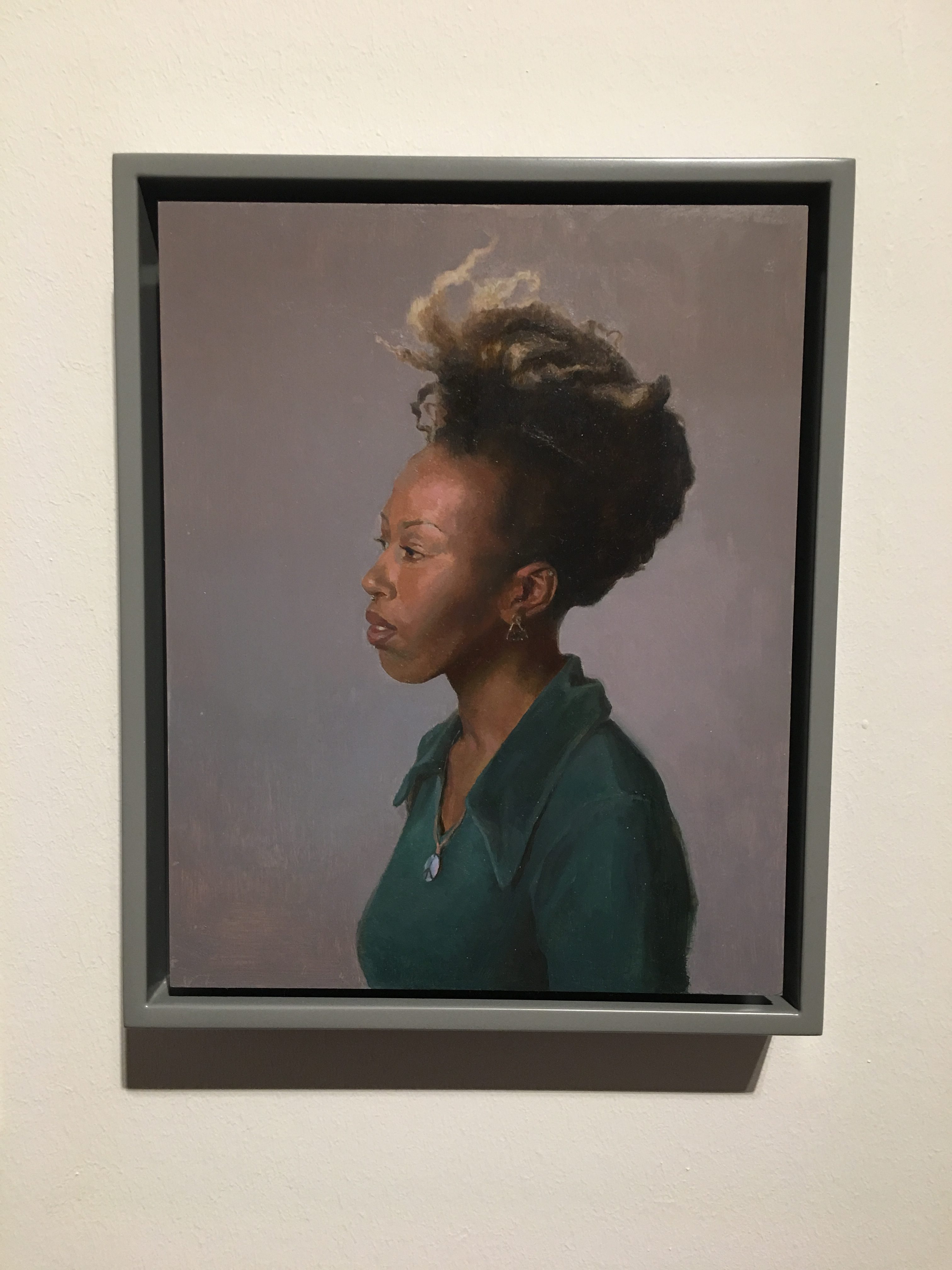
CORINNE
Anastasia Pollard
Oil ok board
The portrait is of the artist’s friend, Corinne Allen, a musician and songwriter. Pollard says: ‘I was struck by her passion and talent and subsequently asked her to sit for me’. The portrait was completed in a few sittings during which the women developed a lasting friendship.
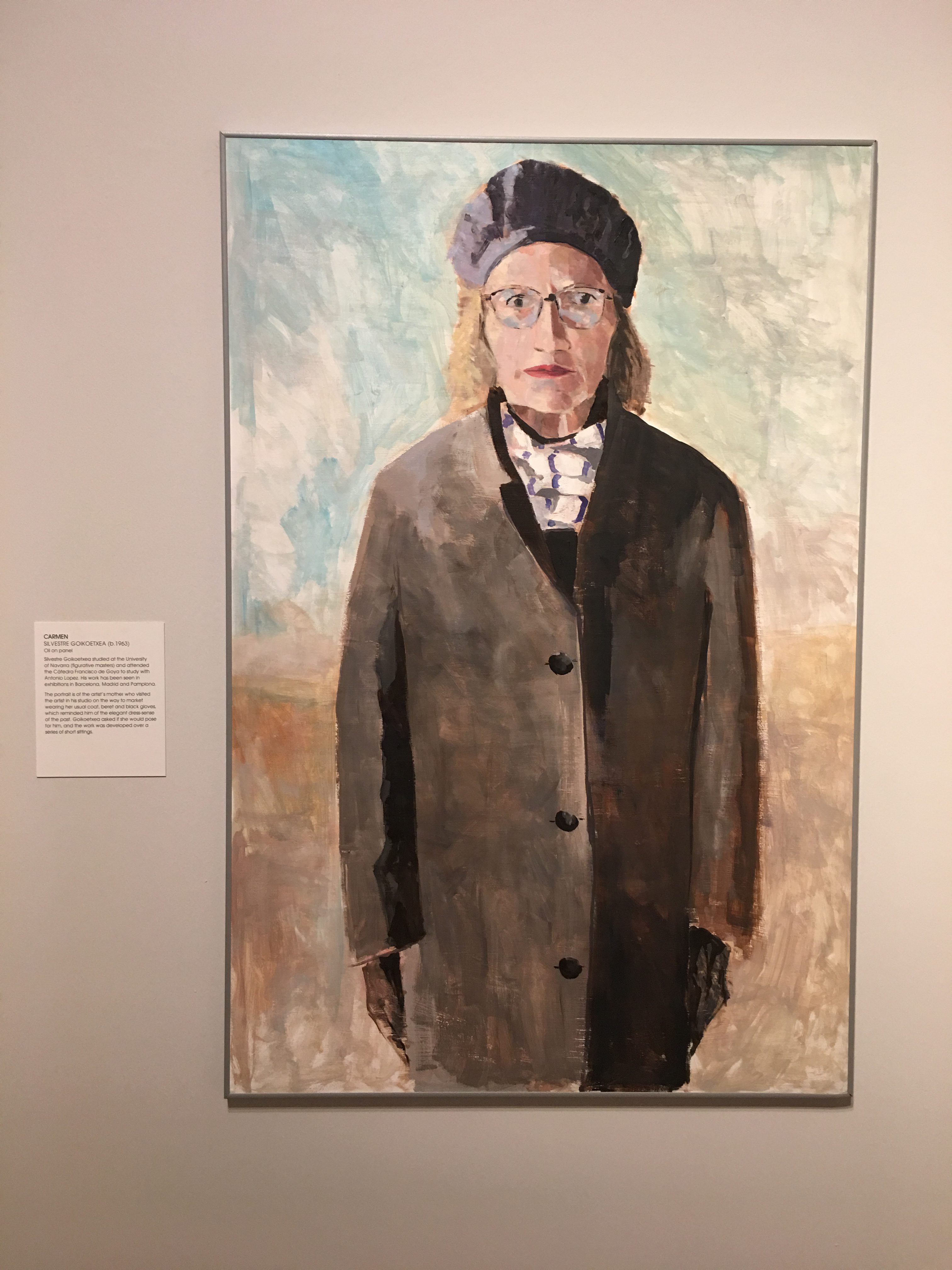
CARMEN
Silver Vestre Goikoetxea
Oil on panel
The portrait is of the artist’s mother who visited the artist in his studio on the way to market wearing her usual coat, beret and black gloves, which reminded him of the elegant dress-sense of the past. Goikoetxea asked if she would pose for him, and the work was developed over a series of short sittings.
Photos: Art Road
Notes: National Portrait Gallery
